
Kherrata
Kherrata is a town in northern Algeria.
Five thousand people gathered in the town of Kherrata, Bejaia Province to mark the two year anniversary of the Hirak protest movement. Demonstrations had been suspended because of the COVID-19 pandemic in Algeria.

Kherrata is a town in northern Algeria.

The Béjaïa Province is a province of Algeria in the Kabylie region. The province's capital city is Béjaïa, the terminus of the Béni Mansour-Bejaïa line.

The 2019–2021 Algerian protests, also called Revolution of Smiles or Hirak Movement, began on 16 February 2019, six days after Abdelaziz Bouteflika announced his candidacy for a fifth presidential term in a signed statement. These protests, without precedent since the Algerian Civil War, were peaceful and led the military to insist on Bouteflika's immediate resignation, which took place on 2 April 2019. By early May, a significant number of power-brokers close to the deposed administration, including the former president's younger brother Saïd, had been arrested.
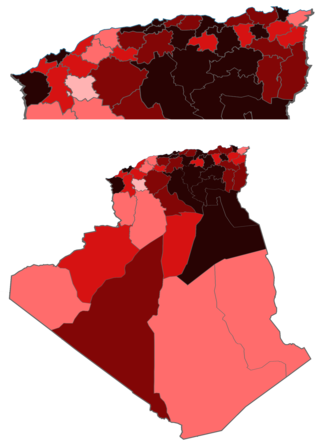
The COVID-19 pandemic in Algeria is part of the worldwide pandemic of coronavirus disease 2019 caused by severe acute respiratory syndrome coronavirus 2. The virus was confirmed to have spread to Algeria in February 2020. In December it was announced that Algeria intended to launch COVID-19 vaccinations in January 2021.
At least 91 people were killed and 190 others injured after a bomb hidden in a water tank exploded at a market in Hazara Town, Pakistan.
On 16 February 2013, at least 91 people were killed and 190 injured after a bomb hidden in a water tank exploded at a market in Hazara Town on the outskirts of Quetta, the capital city of Balochistan, Pakistan. Most of the victims were members of the predominantly Shia Twelver ethnic Hazara community, and authorities expected the death toll to rise due to the large number of serious injuries. The Lashkar-e-Jhangvi group claimed responsibility for the blast, the second major attack against the Shia Hazaras in a month.
Hazara Town is a lower- to middle-income area on the western outskirts of Quetta, Pakistan with a population of up to 2,500,000, of which an estimated two-thirds are ethnic Hazaras and the remaining portion are Pashtun and Baloch.
A bomb blast at a market in Hazara Town, Quetta, Pakistan kills more than 80 people and injures 190 others.
On 16 February 2013, at least 91 people were killed and 190 injured after a bomb hidden in a water tank exploded at a market in Hazara Town on the outskirts of Quetta, the capital city of Balochistan, Pakistan. Most of the victims were members of the predominantly Shia Twelver ethnic Hazara community, and authorities expected the death toll to rise due to the large number of serious injuries. The Lashkar-e-Jhangvi group claimed responsibility for the blast, the second major attack against the Shia Hazaras in a month.
Hazara Town is a lower- to middle-income area on the western outskirts of Quetta, Pakistan with a population of up to 2,500,000, of which an estimated two-thirds are ethnic Hazaras and the remaining portion are Pashtun and Baloch.
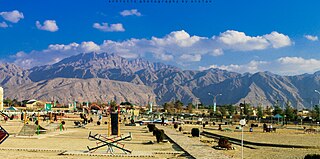
Quetta is the tenth most populous city in Pakistan with a population of over 1.1 million. It is situated in south-west of the country close to the International border with Afghanistan. It is the capital of the province of Balochistan where it is the largest city. Quetta is at an average elevation of 1,680 metres above sea level, making it Pakistan's only high-altitude major city. The city is known as the "Fruit Garden of Pakistan" due to the numerous fruit orchards in and around it, and the large variety of fruits and dried fruit products produced there.
The last Mobile army surgical hospital (MASH) is decommissioned by the United States Army.
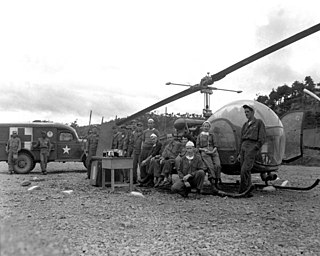
Mobile Army Surgical Hospitals were U.S. Army field hospital units conceptualized in 1946 as replacements for the World War II-era Auxiliary Surgical Group hospital units, which had become obsolete. MASH Units were in operation from the Korean War to the Gulf War before being phased out in the early 2000s. Each MASH unit had 60 beds, as well as surgical, nursing, and other enlisted and officer staff available at all times. MASH units filled a vital role in military medicine by providing support to army units upwards of 10,000 to 20,000 soldiers. These units had a low mortality rate compared to others, as the transportation time to hospitals was shorter, resulting in fewer patients dying within the "Golden Hour", the first hour after an injury is first sustained, which is referred to in trauma as the most important hour. The term was made famous in the novel, movie, and television series M*A*S*H, which depicted a fictional MASH unit. The U.S. Army deactivated the last MASH unit on February 16, 2006. The successor to the Mobile Army Surgical Hospital is the Combat Support Hospital.
The Kyoto Protocol, an extension to the United Nations Framework Convention on Climate Change, entered into force.

The Kyoto Protocol was an international treaty which extended the 1992 United Nations Framework Convention on Climate Change (UNFCCC) that commits state parties to reduce greenhouse gas emissions, based on the scientific consensus that (part one) global warming is occurring and (part two) that human-made CO2 emissions are driving it. The Kyoto Protocol was adopted in Kyoto, Japan, on 11 December 1997 and entered into force on 16 February 2005. There were 192 parties (Canada withdrew from the protocol, effective December 2012) to the Protocol in 2020.
The United Nations Framework Convention on Climate Change (UNFCCC) established an international environmental treaty to combat "dangerous human interference with the climate system", in part by stabilizing greenhouse gas concentrations in the atmosphere. It was signed by 154 states at the United Nations Conference on Environment and Development (UNCED), informally known as the Earth Summit, held in Rio de Janeiro from 3 to 14 June 1992. It established a Secretariat headquartered in Bonn, Germany, and entered into force on 21 March 1994.
The Kyoto Protocol comes into force, following its ratification by Russia.

The Kyoto Protocol was an international treaty which extended the 1992 United Nations Framework Convention on Climate Change (UNFCCC) that commits state parties to reduce greenhouse gas emissions, based on the scientific consensus that (part one) global warming is occurring and (part two) that human-made CO2 emissions are driving it. The Kyoto Protocol was adopted in Kyoto, Japan, on 11 December 1997 and entered into force on 16 February 2005. There were 192 parties (Canada withdrew from the protocol, effective December 2012) to the Protocol in 2020.
Ratification is a principal's approval of an act of its agent that lacked the authority to bind the principal legally. Ratification defines the international act in which a state indicates its consent to be bound to a treaty if the parties intended to show their consent by such an act. In the case of bilateral treaties, ratification is usually accomplished by exchanging the requisite instruments, and in the case of multilateral treaties, the usual procedure is for the depositary to collect the ratifications of all states, keeping all parties informed of the situation.
The National Hockey League cancels the entire 2004–05 regular season and playoffs.

The National Hockey League is a professional ice hockey league in North America comprising 32 teams—25 in the United States and 7 in Canada. It is considered to be the top ranked professional ice hockey league in the world, and is one of the four major professional sports leagues in the United States and Canada. The Stanley Cup, the oldest professional sports trophy in North America, is awarded annually to the league playoff champion at the end of each season. The NHL is the fifth-wealthiest professional sport league in the world by revenue, after the National Football League (NFL), Major League Baseball (MLB), the National Basketball Association (NBA), and the English Premier League (EPL).
The 2004–05 NHL lockout was a labor lockout that resulted in the cancellation of the National Hockey League (NHL) season, which would have been its 88th season of play.
Emery Worldwide Airlines Flight 17 crashes near Sacramento Mather Airport in Rancho Cordova, California, killing all three aboard.

Emery Worldwide Airlines Flight 17 was a regularly scheduled domestic cargo flight, flying from Reno to Dayton with an intermediate stopover at Rancho Cordova. On February 16, 2000, the DC-8 crashed onto an automobile salvage yard shortly after taking off from Sacramento Mather Airport, resulting in the deaths of all three crew members on board. The crew reported control problems during takeoff and attempted unsuccessfully to return to Mather airport.

Sacramento Mather Airport is a public airport 11 miles east of Sacramento, in Sacramento County, California, United States. It is on the site of Mather Air Force Base, which closed in 1993 pursuant to BRAC action.

Rancho Cordova is a city in Sacramento County, California, United States which was incorporated in 2003. It is part of the Sacramento Metropolitan Area. The population was 64,776 at the 2010 census. In 2010 and 2019, Rancho Cordova was named as a winner of the All-America City Award.
China Airlines Flight 676 crashes into a road and residential area near Chiang Kai-shek International Airport in Taiwan, killing all 196 aboard and seven more on the ground.
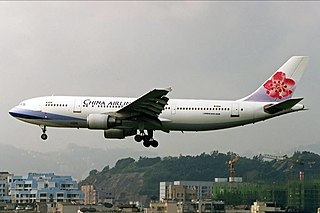
China Airlines Flight 676 was a scheduled international passenger flight. On Monday, 16 February 1998, the Airbus A300 jet airliner operating the flight crashed into a road and residential area in Tayuan, Taoyuan County, near Chiang Kai-shek International Airport, Taiwan.

Taiwan Taoyuan International Airport is an international airport serving Taipei and northern Taiwan. Located about 40 km (25 mi) west of Taipei in Dayuan District, Taoyuan, the airport is Taiwan's largest. It was also the busiest airport in Taiwan before the COVID-19 pandemic which began in 2020. It is operated by the Taoyuan International Airport Corporation. In 2016, it was ranked the best airport for its size in the Asia-Pacific region by Airports Council International.

Taiwan, officially the Republic of China (ROC), is a country in East Asia, at the junction of the East and South China Seas in the northwestern Pacific Ocean, with the People's Republic of China (PRC) to the northwest, Japan to the northeast, and the Philippines to the south. The territories controlled by the ROC consist of 168 islands, with a combined area of 36,193 square kilometres (13,974 sq mi). The main island of Taiwan, also known as Formosa, has an area of 35,808 square kilometres (13,826 sq mi), with mountain ranges dominating the eastern two-thirds and plains in the western third, where its highly urbanised population is concentrated. The capital, Taipei, forms along with New Taipei City and Keelung the largest metropolitan area of Taiwan. Other major cities include Taoyuan, Taichung, Tainan, and Kaohsiung. With around 23.9 million inhabitants, Taiwan is among the most densely populated countries in the world.
Eleven people died in a train collision in Silver Spring, Maryland, leading to the creation of comprehensive U.S. federal rules for the design of passenger cars.
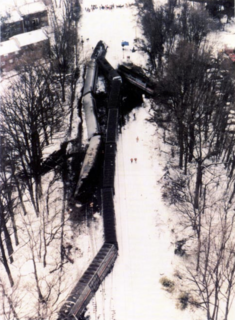
On February 16, 1996, a MARC commuter train collided with Amtrak's Capitol Limited passenger train in Silver Spring, Maryland, United States, killing three crew and eight passengers on the MARC train; a further eleven passengers on the same train and fifteen passengers and crew on the Capitol Limited were injured. Total damage was estimated at $7.5 million.

Silver Spring is a census-designated place (CDP) in southeastern Montgomery County, Maryland, United States, near Washington, D.C. Although officially unincorporated, in practice it is an edge city, with a population of 81,015 at the 2020 census, making it the fifth-most populous place in Maryland after Baltimore, Columbia, Germantown, and Waldorf.
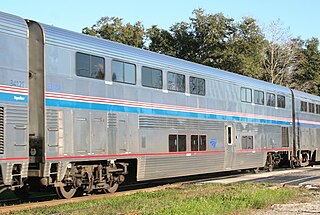
A passenger railroad car or passenger car, also called a passenger carriage, passenger coach, or passenger bogie (India) is a railroad car that is designed to carry passengers. The term passenger car can also be associated with a sleeping car, a baggage car, a dining car, railway post office and prisoner transport cars.
A Chicago-bound Amtrak train, the Capitol Limited, collides with a MARC commuter train bound for Washington, D.C., killing 11 people.

The National Railroad Passenger Corporation, doing business as Amtrak, is the national passenger railroad company of the United States. It operates inter-city rail service in 46 of the 48 contiguous U.S. States and nine cities in Canada. Amtrak is a portmanteau of the words America and trak, the latter itself a sensational spelling of track.

The Capitol Limited is a daily Amtrak train between Washington, D.C., and Chicago, running 764 miles (1,230 km) via Pittsburgh and Cleveland. Service began in 1981 and was named after the Baltimore and Ohio Railroad's Capitol Limited which ended in 1971 upon the formation of Amtrak. It carries the Amtrak train numbers 29 and 30, which were previously assigned to the discontinued National Limited.

On February 16, 1996, a MARC commuter train collided with Amtrak's Capitol Limited passenger train in Silver Spring, Maryland, United States, killing three crew and eight passengers on the MARC train; a further eleven passengers on the same train and fifteen passengers and crew on the Capitol Limited were injured. Total damage was estimated at $7.5 million.

MARC is a commuter rail system in the Baltimore–Washington metropolitan area. MARC is administered by the Maryland Transit Administration (MTA) and operated under contract by Alstom and Amtrak on track owned by CSX Transportation (CSXT) and Amtrak. In 2021, the system had a ridership of 1,291,900, or about 8,900 per weekday as of the second quarter of 2022, much less then the pre-pandemic daily ridership of 40,000 per weekday.
Nicaraguan Contras leader Enrique Bermúdez is assassinated in Managua.

Nicaragua, officially the Republic of Nicaragua, is the largest country in the Central American isthmus, bordered by Honduras to the northwest, the Caribbean to the east, Costa Rica to the south, and the Pacific Ocean to the southwest. Managua is the country's capital and largest city. As of 2015, it was estimated to be the second largest city in Central America. The multi-ethnic population of six million includes people of mestizo, indigenous, European and African heritage. The main language is Spanish. Indigenous tribes on the Mosquito Coast speak their own languages and English.

The Contras were the various U.S.-backed and funded right-wing rebel groups that were active from 1979 to 1990 in opposition to the Marxist Sandinista Junta of National Reconstruction Government in Nicaragua, which came to power in 1979 following the Nicaraguan Revolution. Among the separate contra groups, the Nicaraguan Democratic Force (FDN) emerged as the largest by far. In 1987, virtually all Contra organizations were united, at least nominally, into the Nicaraguan Resistance.

Enrique Bermúdez Varela, known as Comandante 380, was a Nicaraguan soldier and rebel who founded and commanded the Nicaraguan Contras. In this capacity, he became a central global figure in one of the most prominent conflicts of the Cold War.

Managua is the capital and largest city of Nicaragua, and the center of an eponymous department. Located on the southwestern shore of Lake Managua and inside the Managua Department, it has an estimated population of 1,055,247 in 2020 within the city's administrative limits and a population of 1,401,687 in the metropolitan area, which additionally includes the municipalities of Ciudad Sandino, El Crucero, Ticuantepe and Tipitapa.
The Soviet liner MS Mikhail Lermontov runs aground in the Marlborough Sounds, New Zealand.

The Soviet Union, officially the Union of Soviet Socialist Republics (USSR), was a transcontinental country that spanned much of Eurasia from 1922 to 1991. A flagship communist state, it was nominally a federal union of fifteen national republics; in practice, both its government and its economy were highly centralized until its final years. It was a one-party state governed by the Communist Party of the Soviet Union, with the city of Moscow serving as its capital as well as that of its largest and most populous republic: the Russian SFSR. Other major cities included Leningrad, Kiev, Minsk, Tashkent, Alma-Ata, and Novosibirsk. It was the largest country in the world, covering over 22,402,200 square kilometres (8,649,500 sq mi) and spanning eleven time zones.

MS Mikhail Lermontov was an ocean liner owned by the Soviet Union's Baltic Shipping Company, built in 1972 by V.E.B. Mathias-Thesen Werft, Wismar, East Germany. It was later converted into a cruise ship. On 16 February 1986 it collided with rocks near Port Gore in the Marlborough Sounds, New Zealand, and sank, claiming the life of one of its crew members.
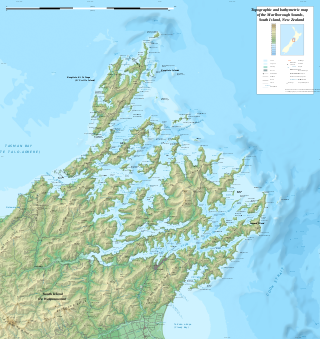
The Marlborough Sounds are an extensive network of sea-drowned valleys at the northern end of the South Island of New Zealand. The Marlborough Sounds were created by a combination of land subsidence and rising sea levels. According to Māori mythology, the sounds are the prows of the many sunken waka of Aoraki.
China Airlines Flight 2265 crashes into the Pacific Ocean near Penghu Airport in Taiwan, killing all 13 aboard.

On 16 February 1986 a Boeing 737-281 operating China Airlines Flight 2265 went missing after executing a go-around after touching down at Penghu Airport, Taiwan. It was discovered several weeks later on the seabed, 19 kilometres north of the island. All 6 passengers and 7 crew members were confirmed dead.

Penghu Airport, formerly Magong Airport, is a domestic airport in Huxi, Penghu County, Taiwan. With 2,380,265 passengers in 2017, it is the fifth-busiest airport in Taiwan, The ROC Air Force also has Magong Air Base here.

Taiwan, officially the Republic of China (ROC), is a country in East Asia, at the junction of the East and South China Seas in the northwestern Pacific Ocean, with the People's Republic of China (PRC) to the northwest, Japan to the northeast, and the Philippines to the south. The territories controlled by the ROC consist of 168 islands, with a combined area of 36,193 square kilometres (13,974 sq mi). The main island of Taiwan, also known as Formosa, has an area of 35,808 square kilometres (13,826 sq mi), with mountain ranges dominating the eastern two-thirds and plains in the western third, where its highly urbanised population is concentrated. The capital, Taipei, forms along with New Taipei City and Keelung the largest metropolitan area of Taiwan. Other major cities include Taoyuan, Taichung, Tainan, and Kaohsiung. With around 23.9 million inhabitants, Taiwan is among the most densely populated countries in the world.
The Lebanese Shia political and paramilitary organization Hezbollah released a manifesto describing its ideology and goals.
Shīʿa Islam or Shīʿīsm is the second-largest branch of Islam. It holds that the Islamic prophet Muhammad designated ʿAlī ibn Abī Ṭālib as his successor (khalīfa) and the Imam after him, most notably at the event of Ghadir Khumm, but was prevented from succeeding Muhammad as the leader of the Muslims as a result of the choice made by some of Muhammad's other companions (ṣaḥāba) at Saqifah. This view primarily contrasts with that of Sunnī Islam, whose adherents believe that Muhammad did not appoint a successor before his death and consider Abū Bakr, who was appointed caliph by a group of senior Muslims at Saqifah, to be the first rightful (rāshidūn) caliph after Muhammad. Adherents of Shīʿa Islam are called Shīʿa Muslims, Shīʿītes, or simply Shīʿa or Shia.
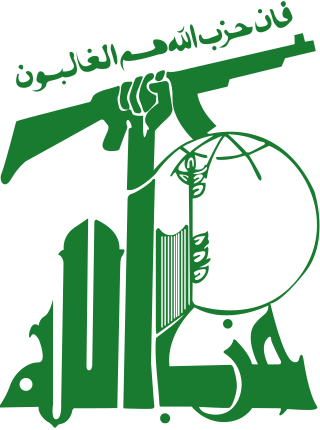
Hezbollah is a Lebanese Shia Islamist political party and militant group, led by its Secretary-General Hassan Nasrallah since 1992. Hezbollah's paramilitary wing is the Jihad Council, and its political wing is the Loyalty to the Resistance Bloc party in the Lebanese Parliament.
The ideology of Hezbollah has been summarized as Shiite radicalism. Hezbollah was largely formed with the aid of the Ayatollah Ruhollah Khomeini's followers in the early 1980s in order to spread the Islamic Revolution and follows a distinct version of Islamic Shia ideology (Valiyat al-faqih or Guardianship of the Islamic Jurists) developed by Ayatollah Khomeini, leader of the "Islamic Revolution" in Iran.
Hezbollah is founded.

Hezbollah is a Lebanese Shia Islamist political party and militant group, led by its Secretary-General Hassan Nasrallah since 1992. Hezbollah's paramilitary wing is the Jihad Council, and its political wing is the Loyalty to the Resistance Bloc party in the Lebanese Parliament.
The Ash Wednesday bushfires burned over half a million acres (over 2,000 km2) each in both South Australia and Victoria, killing 75 people and injuring 2,676 others.

The Ash Wednesday bushfires, known in South Australia as Ash Wednesday II, were a series of bushfires that occurred in south-eastern Australia on 16 February 1983, which was Ash Wednesday. Within twelve hours, more than 180 fires fanned by hot winds of up to 110 km/h (68 mph) caused widespread destruction across the states of Victoria and South Australia. Years of severe drought and extreme weather combined to create one of Australia's worst fire days in a century. The fires were the deadliest bushfire in Australian history until the Black Saturday bushfires in 2009.

South Australia is a state in the southern central part of Australia. It covers some of the most arid parts of the country. With a total land area of 984,321 square kilometres (380,048 sq mi), it is the fourth-largest of Australia's states and territories by area, and second smallest state by population. It has a total of 1.8 million people. Its population is the second most highly centralised in Australia, after Western Australia, with more than 77 percent of South Australians living in the capital Adelaide, or its environs. Other population centres in the state are relatively small; Mount Gambier, the second-largest centre, has a population of 33,233.

Victoria is a state in southeastern Australia. It is the second-smallest state with a land area of 227,444 km2 (87,817 sq mi), the second most populated state with a population of over 6.5 million, and the most densely populated state in Australia. Victoria is bordered with New South Wales to the north and South Australia to the west, and is bounded by the Bass Strait to the south, the Great Australian Bight portion of the Southern Ocean to the southwest, and the Tasman Sea to the southeast. The state encompasses a range of climates and geographical features from its temperate coastal and central regions to the Victorian Alps in the northeast and the semi-arid north-west.
The Ash Wednesday bushfires in Victoria and South Australia kill 75.

The Ash Wednesday bushfires, known in South Australia as Ash Wednesday II, were a series of bushfires that occurred in south-eastern Australia on 16 February 1983, which was Ash Wednesday. Within twelve hours, more than 180 fires fanned by hot winds of up to 110 km/h (68 mph) caused widespread destruction across the states of Victoria and South Australia. Years of severe drought and extreme weather combined to create one of Australia's worst fire days in a century. The fires were the deadliest bushfire in Australian history until the Black Saturday bushfires in 2009.

Victoria is a state in southeastern Australia. It is the second-smallest state with a land area of 227,444 km2 (87,817 sq mi), the second most populated state with a population of over 6.5 million, and the most densely populated state in Australia. Victoria is bordered with New South Wales to the north and South Australia to the west, and is bounded by the Bass Strait to the south, the Great Australian Bight portion of the Southern Ocean to the southwest, and the Tasman Sea to the southeast. The state encompasses a range of climates and geographical features from its temperate coastal and central regions to the Victorian Alps in the northeast and the semi-arid north-west.

South Australia is a state in the southern central part of Australia. It covers some of the most arid parts of the country. With a total land area of 984,321 square kilometres (380,048 sq mi), it is the fourth-largest of Australia's states and territories by area, and second smallest state by population. It has a total of 1.8 million people. Its population is the second most highly centralised in Australia, after Western Australia, with more than 77 percent of South Australians living in the capital Adelaide, or its environs. Other population centres in the state are relatively small; Mount Gambier, the second-largest centre, has a population of 33,233.
The first computer bulletin board system is created (CBBS in Chicago).

A bulletin board system (BBS), also called computer bulletin board service (CBBS), is a computer server running software that allows users to connect to the system using a terminal program. Once logged in, the user can perform functions such as uploading and downloading software and data, reading news and bulletins, and exchanging messages with other users through public message boards and sometimes via direct chatting. In the early 1980s, message networks such as FidoNet were developed to provide services such as NetMail, which is similar to internet-based email.

CBBS was a computer program created by Ward Christensen and Randy Suess to allow them and other computer hobbyists to exchange information between each other.

Chicago is the most populous city in the U.S. state of Illinois and the third-most populous in the United States, after New York City and Los Angeles. With a population of 2,746,388 in the 2020 census, it is also the most populous city in the Midwestern United States. As the seat of Cook County, the city is the center of the Chicago metropolitan area, one of the largest in the world.
In Haleyville, Alabama, the first 9-1-1 emergency telephone system goes into service.

Haleyville is a city in Winston and Marion counties in the U.S. state of Alabama. It incorporated on February 28, 1889. Most of the city is located in Winston County, with a small portion of the western limits entering Marion County. Haleyville was originally named "Davis Cross Roads", having been established at the crossroads of Byler Road and the Illinois Central Railroad. At the 2020 census the population was 4,361, up from 4,173 at the 2010 census.

9-1-1, usually written 911, is an emergency telephone number for the United States, Canada, Mexico, Panama, Palau, Argentina, Philippines, Jordan, as well as the North American Numbering Plan (NANP), one of eight N11 codes. Like other emergency numbers around the world, this number is intended for use in emergency circumstances only. Using it for any other purpose is a crime in most jurisdictions.
Civil Air Transport Flight 010 crashes near Shongshan Airport in Taiwan, killing 21 of the 63 people on board and one more on the ground.

Civil Air Transport Flight 010 was a passenger flight from the now-closed Kai Tak Airport in Hong Kong to Songshan Airport in Taipei, Taiwan. The flight was operated by a Boeing 727-92C with registration B-1018 and named "Super Cuihua." On 16 February 1968, the aircraft crashed into a Hunan village in Linkou Township, Taipei County, killing 21 of the 63 people on board as well as one person on the ground. 42 people were injured.
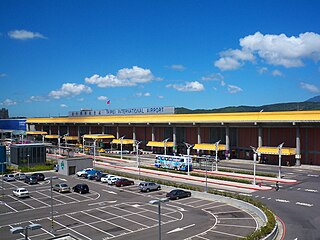
Taipei Songshan Airport is a regional airport and military airbase located in Songshan District, Taipei, Taiwan. The airport covers an area of 182 hectares.
The Great Sheffield Gale impacts the United Kingdom, killing nine people; the city of Sheffield is devastated, with 150,000 homes damaged.

The Great Sheffield Gale is the name given to an intense European windstorm which crossed the United Kingdom in mid-February 1962, devastating the city of Sheffield in the West Riding of Yorkshire. Nine people were killed across the country, including four in Sheffield; damage in the city was on a widespread and severe scale never before witnessed in a major British city from a European windstorm, and only later matched by the effects of the 1968 Scotland storm in Glasgow.

The United Kingdom of Great Britain and Northern Ireland, commonly known as the United Kingdom (UK) or Britain, is a country in Europe, off the north-western coast of the continental mainland. It comprises England, Scotland, Wales and Northern Ireland. The United Kingdom includes the island of Great Britain, the north-eastern part of the island of Ireland, and many smaller islands within the British Isles. Northern Ireland shares a land border with the Republic of Ireland; otherwise, the United Kingdom is surrounded by the Atlantic Ocean, the North Sea, the English Channel, the Celtic Sea and the Irish Sea. The total area of the United Kingdom is 242,495 square kilometres (93,628 sq mi), with an estimated 2020 population of more than 67 million people.
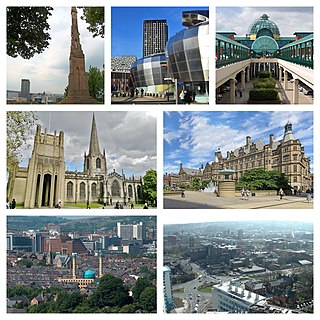
Sheffield is a city in South Yorkshire, England, whose name derives from the River Sheaf which runs through it. The city serves as the administrative centre of the City of Sheffield. It is historically part of the West Riding of Yorkshire and some of its southern suburbs were transferred from Derbyshire to the city council. It is the largest settlement in South Yorkshire.
Flooding in the coastal areas of West Germany kills 315 and destroys the homes of about 60,000 people.
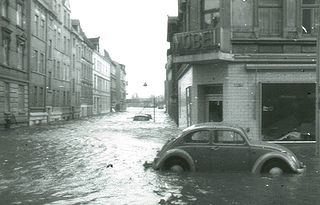
The North Sea flood of 1962 was a natural disaster affecting mainly the coastal regions of Germany and in particular the city of Hamburg in the night from 16 February to 17 February 1962. In total, the homes of about 60,000 people were destroyed, and the death toll amounted to 315 in Hamburg. The extratropical cyclone responsible for the flooding had previously crossed the United Kingdom as the Great Sheffield Gale, devastating the city of Sheffield and killing nine people.
The DuSable Museum, the first museum dedicated to the study and conservation of African American history, culture, and art, was chartered.

The DuSable Black History Museum and Education Center, formerly the DuSable Museum of African American History, is a museum in Chicago that is dedicated to the study and conservation of African-American history, culture, and art. It was founded in 1961 by Margaret Taylor-Burroughs, her husband Charles Burroughs, Gerard Lew, Eugene Feldman, Bernard Goss, Marian M. Hadley, and others. They established the museum to celebrate black culture, at the time overlooked by most museums and academic establishments. The museum has an affiliation with the Smithsonian Institution.
Explorer program: Explorer 9 (S-56a) is launched.

The Explorers program is a NASA exploration program that provides flight opportunities for physics, geophysics, heliophysics, and astrophysics investigations from space. Launched in 1958, Explorer 1 was the first spacecraft of the United States to achieve orbit. Over 90 space missions have been launched since. Starting with Explorer 6, it has been operated by NASA, with regular collaboration with a variety of other institutions, including many international partners.

Explorer 9, known as S-56A before launch, was a NASA satellite which was launched in February 1961 to study the density and composition of the upper thermosphere and lower exosphere. It was a reflight of the failed Explorer S-56 mission, and consisted of a 7 kg (15 lb), 3.66 m (12.0 ft) balloon which was deployed into a medium Earth orbit. The mission was conducted by NASA's Langley Research Center.
The U.S. Navy submarine USS Triton begins Operation Sandblast, setting sail from New London, Connecticut, to begin the first submerged circumnavigation of the globe.

USS Triton (SSRN/SSN-586), the only member of her class, was a nuclear powered radar picket submarine in the United States Navy. She had the distinction of being the only Western submarine powered by two nuclear reactors. Triton was the second submarine and the fourth vessel of the United States Navy to be named for the Greek god Triton, At the time of her commissioning in 1959, Triton was the largest, most powerful, and most expensive submarine ever built at $109 million excluding the cost of nuclear fuel and reactors.

Operation Sandblast was the code name for the first submerged circumnavigation of the world, executed by the United States Navy nuclear-powered radar picket submarine USS Triton (SSRN-586) in 1960 under the command of Captain Edward L. Beach Jr.

New London is a seaport city and a port of entry on the northeast coast of the United States, located at the mouth of the Thames River in New London County, Connecticut. It was one of the world's three busiest whaling ports for several decades beginning in the early 19th century, along with Nantucket and New Bedford, Massachusetts. The wealth that whaling brought into the city furnished the capital to fund much of the city's present architecture. The city subsequently became home to other shipping and manufacturing industries, but it has gradually lost most of its industrial heart.
Fidel Castro was sworn in as Prime Minister of Cuba, beginning his decades-long rule over the country.

Fidel Alejandro Castro Ruz was a Cuban revolutionary and politician who was the leader of Cuba from 1959 to 2008, serving as the prime minister of Cuba from 1959 to 1976 and president from 1976 to 2008. Ideologically a Marxist–Leninist and Cuban nationalist, he also served as the first secretary of the Communist Party of Cuba from 1961 until 2011. Under his administration, Cuba became a one-party communist state; industry and business were nationalized, and state socialist reforms were implemented throughout society.
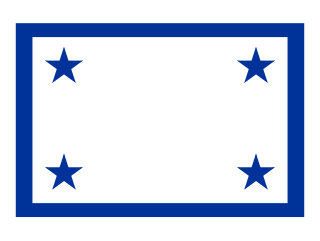
The Prime Minister of Cuba, officially known as the President of the Council of Ministers between 1976 and 2019, is the head of government of Cuba and the chairman of the Council of Ministers (cabinet). The Prime Minister is the third-highest office in Cuba, after the First Secretary of the Communist Party of Cuba and the President of Cuba, and the second-highest state office.
Fidel Castro becomes Premier of Cuba after dictator Fulgencio Batista was overthrown on January 1.

Fidel Alejandro Castro Ruz was a Cuban revolutionary and politician who was the leader of Cuba from 1959 to 2008, serving as the prime minister of Cuba from 1959 to 1976 and president from 1976 to 2008. Ideologically a Marxist–Leninist and Cuban nationalist, he also served as the first secretary of the Communist Party of Cuba from 1961 until 2011. Under his administration, Cuba became a one-party communist state; industry and business were nationalized, and state socialist reforms were implemented throughout society.

Cuba, officially the Republic of Cuba, is an island country comprising the island of Cuba, as well as Isla de la Juventud and several minor archipelagos. Cuba is located where the northern Caribbean Sea, Gulf of Mexico, and Atlantic Ocean meet. Cuba is located east of the Yucatán Peninsula (Mexico), south of both the American state of Florida and the Bahamas, west of Hispaniola, and north of both Jamaica and the Cayman Islands. Havana is the largest city and capital; other major cities include Santiago de Cuba and Camagüey. The official area of the Republic of Cuba is 109,884 km2 (42,426 sq mi) but a total of 350,730 km² including the exclusive economic zone. Cuba is the second-most populous country in the Caribbean after Haiti, with over 11 million inhabitants.

Fulgencio Batista y Zaldívar was a Cuban military officer and politician who served as the elected president of Cuba from 1940 to 1944 and as its U.S.-backed military dictator from 1952 to 1959, when he was overthrown by the Cuban Revolution.
World War II: American forces land on Corregidor Island in the Philippines.
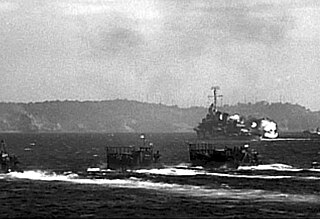
The Battle for the Recapture of Corregidor, which occurred from the 16th to the 26th of February, 1945, pitted American forces against the defending Japanese garrison on the island fortress. The Japanese had captured the bastion from the United States Army Forces in the Far East during their 1942 invasion.

Corregidor is an island located at the entrance of Manila Bay in the southwestern part of Luzon in the Philippines, and is considered part of the Province of Cavite. Due to this location, Corregidor has historically been fortified with coastal artillery batteries to defend the entrance of Manila Bay and Manila itself from attacks by enemy warships. Located 48 kilometres (30 mi) inland, Manila is the nation's largest city and has been the most important seaport in the Philippines for centuries, from the colonial rule of Spain, Japan, and the United States, up through the establishment of the Third Philippine Republic in 1946.

The Philippines, officially the Republic of the Philippines, is an archipelagic country in Southeast Asia. It is situated in the western Pacific Ocean and consists of around 7,641 islands that are broadly categorized under three main geographical divisions from north to south: Luzon, Visayas, and Mindanao. The Philippines is bounded by the South China Sea to the west, the Philippine Sea to the east, and the Celebes Sea to the southwest. It shares maritime borders with Taiwan to the north, Japan to the northeast, Palau to the east and southeast, Indonesia to the south, Malaysia to the southwest, Vietnam to the west, and China to the northwest. The Philippines covers an area of 300,000 km2 (120,000 sq mi) and, as of 2021, it had a population of around 109 million people, making it the world's thirteenth-most populous country. The Philippines has diverse ethnicities and cultures throughout its islands. Manila is the country's capital, while the largest city is Quezon City; both lie within the urban area of Metro Manila.
The Alaska Equal Rights Act of 1945, the first anti-discrimination law in the United States, was signed into law.
The Alaska Equal Rights Act of 1945 was the first state or territorial anti-discrimination law enacted in the United States in the 20th century. The law, signed on February 16, 1945, prevents and criminalizes discrimination against individuals in public areas based on race. The law came about after Alaska Natives fought against segregation and other forms of discrimination in Alaska.

Anti-discrimination law or non-discrimination law refers to legislation designed to prevent discrimination against particular groups of people; these groups are often referred to as protected groups or protected classes. Anti-discrimination laws vary by jurisdiction with regard to the types of discrimination that are prohibited, and also the groups that are protected by that legislation. Commonly, these types of legislation are designed to prevent discrimination in employment, housing, education, and other areas of social life, such as public accommodations. Anti-discrimination law may include protections for groups based on sex, age, race, ethnicity, nationality, disability, mental illness or ability, sexual orientation, gender, gender identity/expression, sex characteristics, religion, creed, or individual political opinions.
World War II: Norwegian commandos destroyed a factory to prevent the German nuclear weapon project from acquiring heavy water.

World War II or the Second World War, often abbreviated as WWII or WW2, was a world war that lasted from 1939 to 1945. It involved the vast majority of the world's countries—including all of the great powers—forming two opposing military alliances: the Allies and the Axis powers. World War II was a total war that directly involved more than 100 million personnel from more than 30 countries.

The Norwegian heavy water sabotage was a series of Allied-led efforts to halt German heavy water production via hydroelectric plants in Nazi Germany-occupied Norway during World War II, involving both Norwegian commandos and Allied bombing raids. During the war, the Allies sought to inhibit the German development of nuclear weapons with the removal of heavy water and the destruction of heavy-water production plants. The Norwegian heavy water sabotage was aimed at the 60 MW Vemork power station at the Rjukan waterfall in Telemark.

The Uranverein or Uranprojekt was the name given to the project in Germany to research nuclear technology, including nuclear weapons and nuclear reactors, during World War II. It went through several phases of work, but in the words of historian Mark Walker, it was ultimately "frozen at the laboratory level" with the "modest goal" to "build a nuclear reactor which could sustain a nuclear fission chain reaction for a significant amount of time and to achieve the complete separation of at least tiny amount of the uranium isotopes." The scholarly consensus is that it failed to achieve these goals, and that despite fears at the time, the Germans had never been close to producing nuclear weapons.

Heavy water is a form of water that contains only deuterium rather than the common hydrogen-1 isotope that makes up most of the hydrogen in normal water. The presence of the heavier hydrogen isotope gives the water different nuclear properties, and the increase in mass gives it slightly different physical and chemical properties when compared to normal water.
World War II: In the early phases of the Third Battle of Kharkov, Red Army troops re-enter the city.

The Third Battle of Kharkov was a series of battles on the Eastern Front of World War II, undertaken by Army Group South of Nazi Germany against the Soviet Red Army, around the city of Kharkov between 19 February and 15 March 1943. Known to the German side as the Donets Campaign, and in the Soviet Union as the Donbas and Kharkov operations, the German counterstrike led to the recapture of the cities of Kharkov and Belgorod.

The Workers' and Peasants' Red Army, often shortened to the Red Army, was the army and air force of the Russian Soviet Federative Socialist Republic and, after 1922, the Union of Soviet Socialist Republics. The army was established in January 1918. The Bolsheviks raised an army to oppose the military confederations of their adversaries during the Russian Civil War. Starting in February 1946, the Red Army, along with the Soviet Navy, embodied the main component of the Soviet Armed Forces; taking the official name of "Soviet Army", until its dissolution in 1991.
World War II: In Athens, the Greek People's Liberation Army is established
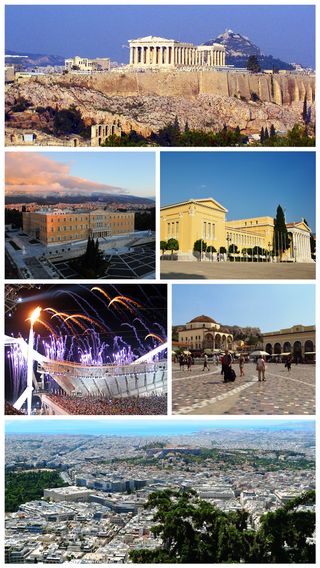
Athens is both the capital and largest city of Greece. With a population close to four million, it is also the seventh largest city in the European Union. Athens dominates and is the capital of the Attica region and is one of the world's oldest cities, with its recorded history spanning over 3,400 years and its earliest human presence beginning somewhere between the 11th and 7th millennia BC.
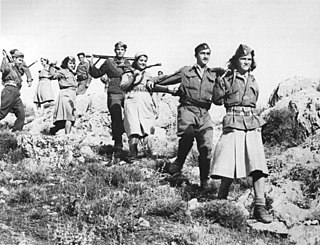
The Greek People's Liberation Army (Greek: Ελληνικός Λαϊκός Απελευθερωτικός Στρατός, Ellinikós Laïkós Apeleftherotikós Stratós was the military arm of the left-wing National Liberation Front during the period of the Greek resistance until February 1945, when, following the Dekemvriana clashes and the Varkiza Agreement, it was disarmed and disbanded. ELAS was the largest and most significant of the military organizations of the Greek resistance.
World War II: Attack on Aruba, first World War II German shots fired on a land based object in the Americas.

The Attack on Aruba was an attack on oil installations and tankers by Axis submarines during World War II. On 16 February 1942, a German U-boat attacked the small Dutch island of Aruba. Other submarines patrolled the area for shipping and they sank or damaged tankers. Aruba was home to two of the largest oil refineries in the world during the war against the Axis powers, the Arend Petroleum Maatschappij, situated near the Oranjestad harbor, and the Lago Oil and Transport Company at the San Nicolas harbor. The attack resulted in the disruption of vital Allied fuel production.
World War II: Altmark incident: The German tanker Altmark is boarded by sailors from the British destroyer HMS Cossack. A total of 299 British prisoners are freed.

World War II or the Second World War, often abbreviated as WWII or WW2, was a world war that lasted from 1939 to 1945. It involved the vast majority of the world's countries—including all of the great powers—forming two opposing military alliances: the Allies and the Axis powers. World War II was a total war that directly involved more than 100 million personnel from more than 30 countries.

The Altmark incident was a naval incident of World War II between British destroyers and the German tanker Altmark, which happened on 16–17 February 1940. It took place in what were, at that time, neutral Norwegian waters. On board the Altmark were roughly 300 Allied prisoners, whose ships had been sunk by the pocket battleship Graf Spee in the Southern Atlantic Ocean.
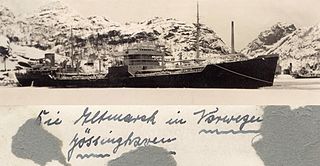
Altmark was a German oil tanker and supply vessel, one of five of a class built between 1937 and 1939. She is best known for her support of the German commerce raider, the "pocket battleship" Admiral Graf Spee and her subsequent involvement in the "Altmark Incident". In 1940 she was renamed the Uckermark and used as supply tanker for the battleships Scharnhorst and Gneisenau during Operation Berlin before sailing to Japan on September 1942 as a blockade breaker.
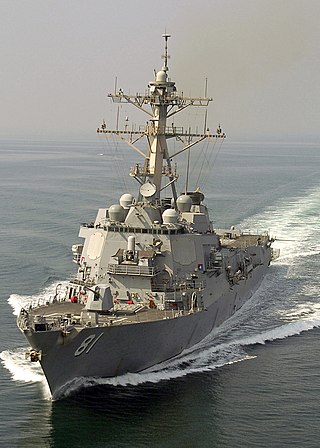
In naval terminology, a destroyer is a fast, manoeuvrable, long-endurance warship intended to escort larger vessels in a fleet, convoy or battle group and defend them against powerful short range attackers. They were originally developed in 1885 by Fernando Villaamil for the Spanish Navy as a defense against torpedo boats, and by the time of the Russo-Japanese War in 1904, these "torpedo boat destroyers" (TBDs) were "large, swift, and powerfully armed torpedo boats designed to destroy other torpedo boats". Although the term "destroyer" had been used interchangeably with "TBD" and "torpedo boat destroyer" by navies since 1892, the term "torpedo boat destroyer" had been generally shortened to simply "destroyer" by nearly all navies by the First World War.
Six ships of the Royal Navy have borne the name HMS Cossack, after the Cossack people of Eastern Europe, whilst another was begun but was cancelled while building:HMS Cossack (1806) was a 22-gun sixth-rate post-ship, begun under the name Pandour in 1805, but renamed before being launched in 1806. She was broken up in 1816. HMS Cossack was to have been a steam gunvessel, laid down at Portsmouth Dockyard in 1846, but cancelled in May 1849. HMS Cossack (1854) was ordered as the Russian ship Witjas, a wood screw corvette building on the Thames at Northfleet, but the British government seized her while she was under construction in 1854; she was sold in 1875. HMS Cossack (1886) was an Archer-class torpedo cruiser launched in 1886 and sold in 1905. HMS Cossack (1907) was a Tribal-class destroyer launched in 1907 and sold in 1919. HMS Cossack (F03) was a Tribal-class destroyer launched in 1937 and sunk four days after being torpedoed by the German submarine U-563 in 1941, when attempts to tow her to safety failed. HMS Cossack (R57) was a C-class destroyer launched in 1944 and broken up in 1961.
Wallace H. Carothers receives a United States patent for nylon.

Wallace Hume Carothers was an American chemist, inventor and the leader of organic chemistry at DuPont, who was credited with the invention of nylon.

A patent is a type of intellectual property that gives its owner the legal right to exclude others from making, using, or selling an invention for a limited period of time in exchange for publishing an enabling disclosure of the invention. In most countries, patent rights fall under private law and the patent holder must sue someone infringing the patent in order to enforce their rights. In some industries patents are an essential form of competitive advantage; in others they are irrelevant.

Nylon is a generic designation for a family of synthetic polymers composed of polyamides. Nylon is a silk-like thermoplastic, generally made from petroleum, that can be melt-processed into fibers, films, or shapes. Nylon polymers can be mixed with a wide variety of additives to achieve many different property variations. Nylon polymers have found significant commercial applications in fabric and fibers, in shapes, and in films.
The Popular Front, a coalition of left-wing parties, came to power in the Spanish general election, a factor in the outbreak of the Spanish Civil War five months later.

The Popular Front in Spain's Second Republic was an electoral alliance and pact signed in January 1936 by various left-wing political organizations, instigated by Manuel Azaña for the purpose of contesting that year's election. In Catalonia and today's Valencian Community the name of the coalition was Front d'Esquerres.

Legislative elections were held in Spain on 16 February 1936. At stake were all 473 seats in the unicameral Cortes Generales. The winners of the 1936 elections were the Popular Front, a left-wing coalition of the Spanish Socialist Workers' Party (PSOE), Republican Left (Spain) (IR), Esquerra Republicana de Catalunya (ERC), Republican Union (UR), Communist Party of Spain (PCE), Acció Catalana (AC), and other parties. Their coalition commanded a narrow lead over the divided opposition in terms of the popular vote, but a significant lead over the main opposition party, Spanish Confederation of the Autonomous Right (CEDA), in terms of seats. The election had been prompted by a collapse of a government led by Alejandro Lerroux, and his Radical Republican Party. Manuel Azaña would replace Manuel Portela Valladares, caretaker, as prime minister.

The Spanish Civil War was a civil war in Spain fought from 1936 to 1939 between the Republicans and the Nationalists. Republicans were loyal to the left-leaning Popular Front government of the Second Spanish Republic, and consisted of various socialist, communist, separatist, anarchist, and republican parties, some of which had opposed the government in the pre-war period. The opposing Nationalists were an alliance of Falangists, monarchists, conservatives, and traditionalists led by a military junta among whom General Francisco Franco quickly achieved a preponderant role. Due to the international political climate at the time, the war had many facets and was variously viewed as class struggle, a religious struggle, a struggle between dictatorship and republican democracy, between revolution and counterrevolution, and between fascism and communism. According to Claude Bowers, U.S. ambassador to Spain during the war, it was the "dress rehearsal" for World War II. The Nationalists won the war, which ended in early 1939, and ruled Spain until Franco's death in November 1975.
The Popular Front wins the 1936 Spanish general election.

Legislative elections were held in Spain on 16 February 1936. At stake were all 473 seats in the unicameral Cortes Generales. The winners of the 1936 elections were the Popular Front, a left-wing coalition of the Spanish Socialist Workers' Party (PSOE), Republican Left (Spain) (IR), Esquerra Republicana de Catalunya (ERC), Republican Union (UR), Communist Party of Spain (PCE), Acció Catalana (AC), and other parties. Their coalition commanded a narrow lead over the divided opposition in terms of the popular vote, but a significant lead over the main opposition party, Spanish Confederation of the Autonomous Right (CEDA), in terms of seats. The election had been prompted by a collapse of a government led by Alejandro Lerroux, and his Radical Republican Party. Manuel Azaña would replace Manuel Portela Valladares, caretaker, as prime minister.
The Austrian Civil War ends with the defeat of the Social Democrats and the Republikanischer Schutzbund.

The Austrian Civil War, also known as the February Uprising, was a few days of skirmishes between Austrian government and socialist forces between 12 and 16 February 1934, in Austria. The clashes started in Linz and took place principally in the cities of Vienna, Graz, Bruck an der Mur, Judenburg, Wiener Neustadt, and Steyr, but also in some other industrial cities of eastern and central Austria.

The Social Democratic Party of Austria, founded and known as the Social Democratic Workers' Party of Austria until 1945 and later the Socialist Party of Austria until 1991, is a social-democratic political party in Austria. Founded in 1889, it is the oldest extant political party in Austria. Along with the Austrian People's Party (ÖVP), it is one of the country's two traditional major parties. It is positioned on the centre-left on the political spectrum.

The Republikanischer Schutzbund was an Austrian paramilitary organization established in 1923 by the Social Democratic Party (SDAPÖ) to secure power in the face of rising political radicalization after World War I.
The Romanian Football Federation joins FIFA.

Romanian Football Federation, also known by its acronym FRF, is the governing body of football in Romania. They are headquartered in the capital city of Bucharest and affiliated to FIFA and UEFA since 1923 and 1955 respectively. The Federation organizes the national team and the women's national team, as well as most of the Romanian football competitions.

FIFA is the international governing body of association football, beach football and futsal. It was founded in 1904 to oversee international competition among the national associations of Belgium, Denmark, France, Germany, the Netherlands, Spain, Sweden and Switzerland. Headquartered in Zürich, Switzerland, its membership now comprises 211 national associations. These national associations must each also be members of one of the six regional confederations into which the world is divided: CAF (Africa), AFC, UEFA (Europe), CONCACAF, OFC (Oceania) and CONMEBOL.
English Egyptologist and archaeologist Howard Carter unsealed Tutankhamun's tomb, KV62, in the Valley of the Kings.

Egyptology is the study of ancient Egyptian history, language, literature, religion, architecture and art from the 5th millennium BC until the end of its native religious practices in the 4th century AD. A practitioner of the discipline is an "Egyptologist". In Europe, particularly on the Continent, Egyptology is primarily regarded as being a philological discipline, while in North America it is often regarded as a branch of archaeology.
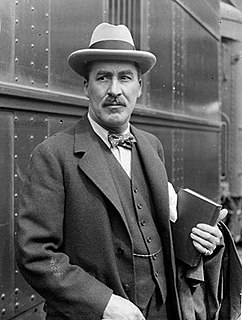
Howard Carter was a British archaeologist and Egyptologist who discovered the intact tomb of the 18th Dynasty Pharaoh Tutankhamun in November 1922, the best-preserved pharaonic tomb ever found in the Valley of the Kings.

Tutankhamun, Egyptological pronunciation Tutankhamen, sometimes referred to as King Tut, was an Egyptian pharaoh who was the last of his royal family to rule during the end of the Eighteenth Dynasty during the New Kingdom of Egyptian history. His father is believed to be the pharaoh Akhenaten, identified as the mummy found in the tomb KV55. His mother is his father's sister, identified through DNA testing as an unknown mummy referred to as "The Younger Lady" who was found in KV35.

The tomb of Tutankhamun, also known by its tomb number, KV62, is the burial place of Tutankhamun, a pharaoh of the Eighteenth Dynasty of ancient Egypt, in the Valley of the Kings. The tomb consists of four chambers and an entrance staircase and corridor. It is smaller and less extensively decorated than other Egyptian royal tombs of its time, and it probably originated as a tomb for a non-royal individual that was adapted for Tutankhamun's use after his premature death. Like other pharaohs, Tutankhamun was buried with a wide variety of funerary objects and personal possessions, such as coffins, furniture, clothing and jewellery, though in the unusually limited space these goods had to be densely packed. Robbers entered the tomb twice in the years immediately following the burial, but Tutankhamun's mummy and most of the burial goods remained intact. The tomb's low position, dug into the floor of the valley, allowed its entrance to be hidden by debris deposited by flooding and tomb construction. Thus, unlike other tombs in the valley, it was not stripped of its valuables during the Third Intermediate Period.

The Valley of the Kings, also known as the Valley of the Gates of the Kings, is a valley in Egypt where, for a period of nearly 500 years from the 16th to 11th century BC, rock-cut tombs were excavated for the pharaohs and powerful nobles of the New Kingdom.
Howard Carter unseals the burial chamber of Pharaoh Tutankhamun.

Howard Carter was a British archaeologist and Egyptologist who discovered the intact tomb of the 18th Dynasty Pharaoh Tutankhamun in November 1922, the best-preserved pharaonic tomb ever found in the Valley of the Kings.
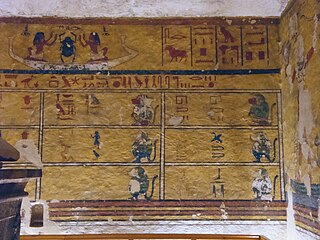
A chamber tomb is a tomb for burial used in many different cultures. In the case of individual burials, the chamber is thought to signify a higher status for the interred than a simple grave. Built from rock or sometimes wood, the chambers could also serve as places for storage of the dead from one family or social group and were often used over long periods for multiple burials.
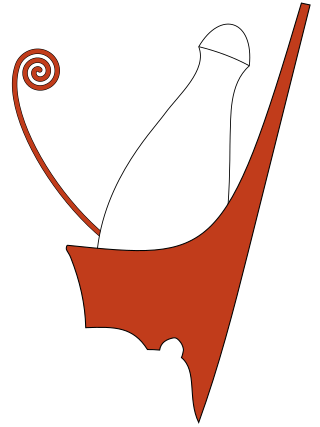
Pharaoh is the vernacular term often used by modern authors for the kings of ancient Egypt who ruled as monarchs from the First Dynasty until the annexation of Egypt by the Roman Empire in 30 BC. However, regardless of gender, "king" was the term used most frequently by the ancient Egyptians for their monarchs through the middle of the Eighteenth Dynasty during the New Kingdom. The term "pharaoh" was not used contemporaneously for a ruler until a possible reference to Merneptah, c. 1210 BC during the Nineteenth Dynasty, nor consistently used until the decline and instability that began with the Twenty-Fifth Dynasty.

Tutankhamun, Egyptological pronunciation Tutankhamen, sometimes referred to as King Tut, was an Egyptian pharaoh who was the last of his royal family to rule during the end of the Eighteenth Dynasty during the New Kingdom of Egyptian history. His father is believed to be the pharaoh Akhenaten, identified as the mummy found in the tomb KV55. His mother is his father's sister, identified through DNA testing as an unknown mummy referred to as "The Younger Lady" who was found in KV35.
The Council of Lithuania signed the Act of Independence, proclaiming the restoration of an independent Lithuania.
The Council of Lithuania, after July 11, 1918 the State Council of Lithuania was convened at the Vilnius Conference that took place between 18 and 23 September 1917. The twenty men who composed the council at first were of different ages, social status, professions, and political affiliations. The council was granted the executive authority of the Lithuanian people and was entrusted to establish an independent Lithuanian state. On 16 February 1918, the members of the council signed the Act of Independence of Lithuania and declared Lithuania an independent state based on democratic principles. 16 February is celebrated as Lithuania's State Restoration Day. The council managed to establish the proclamation of independence despite the presence of German troops in the country until the autumn of 1918. By the spring of 1919, the council had almost doubled in size. The council continued its efforts until the Constituent Assembly of Lithuania first met on 15 May 1920.
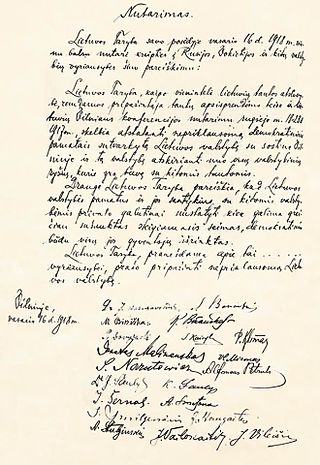
The Act of Independence of Lithuania or the Act of February 16, also the Lithuanian Resolution on Independence, was signed by the Council of Lithuania on February 16, 1918, proclaiming the restoration of an independent State of Lithuania, governed by democratic principles, with Vilnius as its capital. The Act was signed by all twenty representatives of the Council, which was chaired by Jonas Basanavičius. The Act of February 16 was the result of a series of resolutions on the issue, including one issued by the Vilnius Conference and the Act of January 8. The path to the Act was long and complex because the German Empire exerted pressure on the Council to form an alliance. The Council had to carefully maneuver between the Germans, whose troops were present in Lithuania, and the demands of the Lithuanian people.
The Council of Lithuania unanimously adopts the Act of Independence, declaring Lithuania an independent state.
The Council of Lithuania, after July 11, 1918 the State Council of Lithuania was convened at the Vilnius Conference that took place between 18 and 23 September 1917. The twenty men who composed the council at first were of different ages, social status, professions, and political affiliations. The council was granted the executive authority of the Lithuanian people and was entrusted to establish an independent Lithuanian state. On 16 February 1918, the members of the council signed the Act of Independence of Lithuania and declared Lithuania an independent state based on democratic principles. 16 February is celebrated as Lithuania's State Restoration Day. The council managed to establish the proclamation of independence despite the presence of German troops in the country until the autumn of 1918. By the spring of 1919, the council had almost doubled in size. The council continued its efforts until the Constituent Assembly of Lithuania first met on 15 May 1920.

The Act of Independence of Lithuania or the Act of February 16, also the Lithuanian Resolution on Independence, was signed by the Council of Lithuania on February 16, 1918, proclaiming the restoration of an independent State of Lithuania, governed by democratic principles, with Vilnius as its capital. The Act was signed by all twenty representatives of the Council, which was chaired by Jonas Basanavičius. The Act of February 16 was the result of a series of resolutions on the issue, including one issued by the Vilnius Conference and the Act of January 8. The path to the Act was long and complex because the German Empire exerted pressure on the Council to form an alliance. The Council had to carefully maneuver between the Germans, whose troops were present in Lithuania, and the demands of the Lithuanian people.

Lithuania, officially the Republic of Lithuania, is a country in the Baltic region of Europe. It is one of three Baltic states and lies on the eastern shore of the Baltic Sea. Lithuania shares land borders with Latvia to the north, Belarus to the east and south, Poland to the south, and Russia to the southwest. It has a maritime border with Sweden to the west on the Baltic Sea. Lithuania covers an area of 65,300 km2 (25,200 sq mi), with a population of 2.8 million. Its capital and largest city is Vilnius; other major cities are Kaunas and Klaipėda. Lithuanians belong to the ethno-linguistic group of the Balts and speak Lithuanian, one of only a few living Baltic languages.
The Southern Cross expedition led by Carsten Borchgrevink achieved a new Farthest South of 78° 50'S, making the first landing at the Great Ice Barrier.

The Southern Cross Expedition, otherwise known as the British Antarctic Expedition, 1898–1900, was the first British venture of the Heroic Age of Antarctic Exploration, and the forerunner of the more celebrated journeys of Robert Falcon Scott and Ernest Shackleton. The brainchild of the Anglo-Norwegian explorer Carsten Borchgrevink, it was the first expedition to over-winter on the Antarctic mainland, the first to visit the Great Ice Barrier—later known as the Ross Ice Shelf—since Sir James Clark Ross's groundbreaking expedition of 1839 to 1843, and the first to effect a landing on the Barrier's surface. It also pioneered the use of dogs and sledges in Antarctic travel.
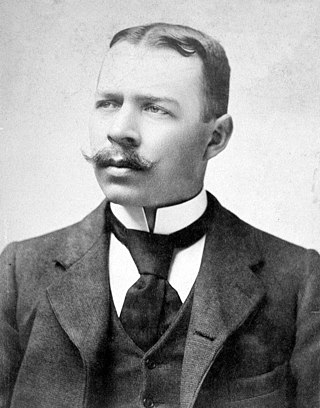
Carsten Egeberg Borchgrevink was an Anglo-Norwegian polar explorer and a pioneer of Antarctic travel. He inspired Sir Robert Falcon Scott, Sir Ernest Shackleton, Roald Amundsen, and others associated with the Heroic Age of Antarctic Exploration.

Farthest South refers to the most southerly latitude reached by explorers before the first successful expedition to the South Pole in 1911. Significant steps on the road to the pole were the discovery of lands south of Cape Horn in 1619, Captain James Cook's crossing of the Antarctic Circle in 1773, and the earliest confirmed sightings of the Antarctic mainland in 1820. From the late 19th century onward, the quest for Farthest South latitudes became in effect a race to reach the pole, which culminated in Roald Amundsen's success in December 1911.
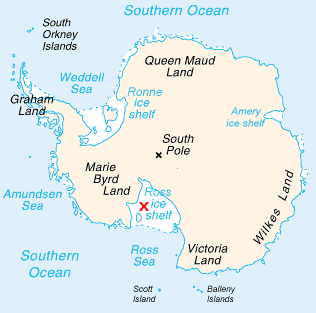
The Ross Ice Shelf is the largest ice shelf of Antarctica. It is several hundred metres thick. The nearly vertical ice front to the open sea is more than 600 kilometres (370 mi) long, and between 15 and 50 metres high above the water surface. Ninety percent of the floating ice, however, is below the water surface.
The Southern Cross expedition led by Carsten Borchgrevink achieved a new Farthest South of 78° 50'S, making the first landing at the Great Ice Barrier.

The Southern Cross Expedition, otherwise known as the British Antarctic Expedition, 1898–1900, was the first British venture of the Heroic Age of Antarctic Exploration, and the forerunner of the more celebrated journeys of Robert Falcon Scott and Ernest Shackleton. The brainchild of the Anglo-Norwegian explorer Carsten Borchgrevink, it was the first expedition to over-winter on the Antarctic mainland, the first to visit the Great Ice Barrier—later known as the Ross Ice Shelf—since Sir James Clark Ross's groundbreaking expedition of 1839 to 1843, and the first to effect a landing on the Barrier's surface. It also pioneered the use of dogs and sledges in Antarctic travel.

Carsten Egeberg Borchgrevink was an Anglo-Norwegian polar explorer and a pioneer of Antarctic travel. He inspired Sir Robert Falcon Scott, Sir Ernest Shackleton, Roald Amundsen, and others associated with the Heroic Age of Antarctic Exploration.

Farthest South refers to the most southerly latitude reached by explorers before the first successful expedition to the South Pole in 1911. Significant steps on the road to the pole were the discovery of lands south of Cape Horn in 1619, Captain James Cook's crossing of the Antarctic Circle in 1773, and the earliest confirmed sightings of the Antarctic mainland in 1820. From the late 19th century onward, the quest for Farthest South latitudes became in effect a race to reach the pole, which culminated in Roald Amundsen's success in December 1911.

The Ross Ice Shelf is the largest ice shelf of Antarctica. It is several hundred metres thick. The nearly vertical ice front to the open sea is more than 600 kilometres (370 mi) long, and between 15 and 50 metres high above the water surface. Ninety percent of the floating ice, however, is below the water surface.
Iceland's first football club, Knattspyrnufélag Reykjavíkur, is founded.

Iceland is a Nordic island country in the North Atlantic Ocean and in the Arctic Ocean. Iceland is the most sparsely populated country in Europe. Iceland's capital and largest city is Reykjavík, which is home to over 65% of the population. Iceland is the biggest part of the Mid-Atlantic Ridge that rises above sea level, and its central volcanic plateau is erupting almost constantly. The interior consists of a plateau characterised by sand and lava fields, mountains, and glaciers, and many glacial rivers flow to the sea through the lowlands. Iceland is warmed by the Gulf Stream and has a temperate climate, despite a high latitude just outside the Arctic Circle. Its high latitude and marine influence keep summers chilly, and most of its islands have a polar climate.

Knattspyrnufélag Reykjavíkur, often shortened to KR or KR Reykjavík, is an Icelandic football club based in the Vesturbær district of the capital, Reykjavík.
The Canadian Pacific Railway is incorporated by Act of Parliament at Ottawa (44th Vic., c.1).

The Canadian Pacific Railway, also known simply as CPR or Canadian Pacific and formerly as CP Rail (1968–1996), is a Canadian Class I railway incorporated in 1881. The railway is owned by Canadian Pacific Railway Limited, which began operations as legal owner in a corporate restructuring in 2001.
Spencer Compton Cavendish, Marquess of Hartington becomes British Secretary of State for War.

Spencer Compton Cavendish, 8th Duke of Devonshire,, styled Lord Cavendish of Keighley between 1834 and 1858 and Marquess of Hartington between 1858 and 1891, was a British statesman. He has the distinction of having held leading positions in three political parties: leading the Liberal Party, the Liberal Unionist Party and the Conservative Party in either the House of Commons or the House of Lords. After 1886 he increasingly voted with the Conservatives. He declined to become prime minister on three occasions, because the circumstances were never right. Historian and politician Roy Jenkins said he was "too easy-going and too little of a party man." He held some passions, but he rarely displayed them regarding the most controversial issues of the day.

The Secretary of State for War, commonly called War Secretary, was a secretary of state in the Government of the United Kingdom, which existed from 1794 to 1801 and from 1854 to 1964. The Secretary of State for War headed the War Office and was assisted by a Parliamentary Under-Secretary of State for War, a Parliamentary Private Secretary who was also a Member of Parliament (MP), and a Military Secretary, who was a general.
American Civil War: A Union victory in the Battle of Fort Donelson gave General Ulysses S. Grant the nickname "Unconditional Surrender".

The American Civil War was a civil war in the United States. It was fought between the Union and the Confederacy, the latter formed by states that had seceded. The central cause of the war was the dispute over whether slavery would be permitted to expand into the western territories, leading to more slave states, or be prevented from doing so, which was widely believed would place slavery on a course of ultimate extinction.

During the American Civil War, the Union Army, also known as the Federal Army and the Northern Army, referring to the United States Army, was the land force that fought to preserve the Union of the collective states. It proved essential to the preservation of the United States as a working, viable republic.

The Battle of Fort Donelson was fought from February 11–16, 1862, in the Western Theater of the American Civil War. The Union capture of the Confederate fort near the Tennessee–Kentucky border opened the Cumberland River, an important avenue for the invasion of the South. The Union's success also elevated Brig. Gen. Ulysses S. Grant from an obscure and largely unproven leader to the rank of major general, and earned him the nickname of "Unconditional Surrender" Grant.

Ulysses S. Grant was an American military officer and politician who served as the 18th president of the United States from 1869 to 1877. As Commanding General, he led the Union Army to victory in the American Civil War in 1865 and thereafter briefly served as Secretary of War. Later, as president, Grant was an effective civil rights executive who signed the bill that created the Justice Department and worked with Radical Republicans to protect African Americans during Reconstruction.
American Civil War: General Ulysses S. Grant captures Fort Donelson, Tennessee.

The American Civil War was a civil war in the United States. It was fought between the Union and the Confederacy, the latter formed by states that had seceded. The central cause of the war was the dispute over whether slavery would be permitted to expand into the western territories, leading to more slave states, or be prevented from doing so, which was widely believed would place slavery on a course of ultimate extinction.

Ulysses S. Grant was an American military officer and politician who served as the 18th president of the United States from 1869 to 1877. As Commanding General, he led the Union Army to victory in the American Civil War in 1865 and thereafter briefly served as Secretary of War. Later, as president, Grant was an effective civil rights executive who signed the bill that created the Justice Department and worked with Radical Republicans to protect African Americans during Reconstruction.

The Battle of Fort Donelson was fought from February 11–16, 1862, in the Western Theater of the American Civil War. The Union capture of the Confederate fort near the Tennessee–Kentucky border opened the Cumberland River, an important avenue for the invasion of the South. The Union's success also elevated Brig. Gen. Ulysses S. Grant from an obscure and largely unproven leader to the rank of major general, and earned him the nickname of "Unconditional Surrender" Grant.

Fort Donelson was a fortress built early in 1862 by the Confederacy during the American Civil War to control the Cumberland River, which led to the heart of Tennessee, and thereby the Confederacy. The fort was named after Confederate general Daniel S. Donelson.

Tennessee, officially the State of Tennessee, is a landlocked state in the Southeastern region of the United States. Tennessee is the 36th-largest by area and the 16th-most populous of the 50 states. It is bordered by Kentucky to the north, Virginia to the northeast, North Carolina to the east, Georgia, Alabama, and Mississippi to the south, Arkansas to the southwest, and Missouri to the northwest. Tennessee is geographically, culturally, and legally divided into three Grand Divisions of East, Middle, and West Tennessee. Nashville is the state's capital and largest city, and anchors its largest metropolitan area. Other major cities include Memphis, Knoxville, Chattanooga, and Clarksville. Tennessee's population as of the 2020 United States census is approximately 6.9 million.
The French government passed a law setting the musical note A4 to a frequency of 435 hertz, in the first attempt to standardize concert pitch.
A or La is the sixth note and the tenth semitone of the fixed-do solfège.

Concert pitch is the pitch reference to which a group of musical instruments are tuned for a performance. Concert pitch may vary from ensemble to ensemble, and has varied widely over music history. The most common modern tuning standard uses 440 Hz for A above middle C as a reference note, with other notes being set relative to it. In the literature this is also called international standard pitch.
First Barbary War: Lieutenant Stephen Decatur led a U.S. Navy raid to destroy the captured USS Philadelphia in the harbor of Tripoli (depicted), denying her use to the Barbary States.

The First Barbary War (1801–1805), also known as the Tripolitan War and the Barbary Coast War, was the first of two Barbary Wars, in which the United States and Sweden fought against the four North African states known collectively as the "Barbary States". The participation of the United States was due to pirates from the Barbary States seizing American merchant ships and holding the crews for ransom, demanding that the United States pay tribute to the Barbary rulers. United States President Thomas Jefferson refused to pay this tribute. Sweden had been at war with the Tripolitans since 1800.

Stephen Decatur Jr. was an American naval officer and commodore. He was born on the eastern shore of Maryland in Worcester County. His father, Stephen Decatur Sr., was a commodore in the United States Navy who served during the American Revolution; he brought the younger Stephen into the world of ships and sailing early on. Shortly after attending college, Decatur followed in his father's footsteps and joined the U.S. Navy at the age of nineteen as a midshipman.

The United States Navy (USN) is the maritime service branch of the United States Armed Forces and one of the eight uniformed services of the United States. It is the largest and most powerful navy in the world, with the estimated tonnage of its active battle fleet alone exceeding the next 13 navies combined, including 11 allies or partner nations of the United States as of 2015. It has the highest combined battle fleet tonnage and the world's largest aircraft carrier fleet, with eleven in service, two new carriers under construction, and five other carriers planned. With 336,978 personnel on active duty and 101,583 in the Ready Reserve, the United States Navy is the third largest of the United States military service branches in terms of personnel. It has 290 deployable combat vessels and more than 2,623 operational aircraft as of June 2019.
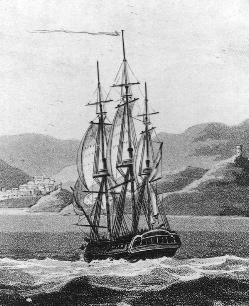
USS Philadelphia, a 1240-ton, 36-gun sailing frigate, was the second vessel of the United States Navy to be named for the city of Philadelphia. Originally named City of Philadelphia, she was built in 1798–1799 for the United States government by residents of that city. Funding for her construction was raised by a drive that collected $100,000 in one week, in June 1798. She was designed by Josiah Fox and built by Samuel Humphreys, Nathaniel Hutton and John Delavue. Her carved work was done by William Rush of Philadelphia. She was laid down about November 14, 1798, launched on November 28, 1799, and commissioned on April 5, 1800, with Captain Stephen Decatur, Sr. in command. She was captured by Barbary pirates in Tripoli with William Bainbridge in command. Stephen Decatur led a raid that burned her down, preventing her use by the pirates.

Tripoli is the capital and largest city of Libya, with a population of about 1.1 million people in 2019. It is located in the northwest of Libya on the edge of the desert, on a point of rocky land projecting into the Mediterranean Sea and forming a bay. It includes the port of Tripoli and the country's largest commercial and manufacturing center. It is also the site of the University of Tripoli. The vast Bab al-Azizia barracks, which includes the former family estate of Muammar Gaddafi, is also located in the city. Colonel Gaddafi largely ruled the country from his residence in this barracks.
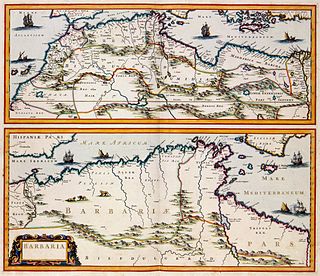
The Barbary Coast was the coastal regions of North Africa or Maghreb, specifically the Ottoman borderlands consisting of the regencies in Algiers and Tripoli, as well as the Beylik of Tunis and the Sultanate of Morocco from the 16th to 19th centuries. The term originates from the exonym of the Berbers.
First Barbary War: Stephen Decatur leads a raid to burn the pirate-held frigate USS Philadelphia.

The First Barbary War (1801–1805), also known as the Tripolitan War and the Barbary Coast War, was the first of two Barbary Wars, in which the United States and Sweden fought against the four North African states known collectively as the "Barbary States". The participation of the United States was due to pirates from the Barbary States seizing American merchant ships and holding the crews for ransom, demanding that the United States pay tribute to the Barbary rulers. United States President Thomas Jefferson refused to pay this tribute. Sweden had been at war with the Tripolitans since 1800.

Stephen Decatur Jr. was an American naval officer and commodore. He was born on the eastern shore of Maryland in Worcester County. His father, Stephen Decatur Sr., was a commodore in the United States Navy who served during the American Revolution; he brought the younger Stephen into the world of ships and sailing early on. Shortly after attending college, Decatur followed in his father's footsteps and joined the U.S. Navy at the age of nineteen as a midshipman.
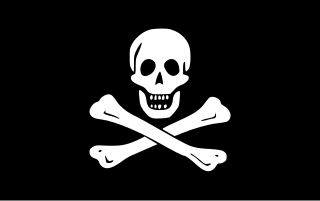
Piracy is an act of robbery or criminal violence by ship or boat-borne attackers upon another ship or a coastal area, typically with the goal of stealing cargo and other valuable goods. Those who conduct acts of piracy are called pirates, while the dedicated ships that pirates use are called pirate ships. The earliest documented instances of piracy were in the 14th century BC, when the Sea Peoples, a group of ocean raiders, attacked the ships of the Aegean and Mediterranean civilisations. Narrow channels which funnel shipping into predictable routes have long created opportunities for piracy, as well as for privateering and commerce raiding. Historic examples include the waters of Gibraltar, the Strait of Malacca, Madagascar, the Gulf of Aden, and the English Channel, whose geographic structures facilitated pirate attacks. Privateering uses similar methods to piracy, but the captain acts under orders of the state authorising the capture of merchant ships belonging to an enemy nation, making it a legitimate form of war-like activity by non-state actors. A land-based parallel is the ambushing of travelers by bandits and brigands in highways and mountain passes.

USS Philadelphia, a 1240-ton, 36-gun sailing frigate, was the second vessel of the United States Navy to be named for the city of Philadelphia. Originally named City of Philadelphia, she was built in 1798–1799 for the United States government by residents of that city. Funding for her construction was raised by a drive that collected $100,000 in one week, in June 1798. She was designed by Josiah Fox and built by Samuel Humphreys, Nathaniel Hutton and John Delavue. Her carved work was done by William Rush of Philadelphia. She was laid down about November 14, 1798, launched on November 28, 1799, and commissioned on April 5, 1800, with Captain Stephen Decatur, Sr. in command. She was captured by Barbary pirates in Tripoli with William Bainbridge in command. Stephen Decatur led a raid that burned her down, preventing her use by the pirates.
Colombo in Ceylon (now Sri Lanka) falls to the British, completing their invasion of Ceylon.
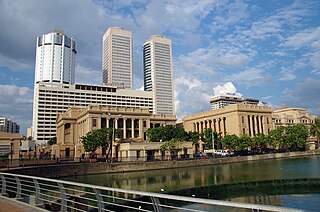
Colombo is the executive and judicial capital and largest city of Sri Lanka by population. According to the Brookings Institution, Colombo metropolitan area has a population of 5.6 million, and 752,993 in the Municipality. It is the financial centre of the island and a tourist destination. It is located on the west coast of the island and adjacent to the Greater Colombo area which includes Sri Jayawardenepura Kotte, the legislative capital of Sri Lanka, and Dehiwala-Mount Lavinia. Colombo is often referred to as the capital since Sri Jayawardenepura Kotte is itself within the urban/suburban area of Colombo. It is also the administrative capital of the Western Province and the district capital of Colombo District. Colombo is a busy and vibrant city with a mixture of modern life, colonial buildings and monuments.
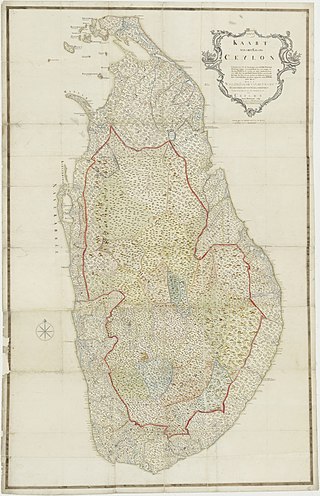
The Invasion of Ceylon was a military campaign fought as a series of amphibious operations between the summer of 1795 and spring of 1796 between the garrison of the Batavian colonies on the Indian Ocean island of Ceylon and a British invasion force sent from British India. The Dutch Republic had been a British ally during the French Revolutionary Wars, but was overrun by the French Republic in the winter of 1794 and reformed into the client state of the Batavian Republic. The British government, working with the exiled Stadtholder William of Orange, ordered the seizure of Batavian assets including colonies of the former Dutch Empire. Among the first territories to be attacked were those on the coast of the island of Ceylon, with operations initially focused on the trading port at Trincomalee.
Spencer Compton, Earl of Wilmington, becomes British Prime Minister.

Spencer Compton, 1st Earl of Wilmington, was a British Whig statesman who served continuously in government from 1715 until his death. He sat in the English and British House of Commons between 1698 and 1728, and was then raised to the peerage and sat in the House of Lords. He served as the prime minister of Great Britain from 1742 until his death in 1743. He is considered to have been Britain's second prime minister, after Robert Walpole, but worked closely with the Secretary of State, Lord Carteret, in order to secure the support of the various factions making up the government.

Earl of Wilmington was a title in the Peerage of Great Britain. It was created in 1730 for the politician Spencer Compton, 1st Baron Wilmington, who later served as Prime Minister of Great Britain from 1742 to 1743, during the reign of George II. He had already been created Baron Wilmington in 1728 and was made Viscount Pevensey at the same time as he was given the earldom. Compton was the third son of James Compton, 3rd Earl of Northampton. The titles became extinct on his death in 1743, as he left no male heirs.

The prime minister of the United Kingdom is the head of government of the United Kingdom. The prime minister advises the sovereign on the exercise of much of the royal prerogative, chairs the Cabinet and selects its ministers. As modern prime ministers hold office by virtue of their ability to command the confidence of the House of Commons, they sit as members of Parliament.
First Leopoldine Diploma is issued by the Holy Roman Emperor, recognizing the Greek Catholic clergy enjoyed the same privileges as Roman Catholic priests in the Principality of Transylvania.

Leopold I was Holy Roman Emperor, King of Hungary, Croatia, and Bohemia. The second son of Ferdinand III, Holy Roman Emperor, by his first wife, Maria Anna of Spain, Leopold became heir apparent in 1654 by the death of his elder brother Ferdinand IV. Elected in 1658, Leopold ruled the Holy Roman Empire until his death in 1705, becoming the second longest-ruling Habsburg emperor. He was both a composer and considerable patron of music.
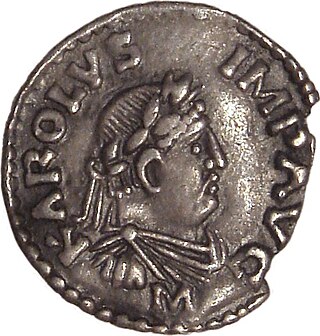
The Holy Roman Emperor, originally and officially the Emperor of the Romans during the Middle Ages, and also known as the German-Roman Emperor since the early modern period, was the ruler and head of state of the Holy Roman Empire. The title was held in conjunction with the title of king of Italy from the 8th to the 16th century, and, almost without interruption, with the title of king of Germany throughout the 12th to 18th centuries.
The term Greek Catholic Church can refer to a number of Eastern Catholic Churches following the Byzantine (Greek) liturgy, considered collectively or individually.

The Catholic Church, also known as the Roman Catholic Church, is the largest Christian church, with 1.3 billion baptized Catholics worldwide as of 2019. As the world's oldest and largest continuously functioning international institution, it has played a prominent role in the history and development of Western civilization. The church consists of 24 sui iuris churches, including the Latin Church and 23 Eastern Catholic Churches, which comprise almost 3,500 dioceses and eparchies located around the world. The pope, who is the bishop of Rome, is the chief pastor of the church. The bishopric of Rome, known as the Holy See, is the central governing authority of the church. The administrative body of the Holy See, the Roman Curia, has its principal offices in Vatican City, a small enclave of the Italian city of Rome, of which the pope is head of state.

The Principality of Transylvania was a semi-independent state ruled primarily by Hungarian princes. Its territory, in addition to the traditional Transylvanian lands, also included the other major component called Partium, which was in some periods comparable in size with Transylvania proper. The establishment of the principality was connected to the Treaty of Speyer. However, Stephen Báthory's status as king of Poland also helped to phase in the name Principality of Transylvania. It was usually under the suzerainty of the Ottoman Empire, although the principality often had dual vassalage in the 16th and 17th centuries.
Battle of Torrington, Devon: The last major battle of the first English Civil War.
The Battle of Torrington was a decisive battle of the south-western campaign of the First English Civil War and marked the end of Royalist resistance in the West Country. It took place in Torrington, Devon.

The English Civil War (1642–1651) was a series of civil wars and political machinations between Parliamentarians ("Roundheads") and Royalists led by Charles I ("Cavaliers"), mainly over the manner of England's governance and issues of religious freedom. It was part of the wider Wars of the Three Kingdoms. The first (1642–1646) and second (1648–1649) wars pitted the supporters of King Charles I against the supporters of the Long Parliament, while the third (1649–1651) saw fighting between supporters of King Charles II and supporters of the Rump Parliament. The wars also involved the Scottish Covenanters and Irish Confederates. The war ended with Parliamentarian victory at the Battle of Worcester on 3 September 1651.
Dutch forces led by Hendrick Lonck capture Olinda in what was to become part of Dutch Brazil.

Adm. Hendrick Corneliszoon Lonck, a Dutch naval hero, was the first Dutch sea captain to reach the New World.

Olinda is a historic city in Pernambuco, Brazil, in the Northeast Region. It is located on the country's northeastern Atlantic Ocean coast, in the Metropolitan Region of Recife, the state capital. It has a population of 393,115 people, covers 41.681 square kilometres (16.093 sq mi), and has a population density of 9,437 inhabitants per square kilometer. It is noted as one of the best-preserved colonial cities in Brazil, and has been inhabited since 1535.

Dutch Brazil, also known as New Holland, was a colony of the Dutch Republic in the northeastern portion of modern-day Brazil, controlled from 1630 to 1654 during Dutch colonization of the Americas. The main cities of the colony were the capital Mauritsstad, Frederikstadt, Nieuw Amsterdam (Natal), Saint Louis, São Cristóvão, Fort Schoonenborch (Fortaleza), Sirinhaém, and Olinda.
Livonian Crusade: In the Battle of Karuse, the Grand Duchy of Lithuania achieved a decisive victory over the Livonian Order on the frozen surface of the Baltic Sea.

The Livonian crusade refers to the various military Christianisation campaigns in medieval Livonia – in what is now Latvia and Estonia – during the Papal-sanctioned Northern Crusades in the 12–13th century. The Livonian crusade was conducted mostly by the Holy Roman Empire and the Kingdom of Denmark. It ended with the creation of Terra Mariana and the Danish duchy of Estonia. The lands on the eastern shores of the Baltic Sea were one of the last parts of Europe to be Christianised.
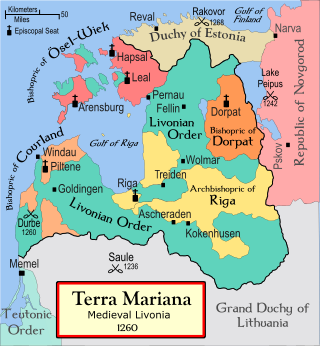
The Battle of Karuse or Battle on the Ice was fought on 16 February 1270 between the Grand Duchy of Lithuania and the Livonian Order on the frozen Baltic Sea between the island of Muhu and the mainland. The Lithuanians achieved a decisive victory. The battle, named after the village of Karuse, was the fifth-largest defeat of the Livonian or Teutonic Orders in the 13th century. Almost all that is known about the battle comes from the Livonian Rhymed Chronicle, which devoted 192 lines to the battle.

The Grand Duchy of Lithuania was a European state that existed from the 13th century to 1795, when the territory was partitioned among the Russian Empire, the Kingdom of Prussia, and the Habsburg Empire of Austria. The state was founded by Lithuanians, who were at the time a polytheistic nation born from several united Baltic tribes from Aukštaitija.

The Livonian Order was an autonomous branch of the Teutonic Order, formed in 1237. From 1435 to 1561 it was a member of the Livonian Confederation.

The Baltic Sea is an arm of the Atlantic Ocean that is enclosed by Denmark, Estonia, Finland, Germany, Latvia, Lithuania, Poland, Russia, Sweden and the North and Central European Plain.
Grand Duchy of Lithuania defeats the Livonian Order in the Battle of Karuse.

The Grand Duchy of Lithuania was a European state that existed from the 13th century to 1795, when the territory was partitioned among the Russian Empire, the Kingdom of Prussia, and the Habsburg Empire of Austria. The state was founded by Lithuanians, who were at the time a polytheistic nation born from several united Baltic tribes from Aukštaitija.

The Livonian Order was an autonomous branch of the Teutonic Order, formed in 1237. From 1435 to 1561 it was a member of the Livonian Confederation.

The Battle of Karuse or Battle on the Ice was fought on 16 February 1270 between the Grand Duchy of Lithuania and the Livonian Order on the frozen Baltic Sea between the island of Muhu and the mainland. The Lithuanians achieved a decisive victory. The battle, named after the village of Karuse, was the fifth-largest defeat of the Livonian or Teutonic Orders in the 13th century. Almost all that is known about the battle comes from the Livonian Rhymed Chronicle, which devoted 192 lines to the battle.
Louis IX of France dispatched André de Longjumeau as his ambassador to the Mongol Empire.
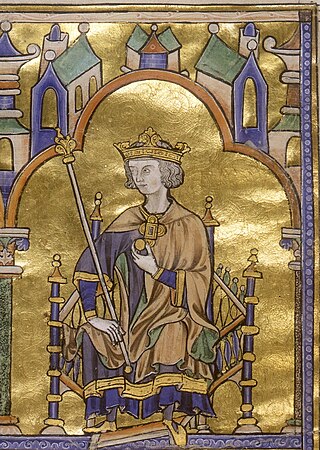
Louis IX, commonly known as Saint Louis or Louis the Saint, was King of France from 1226 to 1270, and the most illustrious of the Direct Capetians. He was crowned in Reims at the age of 12, following the death of his father Louis VIII. His mother, Blanche of Castile, ruled the kingdom as regent until he reached maturity, and then remained his valued adviser until her death. During Louis' childhood, Blanche dealt with the opposition of rebellious vassals and secured Capetian success in the Albigensian Crusade, which had started 20 years earlier.
André de Longjumeau was a 13th-century Dominican missionary and diplomat and one of the most active Occidental diplomats in the East in the 13th century. He led two embassies to the Mongols: the first carried letters from Pope Innocent IV and the second bore gifts and letters from Louis IX of France to Güyük Khan. Well acquainted with the Middle-East, he spoke Arabic and "Chaldean".
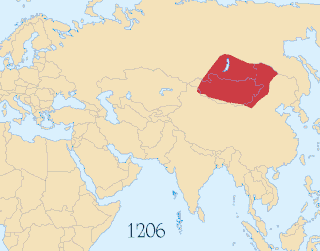
The Mongol Empire of the 13th and 14th centuries was the largest contiguous land empire in history. Originating in present-day Mongolia in East Asia, the Mongol Empire at its height stretched from the Sea of Japan to parts of Eastern Europe, extending northward into parts of the Arctic; eastward and southward into parts of the Indian subcontinent, attempted invasions of Southeast Asia and conquered the Iranian Plateau; and westward as far as the Levant and the Carpathian Mountains.
Andrew of Longjumeau is dispatched by Louis IX of France as his ambassador to meet with the Khagan of the Mongol Empire.
André de Longjumeau was a 13th-century Dominican missionary and diplomat and one of the most active Occidental diplomats in the East in the 13th century. He led two embassies to the Mongols: the first carried letters from Pope Innocent IV and the second bore gifts and letters from Louis IX of France to Güyük Khan. Well acquainted with the Middle-East, he spoke Arabic and "Chaldean".

Louis IX, commonly known as Saint Louis or Louis the Saint, was King of France from 1226 to 1270, and the most illustrious of the Direct Capetians. He was crowned in Reims at the age of 12, following the death of his father Louis VIII. His mother, Blanche of Castile, ruled the kingdom as regent until he reached maturity, and then remained his valued adviser until her death. During Louis' childhood, Blanche dealt with the opposition of rebellious vassals and secured Capetian success in the Albigensian Crusade, which had started 20 years earlier.
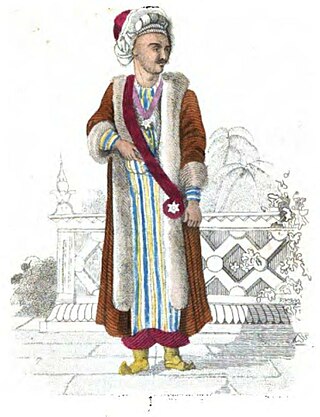
An ambassador is an official envoy, especially a high-ranking diplomat who represents a state and is usually accredited to another sovereign state or to an international organization as the resident representative of their own government or sovereign or appointed for a special and often temporary diplomatic assignment. The word is also used informally for people who are known, without national appointment, to represent certain professions, activities, and fields of endeavor, such as sales.
Khagan or Qaghan is a title of imperial rank in the Turkic, Mongolic and some other languages, equal to the status of emperor and someone who rules a khaganate (empire). The female equivalent is Khatun.

The Mongol Empire of the 13th and 14th centuries was the largest contiguous land empire in history. Originating in present-day Mongolia in East Asia, the Mongol Empire at its height stretched from the Sea of Japan to parts of Eastern Europe, extending northward into parts of the Arctic; eastward and southward into parts of the Indian subcontinent, attempted invasions of Southeast Asia and conquered the Iranian Plateau; and westward as far as the Levant and the Carpathian Mountains.
Gustavo Noboa, Ecuadorian politician, 42nd President of Ecuador deaths
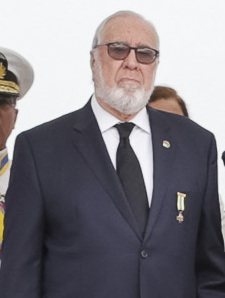
Gustavo José Joaquín Noboa Bejarano was an Ecuadorian politician. He served as the 42nd president of Ecuador from 22 January 2000 to 15 January 2003. Previously he served as the vice president during Jamil Mahuad's government from 1998 until 2000. From 1983 until 1984, he also was the Governor of the province of Guayas.

The president of Ecuador, officially called the Constitutional President of the Republic of Ecuador, serves as both the head of state and head of government of Ecuador. It is the highest political office in the country as the head of the executive branch of government. Per the current constitution, the President can serve two four-year terms. Prior to that, the president could only serve one four-year term.
Bruno Ganz, Swiss actor (b. 1941) deaths
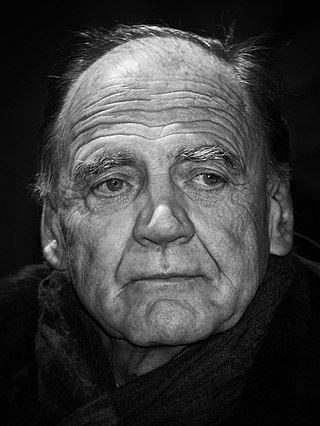
Bruno Ganz was a Swiss actor whose career in German stage, television and film productions spanned nearly 60 years. He was known for his collaborations with the directors Werner Herzog, Éric Rohmer, Francis Ford Coppola, and Wim Wenders, earning widespread recognition with his roles as Jonathan Zimmerman in The American Friend (1977), Jonathan Harker in Nosferatu the Vampyre (1979) and Damiel the Angel in Wings of Desire (1987).
Boutros Boutros-Ghali, Egyptian politician and diplomat, 6th Secretary-General of the United Nations (b. 1922) deaths

Boutros Boutros-Ghali was an Egyptian politician and diplomat who served as the sixth Secretary-General of the United Nations (UN) from 1992 to 1996. An academic who previously served as acting foreign minister and vice foreign minister of Egypt, Boutros-Ghali oversaw the UN over a period coinciding with several world crises, including the Breakup of Yugoslavia and the Rwandan genocide. He went on to serve as the first Secretary-General of La Francophonie from 1997 to 2002.

The secretary-general of the United Nations is the chief administrative officer of the United Nations and head of the United Nations Secretariat, one of the six principal organs of the United Nations.
Lasse Braun, Algerian-Italian director, producer, and screenwriter (b. 1936) deaths

Lasse Braun was an Italian pornographer, film director, producer, screenwriter, novelist and researcher.
Lesley Gore, American singer-songwriter (b. 1946) deaths

Lesley Sue Goldstein, known professionally as Lesley Gore, was an American singer, songwriter, actress, and activist. At the age of 16, she recorded the pop hit "It's My Party", a US number one in 1963. She followed it up with ten further Billboard top 40 hits including "Judy's Turn to Cry" and "You Don't Own Me".
R. R. Patil, Indian lawyer and politician, Deputy Chief Minister of Maharashtra (b. 1957) deaths
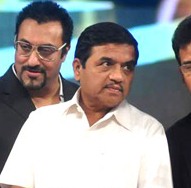
Raosaheb Ramrao Patil, better known as R. R. Patil was an Indian politician from the state of Maharashtra. He was an MLA for Tasgaon vidhan sabha constituency from 1991 to 2015. He was an important leader of modern Maharashtra. He was a member of the Nationalist Congress Party. He became Home Minister of Maharashtra for the second time after the 2009 Maharashtra assembly election victory of the Congress-NCP alliance. He was also the former Deputy Chief Minister of Maharashtra.
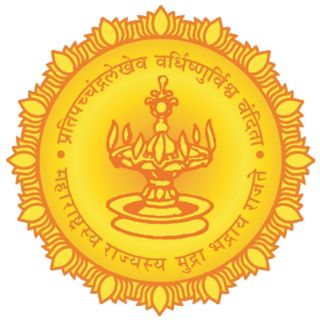
The deputy chief minister of Maharashtra is the deputy head of the executive branch of the Government of Maharashtra and the second highest ranking minister of the Council of Ministers.
Lorena Rojas, Mexican actress and singer (b. 1971) deaths

Lorena Rojas was a Mexican actress and singer, best known for her leading roles in popular telenovelas.
Ken Farragut, American football player (b. 1928) deaths
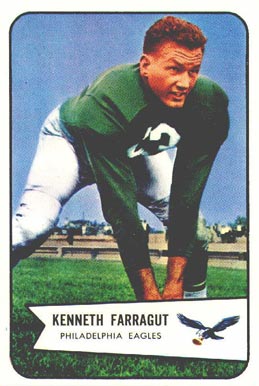
Kenneth David Farragut, Jr. was an American football center. He played professionally in the National Football League (NFL) for the Philadelphia Eagles.
Kralle Krawinkel, German guitarist (b. 1947) deaths

Gert "Kralle" Krawinkel was a German musician, best known as the guitarist of the 1980s pop group Trio.
Michael Shea, American author (b. 1946) deaths

Michael Shea was an American fantasy, horror, and science fiction author. His novel Nifft the Lean won the World Fantasy Award, as did his novella Growlimb.
Colin Edwards, Guyanese footballer (b. 1991) deaths

Colin Edwards was a Guyanese international football player. He played in three friendly games for the Guyana national football team.
Grigory Pomerants, Russian philosopher and author (b. 1918) deaths
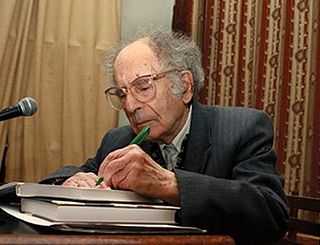
Grigory Solomonovich Pomerants was a Russian philosopher and cultural theorist. He is the author of numerous philosophical works that circulated in samizdat and made an impact on the liberal intelligentsia in the 1960s and 1970s.
Tony Sheridan, English singer-songwriter and guitarist (b. 1940) deaths

Anthony Esmond Sheridan McGinnity, known professionally as Tony Sheridan, was an English rock and roll guitarist who spent much of his adult life in Germany. He was best known as an early collaborator of the Beatles, one of two non-Beatles to receive label performance credit on a record with the group, and the only non-Beatle to appear as lead singer on a Beatles recording which charted as a single.
Gary Carter, American baseball player and coach (b. 1954) deaths

Gary Edmund Carter was an American professional baseball catcher whose 19-year Major League Baseball (MLB) career was spent primarily with the Montreal Expos and New York Mets.
Elyse Knox, American model, actress, and fashion designer (b. 1917) deaths

Elyse Knox was an American actress, model, and fashion designer.
John Macionis, American swimmer and lieutenant (b. 1916) deaths

John Joseph Macionis was an American competition swimmer who represented the United States at the 1936 Summer Olympics in Berlin.
Anthony Shadid, American journalist (b. 1968) deaths

Anthony Shadid was a foreign correspondent for The New York Times based in Baghdad and Beirut who won the Pulitzer Prize for International Reporting twice, in 2004 and 2010.
Len Lesser, American actor (b. 1922) deaths
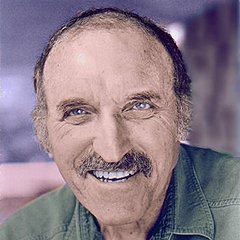
Leonard King Lesser was an American character actor. He was known for his recurring role as Uncle Leo in a total of 15 episodes of Seinfeld, starting during the show's second season in the episode "The Pony Remark". Lesser was also known for his role as Garvin on Everybody Loves Raymond.
Justinas Marcinkevičius, Lithuanian poet and playwright (b. 1930) deaths
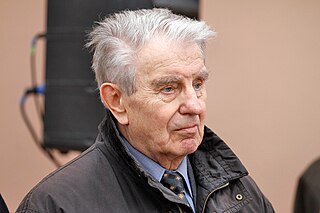
Justinas Marcinkevičius was a prominent Lithuanian poet and playwright.
Stephen Kim Sou-hwan, South Korean cardinal (b. 1921) deaths
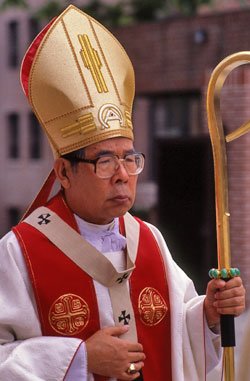
Stephen Kim Sou-hwan was a cardinal of the Roman Catholic Church and the former archbishop of Seoul, South Korea. Having been an iconic figure in South Korea's bloody and tumultuous transition from military rule to democracy, he was widely respected across all sections in South Korean society.
Johnny Grunge, American wrestler (b. 1966) deaths

Michael Lynn Durham was an American professional wrestler, better known by his ring name, Johnny Grunge. He is known for his appearances with Eastern/Extreme Championship Wrestling, World Championship Wrestling and the World Wrestling Federation as one-half of the tag team The Public Enemy with Rocco Rock. In the course of his career, Grunge held championships such as the ECW World Tag Team Championship and WCW World Tag Team Championship.
Ernie Stautner, German-American football player and coach (b. 1925) deaths
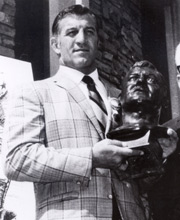
Ernest Alfred Stautner was a German-American professional American football coach and defensive tackle in the National Football League for the Pittsburgh Steelers. He also served as a coach for the Pittsburgh Steelers, Washington Redskins and Dallas Cowboys. He played college football at Boston College.
Doris Troy, American singer-songwriter (b. 1937) deaths
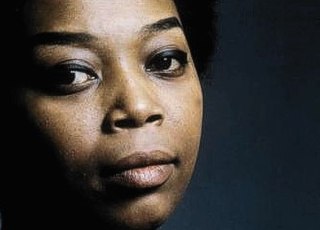
Doris Troy was an American R&B singer and songwriter, known to her many fans as "Mama Soul". Her biggest hit was "Just One Look", a top 10 hit in 1963.
Rusty Magee, American actor and composer (b. 1955) deaths

Benjamin Rush "Rusty" Magee was an accomplished comedian, actor and composer/lyricist for theatre, television, film and commercials.
Walter Winterbottom, English footballer and manager (b. 1913) deaths
Sir Walter Winterbottom was an English football player and coach. He was the first manager of the England national team (1946–1962) and Director of Coaching for The Football Association. He resigned from the FA in 1962 to become General Secretary of the Central Council of Physical Recreation (CCPR) and was appointed as the first Director of the Sports Council in 1965. He was knighted for his services to sport in 1978 when he retired. The Football Association marked the 100th anniversary of Winterbottom's birth by commissioning a bust which was unveiled by Roy Hodgson at St Georges Park on 23 April 2013 in recognition of his outstanding contribution to the development of English football.
Yuki Naito, Japanese tennis player births

Yuki Naito is a Japanese tennis player. Naito has been ranked as high as world No. 169 in singles and No. 224 in doubles by the Women's Tennis Association (WTA). In November 2016, she won the doubles tournament of the Ando Securities Open in Tokyo, partnering Rika Fujiwara. The pair defended their title the following year.
Howard W. Koch, American director and producer (b. 1916) deaths
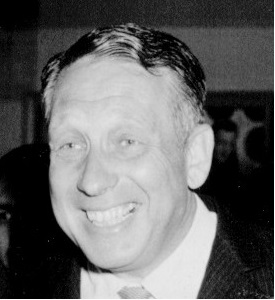
Howard Winchel Koch was an American producer and director of film and television.
William Masters, American gynecologist and sexologist (b. 1915) deaths
William Howell Masters was an American gynecologist, best known as the senior member of the Masters and Johnson sexuality research team. Along with his partner Virginia E. Johnson, he pioneered research into the nature of human sexual response and the diagnosis and treatment of sexual dysfunctions and disorders from 1957 until the 1990s.
Koffee, Jamaican reggae singer, songwriter and rapper births

Mikayla Victoria Simpson, better known as Koffee, is a Jamaican reggae singer, songwriter, rapper, and guitarist from Spanish Town, Jamaica. She released her debut single "Burning" in 2017, and in 2019 signed with Columbia Records. Her 2019 EP Rapture won the Grammy Award for Best Reggae Album at the 62nd Annual Grammy Awards, making Koffee the youngest person and only woman to be awarded in the Best Reggae Album category. Her most recent album Gifted was released March 25, 2022.
Marceline Day, American actress (b. 1908) deaths

Marceline Day was an American motion picture actress whose career began as a child in the 1910s and ended in the 1930s.
Lila Kedrova, Russian-French actress and singer deaths
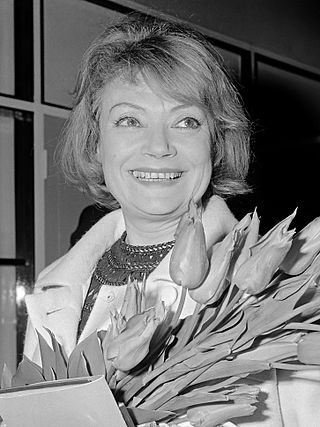
Yelizaveta Nikolaevna Kedrova, known as Lila Kedrova, was a Russian-born French actress. She won the Academy Award for Best Supporting Actress for Zorba the Greek (1964), and the Tony Award for Best Performance by a Featured Actress in a Musical for the same role in the musical version of the film.
Karsten Solheim, Norwegian-American businessman, founded PING (b. 1911) deaths
Karsten Solheim was an American golf club designer and businessman. He founded Karsten Manufacturing, a golf club maker better known by the name of PING, and the Solheim Cup, the premier international team competition in women's golf.
Ping, Inc. is an American sports equipment manufacturing company based in Phoenix, Arizona. It focuses on golf equipment, producing golf clubs and golf bags. The company was founded by Karsten Solheim, following a career as an engineer at the General Electric company. In 1959, he started making putters in his garage in Redwood City, California. In 1967, he resigned from his job at General Electric to develop the PING company.
Marie Ulven Ringheim, Norwegian singer, songwriter and music producer births

Marie Ulven Ringheim is a Norwegian singer-songwriter and record producer, known for her indie pop project Girl in Red. Her early EPs Chapter 1 (2018) and Chapter 2 (2019) were recorded in her bedroom and feature songs about romance and mental health. Released through AWAL, her debut studio album If I Could Make It Go Quiet (2021), was a critical and commercial success, and won three Norwegian Grammy Awards, including Album of the Year.
Mary Amdur, American toxicologist and public health researcher (b. 1908) deaths
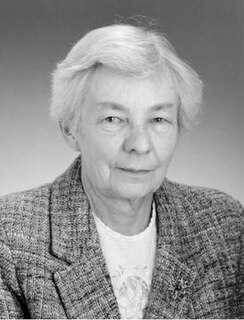
Mary Ochsenhirt Amdur was an American toxicologist and public health researcher who worked primarily on pollution. She was charged with studying the effects of the 1948 Donora smog, specifically looking into the effects of inhaling sulfuric acid by experimenting on guinea pigs. Her findings on the respiratory effects related to sulfuric acid led to her being threatened, her funding being pulled, and her losing her job at the Harvard School of Public Health in 1953. Undeterred, she carried on her research in a different role at Harvard, and subsequently at MIT and New York University. Despite the early controversy related to her work, it was used in the creation of standards in air pollution, and towards the end of her life she received numerous awards and accolades.

Toxicology is a scientific discipline, overlapping with biology, chemistry, pharmacology, and medicine, that involves the study of the adverse effects of chemical substances on living organisms and the practice of diagnosing and treating exposures to toxins and toxicants. The relationship between dose and its effects on the exposed organism is of high significance in toxicology. Factors that influence chemical toxicity include the dosage, duration of exposure, route of exposure, species, age, sex, and environment. Toxicologists are experts on poisons and poisoning. There is a movement for evidence-based toxicology as part of the larger movement towards evidence-based practices. Toxicology is currently contributing to the field of cancer research, since some toxins can be used as drugs for killing tumor cells. One prime example of this is ribosome-inactivating proteins, tested in the treatment of leukemia.

Public health is "the science and art of preventing disease, prolonging life and promoting health through the organized efforts and informed choices of society, organizations, public and private, communities and individuals". Analyzing the determinants of health of a population and the threats it faces is the basis for public health. The public can be as small as a handful of people or as large as a village or an entire city; in the case of a pandemic it may encompass several continents. The concept of health takes into account physical, psychological, and social well-being.
Sheu Yuan-dong, Taiwanese politician (b. 1927) deaths

Sheu Yuan-dong was a Taiwanese politician who served as the 15th governor of Taiwan's central bank from 1995 until his death in 1998. Born in then-Japanese-occupied Taiwan, Sheu attended Taipei City Success High School and graduated from the Department of Political Science at the National Taiwan University. He held senior positions in Taiwan's financial sector. On 16 February 1998, he was killed in the crash of China Airlines Flight 676 along with his wife, Huang Mian-mei, and three other officials of the central bank.
Chien-Shiung Wu, Chinese-American physicist and academic (b. 1912) deaths
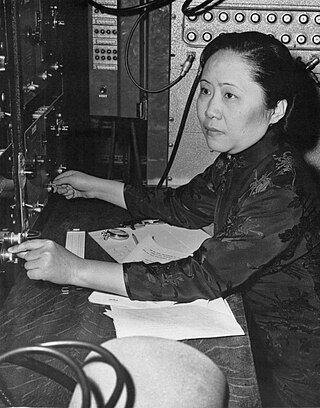
Chien-Shiung Wu (Chinese: 吳健雄; pinyin: Wú Jiànxióng; Wade–Giles: Wu2 Chien4-hsiung2; May 31, 1912 – February 16, 1997) was a Chinese-American particle and experimental physicist who made significant contributions in the fields of nuclear and particle physics. Wu worked on the Manhattan Project, where she helped develop the process for separating uranium into uranium-235 and uranium-238 isotopes by gaseous diffusion. She is best known for conducting the Wu experiment, which proved that parity is not conserved. This discovery resulted in her colleagues Tsung-Dao Lee and Chen-Ning Yang winning the 1957 Nobel Prize in Physics, while Wu herself was awarded the inaugural Wolf Prize in Physics in 1978. Her expertise in experimental physics evoked comparisons to Marie Curie. Her nicknames include the "First Lady of Physics", the "Chinese Madame Curie" and the "Queen of Nuclear Research".
Roberto Aizenberg, Argentinian painter and sculptor (b. 1922) deaths

Roberto Aizenberg, nicknamed "Bobby", was an Argentine painter and sculptor. He was considered the best-known orthodox surrealist painter in Argentina.
Roger Bowen, American actor and author (b. 1932) deaths

Roger Wendell Bowen was an American comedic actor and novelist, best known for his portrayal of Lt. Col. Henry Blake in the 1970 film M*A*S*H, a low budget film that would go on to become one of Hollywood’s biggest box office grossing comedies of all time. To this day, M*A*S*H ranks 9th, with a modern-day adjusted box office gross of more than $460,000,000. M*A*S*H would eventually be named among AFI‘s 100 greatest American movies of all time.
Pat Brown, American lawyer and politician, 32nd Governor of California (b. 1905) deaths
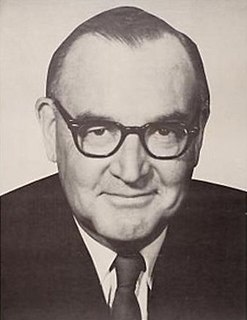
Edmund Gerald "Pat" Brown was an American lawyer and politician who served as the 32nd governor of California from 1959 to 1967. His first elected office was as district attorney for San Francisco, and he was later elected Attorney General of California in 1950, before becoming the state's governor after the 1958 California gubernatorial election.
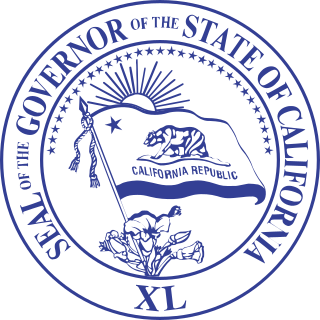
The governor of California is the head of government of the U.S. state of California. The governor is the commander-in-chief of the California National Guard and the California State Guard.
Brownie McGhee, American singer-songwriter and guitarist (b. 1915) deaths
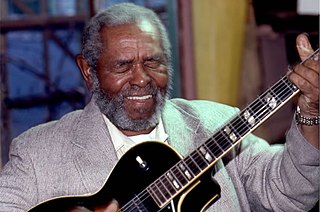
Walter Brown "Brownie" McGhee was an American folk music and Piedmont blues singer and guitarist, best known for his collaboration with the harmonica player Sonny Terry.
Katy Dunne, English tennis player births

Katy Dunne is a British tennis player who is returning to competition after a long spell of injury.
Carina Witthöft, German tennis player births

Carina Witthöft is an inactive German professional tennis player. She has won one singles title on the WTA Tour whereas on the ITF Women's Circuit, she has won eleven singles titles and one doubles title. On 8 January 2018, she reached her career-high singles ranking of world No. 48.
Annika Beck, German tennis player births

Annika Beck is a German former professional tennis player. She started playing tennis at the age of four when introduced to the game by her parents. A baseliner whose favorite shot is forehand, and favorite surface is hardcourt. She was coached by Jakub Záhlava and Sebastian Sachs.
Federico Bernardeschi, Italian footballer births

Federico Bernardeschi is an Italian professional footballer who plays as a winger or attacking midfielder for Major League Soccer club Toronto FC and the Italy national team. His nickname is "Brunelleschi", after the famous Florentine architect, for his technique and elegance on the pitch.
Ava Max, American singer and songwriter births

Amanda Ava Koci, known professionally as Ava Max, is an American singer and songwriter. She signed with Atlantic Records in 2016, through which she released her breakthrough single "Sweet but Psycho" in August 2018. The song peaked at number one in 22 countries, reaching number two in Australia and number 10 on the US Billboard Hot 100. In March 2020, Max released the song "Kings & Queens", which peaked at number 13 on the Billboard Hot 100 and at number 19 on the UK Singles Chart. It was followed by the release of her debut studio album, Heaven & Hell, in September 2020, which charted at number two on the UK Albums Chart and at number 27 on the US Billboard 200. In November 2020, the song "My Head & My Heart" was released, which peaked at number 45 on the Billboard Hot 100 and at number 18 on the UK Singles Chart.
Nicolai Boilesen, Danish footballer births

Nicolai Møller Boilesen is a Danish professional footballer who plays as a left back for FC Copenhagen in the Danish Superliga and the Denmark national team.
Zsófia Susányi, Hungarian tennis player births
Zsófia Susányi is a Hungarian tennis player.
Angela Carter, English novelist, short story writer (b. 1940) deaths

Angela Olive Pearce, who published under the name Angela Carter, was an English novelist, short story writer, poet, and journalist, known for her feminist, magical realism, and picaresque works. She is best known for her book The Bloody Chamber, which was published in 1979. In 2008, The Times ranked Carter tenth in their list of "The 50 greatest British writers since 1945". In 2012, Nights at the Circus was selected as the best ever winner of the James Tait Black Memorial Prize.
Jânio Quadros, Brazilian politician, 22nd President of Brazil (b. 1917) deaths
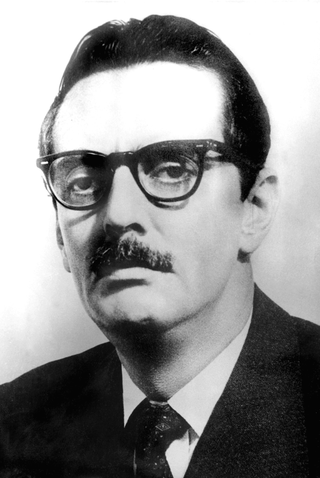
Jânio da Silva Quadros was a Brazilian lawyer and politician who served as the 22nd president of Brazil from January 31 to August 25, 1961, when he resigned from office. He also served as the 24th and 36th mayor of São Paulo, and the 18th governor of the state of São Paulo. Quadros was known for his populist style of government, honesty, and eccentric behavior. As president, he focused on economic reform and attempted to root out corruption. He also pursued an independent foreign policy, trying to balance relations between the United States and the Eastern Bloc. Although he was elected by a huge margin, his term was marked by uncertainty and political instability, culminating in his resignation. That unexpected move caused national chaos, with the presidency being assumed by João Goulart.
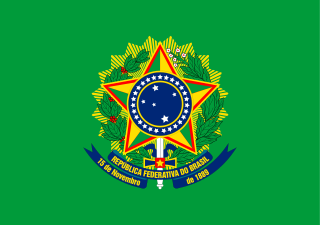
The president of Brazil, officially the president of the Federative Republic of Brazil or simply the President of the Republic, is the head of state and head of government of Brazil. The president leads the executive branch of the federal government and is the commander-in-chief of the Brazilian Armed Forces. The presidential system was established in 1889, upon the proclamation of the republic in a military coup d'état against Emperor Pedro II. Since then, Brazil has had six constitutions, three dictatorships, and three democratic periods. During the democratic periods, voting has always been compulsory. The Constitution of Brazil, along with several constitutional amendments, establishes the requirements, powers, and responsibilities of the president, their term of office and the method of election.
Herman Wold, Norwegian-Swedish economist and statistician (b. 1908) deaths
Herman Ole Andreas Wold was a Norwegian-born econometrician and statistician who had a long career in Sweden. Wold was known for his work in mathematical economics, in time series analysis, and in econometric statistics.
Sergio Canales, Spanish footballer births

Sergio Canales Madrazo is a Spanish professional footballer who plays as an attacking midfielder for La Liga club Real Betis and the Spain national team.
Enrique Bermúdez, Nicaraguan lieutenant and engineer (b. 1932) deaths

Enrique Bermúdez Varela, known as Comandante 380, was a Nicaraguan soldier and rebel who founded and commanded the Nicaraguan Contras. In this capacity, he became a central global figure in one of the most prominent conflicts of the Cold War.
Dunamis Lui, Australian-Samoan rugby league player births
Dunamis Lui is a Samoa international rugby league footballer plays as a prop and lock for the New Zealand Warriors in the NRL.
The Weeknd, Canadian singer-songwriter and producer births

Abel Makkonen Tesfaye, known professionally as the Weeknd, is a Canadian singer, songwriter, and record producer. Known for his sonic versatility and dark lyricism, his music explores escapism, romance, and melancholia, and is often inspired by personal experiences. He has received numerous accolades, including four Grammy Awards, a Latin Grammy Award, 20 Billboard Music Awards, 17 Juno Awards, six American Music Awards, two MTV Video Music Awards, and nominations for an Academy Award and a Primetime Emmy Award.
Keith Haring, American painter and activist (b. 1958) deaths
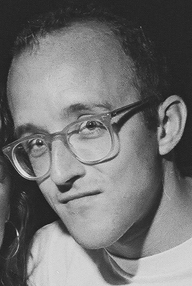
Keith Allen Haring was an American artist whose pop art emerged from the New York City graffiti subculture of the 1980s. His animated imagery has "become a widely recognized visual language". Much of his work includes sexual allusions that turned into social activism by using the images to advocate for safe sex and AIDS awareness. In addition to solo gallery exhibitions, he participated in renowned national and international group shows such as documenta in Kassel, the Whitney Biennial in New York, the São Paulo Biennial, and the Venice Biennale. The Whitney Museum held a retrospective of his art in 1997.
Elizabeth Olsen, American actress births

Elizabeth Chase Olsen is an American actress. Born in Sherman Oaks, California, Olsen began acting at age four. She starred in her debut film role in the thriller Martha Marcy May Marlene in 2011, for which she was acclaimed and nominated for a Critics' Choice Movie Award among other accolades, followed by a role in the horror film Silent House. Olsen received a BAFTA Rising Star Award nomination and graduated from New York University two years later.
Diego Capel, Spanish footballer births

Diego Ángel Capel Trinidad is a Spanish professional footballer who plays as a left winger.
Zhang Jike, Chinese table tennis player births

Zhang Jike is a retired Chinese table tennis player.
Denílson Pereira Neves, Brazilian footballer births

Denílson Pereira Neves, known as Denílson, is a Brazilian footballer. Denilson mainly features as a central midfielder who at times can also play in the role of defensive midfielder. He is also a former youth captain of Brazil.
Andrea Ranocchia, Italian footballer births

Andrea Ranocchia is a former Italian professional footballer who played as a defender.
Kim Soo-hyun, South Korean actor and singer births

Kim Soo-hyun is a South Korean actor. One of the highest-paid actors in South Korea, his accolades include four Baeksang Arts Awards, two Grand Bell Awards and one Blue Dragon Film Award. From 2012 to 2016 and in 2021, he has appeared in Forbes Korea Power Celebrity 40 list. He was selected as Gallup Korea's Television Actor of the Year in 2014 and was featured by Forbes in their 30 Under 30 Asia list of 2016.
Luc Bourdon, Canadian ice hockey player (d. 2008) births

Joseph Luc Bourdon was a Canadian professional ice hockey defenceman who played for the Vancouver Canucks of the National Hockey League from 2006 until 2008. After overcoming childhood arthritis, he was selected third overall in the 2003 Quebec Major Junior Hockey League (QMJHL) draft and played for the Val-d'Or Foreurs, Moncton Wildcats, and Cape Breton Screaming Eagles, spending four seasons in the QMJHL. The Canucks drafted Bourdon with their first selection, tenth overall, in the 2005 NHL Entry Draft, and he split his professional career with the Canucks and their American Hockey League affiliate, the Manitoba Moose. Noted as a strong defenceman who could contribute on offence, Bourdon represented Canada in three international tournaments, winning two gold medals at the IIHF World U20 Championship and a silver medal at the IIHF World U18 Championship.
Theresa Goh, Singaporean swimmer births
Theresa Goh Rui Si BBM is a Singaporean swimmer and Paralympic medalist, with a bronze at the SB4 100m breaststroke at the 2016 Summer Paralympics. She holds the world records for the SB4 50 metres and 200 metres breaststroke events.
Hasheem Thabeet, Tanzanian basketball player births

Hasheem Thabeet is a Tanzanian professional basketball player for the Sichuan Blue Whales of the Chinese Basketball Association (CBA). He played college basketball for UConn before being drafted second overall in the 2009 NBA draft by the Memphis Grizzlies. His performance as a second overall draft pick has led many analysts to label him as one of the "biggest busts" in NBA history.
Diego Godín, Uruguayan footballer births

Diego Roberto Godín Leal is a Uruguayan professional footballer who plays as a centre-back for Argentine Primera División club Vélez Sarsfield and captains the Uruguay national team.
Simon Francis, English footballer births

Simon Charles Francis is an English football coach and former professional footballer who played as a defender.
Stacy Lewis, American golfer births

Stacy Lewis is an American professional golfer on the U.S.-based LPGA Tour. She has won two major championships: the Kraft Nabisco Championship in 2011 and the Women's British Open in 2013. She was ranked number one in the Women's World Golf Rankings for four weeks in 2013, and reclaimed the position in June 2014 with a victory at the ShopRite LPGA Classic for another 21 weeks.
Ron Vlaar, Dutch footballer births

Ron Peter Vlaar is a Dutch former footballer who played as a centre-back.
Sofia Arvidsson, Swedish tennis player births

Lena Sofia Alexandra Arvidsson is a Swedish professional padel player and a former tennis player. In her tennis career, she won two singles titles and one doubles title on the WTA Tour, as well as 20 singles and 13 doubles titles on the ITF Circuit. On 1 May 2006, she reached her career-high singles ranking of world No. 29. On 12 September 2011, she peaked at No. 67 in the WTA doubles rankings. Over her career, Arvidsson defeated top-ten players Marion Bartoli, Anna Chakvetadze, Jelena Janković, Petra Kvitová, Sam Stosur, and Caroline Wozniacki.
Oussama Mellouli, Tunisian swimmer births
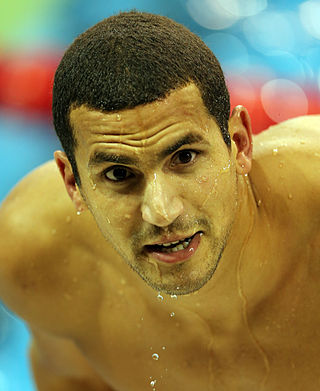
Oussama "Ous" Mellouli is a Tunisian swimmer who competes in the freestyle and medley events. He is a three-time Olympic medalist, is an African record holder, and trains with the USC Trojans team based at the University of Southern California, where he studied as a computer science undergraduate and swam collegiately.
M. A. G. Osmani, Bangladeshi general (b. 1918) deaths

Muhammad Ataul Goni Osmani, also known as Bangabir, was a Bengali military leader. Osmani's career spanned five decades, beginning with service in the British Indian Army in 1939. He fought in the Burma Campaign during World War II. After the partition of India in 1947, he joined the Pakistan Army and served in the East Bengal Regiment, retiring as a colonel in 1967. Osmani joined the Provisional Government of Bangladesh in 1971 as the commander-in-chief of the nascent Bangladesh Forces. Regarded as the founder of the Bangladesh Armed Forces, Osmani retired as a four-star general from the Bangladesh Army in 1972.
Agyness Deyn, English model, actress, and singer births

Agyness Deyn is an English model and actress. She is best known for her successful modelling career in the 2000s, and has been called one of the decade's top models. Since her retirement from modelling in the 2010s, she has pursued acting and design, among other ventures.
Aleksandr Dmitrijev, Estonian footballer births

Aleksandr Dmitrijev is an Estonian football coach and an Estonian professional footballer who plays as a midfielder for Legion.
Rickie Lambert, English footballer births
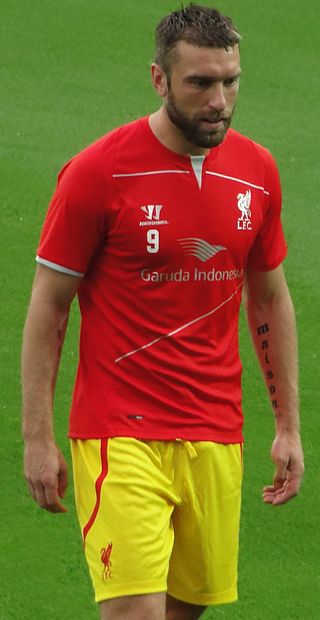
Rickie Lee Lambert is an English former professional footballer. During his career, he played as a striker, before retiring in 2017. He won a number of personal awards, including two league Golden Boots. Lambert was known for his large stature and physical performances, drawing comparisons with former Southampton player Matt Le Tissier for his ability in front of goal and penalty record.
Lupe Fiasco, American rapper births

Wasalu Muhammad Jaco, better known by his stage name Lupe Fiasco, is an American rapper, singer, record producer, and entrepreneur. He rose to fame in 2006 following the success of his debut album, Lupe Fiasco's Food & Liquor. He also performs as the frontman of rock band Japanese Cartoon under his real name. As an entrepreneur, Fiasco was the chief executive officer of 1st and 15th Entertainment.
Jay Howard, English race car driver births

Jay Howard is a British professional race car driver who competes in the IndyCar Series and Indianapolis 500 and resides in Indianapolis, Indiana. Howard was the 2005 US Formula Ford Zetec champion and moved up to the Indy Lights series, where he captured two wins on his way to the 2006 championship for Sam Schmidt Motorsports in his rookie season. He qualified for his first Indianapolis 500 in 2011.
Susanna Kallur, Swedish sprint hurdler births

Susanna Elisabeth "Sanna" Kallur is a Swedish former athlete competing mainly in sprint hurdles. She has won several international medals, including the gold medal in the 100 m hurdles at the 2006 European Athletics Championships. Kallur holds the world indoor record for 60 m hurdles.
Jerry Owens, American baseball player births

Jerry Lee Owens is an American former professional baseball player. He played parts of four seasons in Major League Baseball (MLB) with the Chicago White Sox from 2006 to 2009.
Qyntel Woods, American basketball player births

Qyntel Deon Woods is an American former professional basketball player. He played mainly at the small forward position, but he also played at the shooting guard position, on occasion.
Longineu W. Parsons III, French-American drummer births
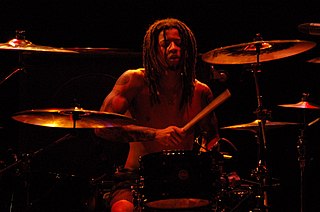
Longineu Warren "LP" Parsons III is a French-born American rock musician. He is best known for his time as the drummer for the American pop punk band Yellowcard.
Erich Hückel, German physicist and chemist (b. 1895) deaths

Erich Armand Arthur Joseph Hückel was a German physicist and physical chemist. He is known for two major contributions:The Debye–Hückel theory of electrolytic solutions The Hückel method of approximate molecular orbital (MO) calculations on π electron systems.
Stéphane Dalmat, French footballer births

Stéphane Dalmat is a French former footballer who played as a midfielder. Dalmat was a very versatile player who usually occupied a variety of positions on the midfield. His good ball control and dribbling ability has often seen managers use him wide on the left of midfield, or in the centre as an attacking midfielder. Despite being left footed, he was comfortable with either foot.
Eric Mun, American-South Korean singer and actor births

Eric Mun is a South Korean rapper, songwriter and actor. He is a member and leader of the South Korean boy band Shinhwa. He is also well known for several dramas such as Phoenix (2004), Super Rookie (2005), and Another Oh Hae-young (2016). He was with Top Class Entertainment from 2007 to December 2013. In 2014, Mun and his manager of 10 years, Lee Jong-hyun, set up a new management agency, E&J Entertainment, for his individual activities. Mun is also the CEO of Shinhwa Company, the home agency of his group, with Lee Min-woo as co-CEO since 2011, and with the remaining members—Kim Dong-wan, Shin Hye-sung, Jun Jin and Andy Lee—as shareholders.
Valentino Rossi, Italian motorcycle racer births

Valentino Rossi is an Italian former professional motorcycle road racer and nine-time Grand Prix motorcycle racing World Champion. Nicknamed The Doctor, he is widely considered to be one of the greatest motorcycle racers of all time, with some labelling him as the greatest ever. He has nine Grand Prix World Championships to his name, seven of which were in the premier 500cc/MotoGP class. He holds the record of most premier class victories, with 89 victories to his name. He won premier class World Championships with both Honda and Yamaha. He is also the only road racer to have competed in 400 or more Grands Prix, and rode with the number 46 for his entire career.
Tia Hellebaut, Belgian high jumper and chemist births
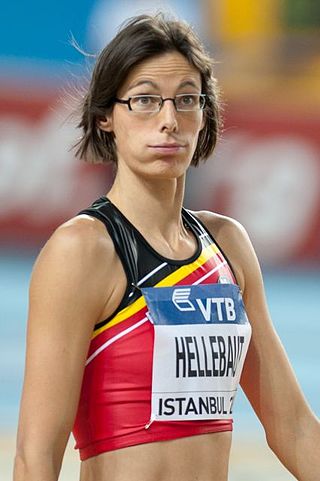
Tia Hellebaut is a retired Belgian track and field athlete, as well as a chemist, who started out in her sports career in the heptathlon, and afterwards specialized in the high jump event. She has cleared 2.05 metres both indoors and outdoors.
Wasim Jaffer, Indian cricketer births

Wasim Jaffer pronunciation (help·info) is an Indian retired professional cricketer. He was a right-handed opening batsman and an occasional right arm off-break bowler. He is currently the highest run-scorer in Ranji Trophy cricket, surpassing Amol Muzumdar. In November 2018, he became the first batsman to score 11,000 runs in the competition. In January 2019, he became the most capped player in Ranji Trophy history with appearance of his 146th match surpassing Madhya Pradesh's Devendra Bundela (145). He was appointed as batting coach for Bangladesh cricket team. In March 2020, he announced his retirement from all forms of cricket.
John Tartaglia, American actor, singer, and puppeteer births
John Nicholas Tartaglia is an American actor, singer, and puppeteer.
Ian Clarke, Irish-American computer scientist, founded Freenet births

Ian Clarke is the original designer and lead developer of Freenet.

Freenet is a peer-to-peer platform for censorship-resistant, anonymous communication. It uses a decentralized distributed data store to keep and deliver information, and has a suite of free software for publishing and communicating on the Web without fear of censorship. Both Freenet and some of its associated tools were originally designed by Ian Clarke, who defined Freenet's goal as providing freedom of speech on the Internet with strong anonymity protection.
Ahman Green, American football player births

Ahman Rashad Green is a former American football running back who played 12 seasons in the National Football League (NFL). Green played college football at Nebraska and was drafted by the Seattle Seahawks in the 3rd round of the 1998 NFL Draft, playing there for two seasons before being traded to the Green Bay Packers, with whom he played for eight of the next ten seasons. Green also played for the Houston Texans, and was a four-time Pro Bowl selection with the Packers, where he holds the franchise record for rushing yards. He is currently the head esports coach at Lakeland University.
Janani Luwum, bishop, Church of Uganda, martyr (b. c.1922) deaths

Janani Jakaliya Luwum was the archbishop of the Church of Uganda from 1974 to 1977 and one of the most influential leaders of the modern church in Africa. He was arrested in February 1977 and died shortly after. Although the official account describes a car crash, it is generally accepted that he was murdered on the orders of then-President Idi Amin.
Rózsa Péter, Hungarian mathematician (b. 1905) deaths

Rózsa Péter, born Rózsa Politzer, was a Hungarian mathematician and logician. She is best known as the "founding mother of recursion theory".
Eric Byrnes, American baseball player and sportscaster births

Eric James Byrnes, is a baseball analyst and former professional baseball outfielder. He played in Major League Baseball (MLB) for the Oakland Athletics, Colorado Rockies, Baltimore Orioles, Arizona Diamondbacks, and Seattle Mariners. Byrnes retired from playing in 2010 and was an analyst for MLB Network until 2021.
Kyo, Japanese singer-songwriter and producer births

Kyo is a Japanese musician, singer, lyricist and poet. He is best known as the vocalist and lyricist of the metal band Dir En Grey. He was formerly in a string of visual kei rock bands, with the most notable being La:Sadie's from 1995 to 1997. He then started Dir En Grey in February 1997, following La:Sadie's disbandment with three of its members, formed the experimental rock band Sukekiyo in 2013, and the supergroup Petit Brabancon in 2021. Kyo was inspired to become a musician when he saw a picture of Buck-Tick vocalist Atsushi Sakurai on the desk of a junior high school classmate. When he then discovered X Japan he was particularly fond of hide and had his parents buy him the guitarist's black signature model guitar. However, after realizing how difficult it was to play guitar and then bass, he then switched to vocals.
Morgan Taylor, American hurdler and coach (b. 1903) deaths

Frederick Morgan Taylor was an American hurdler and the first athlete to win three Olympic medals in the 400 m hurdles. He was the flag bearer for the United States at his last Olympics in 1932.
Mahershala Ali, American actor births

Mahershala Ali is an American actor. He has received multiple accolades, including two Academy Awards, a Golden Globe Award and a Primetime Emmy Award. Time magazine named him one of the 100 most influential people in the world in 2019, and in 2020, The New York Times ranked him among the 25 greatest actors of the 21st century.
José Dominguez, Portuguese international footballer and manager births
José Manuel Martins Dominguez is a Portuguese former footballer who played as a winger, and a later became a manager.
John Garand, Canadian-American engineer, designed the M1 Garand Rifle (b. 1888) deaths

Jean Cantius Garand, also known as John C. Garand, was a Québec-born American designer of firearms who created the M1 Garand, a semi-automatic rifle that was widely used by the U.S. Army and U.S. Marine Corps during both World War II and the Korean War.

The M1 Garand or M1 rifle is a semi-automatic rifle that was the service rifle of the U.S Army during World War II and the Korean War.
Cathy Freeman, Australian sprinter births
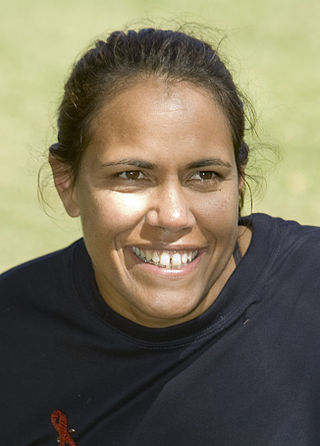
Catherine Astrid Salome Freeman is an Aboriginal Australian former sprinter, who specialised in the 400 metres event. Her personal best of 48.63 seconds currently ranks her as the ninth-fastest woman of all time, set while finishing second to Marie-José Pérec's number-four time at the 1996 Olympics. She became the Olympic champion for the women's 400 metres at the 2000 Summer Olympics, at which she lit the Olympic Flame.
Jerome Bettis, American football player births

Jerome Abram Bettis Sr. is a former American football running back who played in the National Football League (NFL) for 13 seasons, primarily with the Pittsburgh Steelers. Nicknamed "the Bus" for his large size and running style, he was selected 10th overall by the Los Angeles Rams in the 1993 NFL Draft. Bettis was a member of the Rams for three seasons before being traded to the Steelers, where he spent the remainder of his career. A six-time Pro Bowl and two-time first-team All-Pro selection, he is regarded as one of the greatest power runners of all time and ranks eighth in NFL rushing yards. He retired in 2006 after helping the Steelers win a Super Bowl title in Super Bowl XL, the franchise's first in over two decades. Bettis was inducted to the Pro Football Hall of Fame in 2015.
Zoran Čampara, Bosnian football player births
Zoran Čampara is a Bosnian Serb retired football player.
Sarah Clarke, American actress births

Sarah Clarke is an American actress, best known for her role as Nina Myers on 24, and also for her roles as Renée Dwyer, Bella Swan's mother, in the 2008 film Twilight, Erin McGuire on the short-lived TV show Trust Me, and CIA Officer Lena Smith on the USA Network show Covert Affairs. She recently starred as Eleanor Wish in Amazon Studios' police procedural drama Bosch.
Naomi Nishida, Japanese actress births
Naomi Nishida is an actress. She won the Best Supporting Actress award at the 2001 Yokohama Film Festival and at the 25th Hochi Film Award for her performance in Nabbie's Love.
Darrell Trindall, Australian rugby league player births
Darrell Wayne 'Tricky' Trindall is an Australian former rugby league footballer who played in the 1990s and 2000s.
Michael Avenatti, American attorney and pundit births

Michael John Avenatti is an American former attorney, best known for his representation of adult film actress Stormy Daniels in her lawsuits against then U.S. president Donald Trump, and for his attempted extortion of sports apparel company Nike that led to his conviction of several felonies. His firm had represented celebrity defendants and has filed suits against Fortune 500 companies. Avenatti has appeared extensively on television and in print as a legal and political commentator, and as a representative for prominent clients.
Craig Laundy, Australian politician births

Craig Arthur Samuel Laundy is a former Australian Liberal Party politician who served as Member of Parliament for Reid from 2013 until his retirement in 2019. He served as Minister for Small and Family Business, the Workplace and Deregulation in the Second Turnbull Ministry, before resigning in August 2018 following the ousting of Malcolm Turnbull as Prime Minister. On 15 March 2019, Laundy announced he would retire from politics at the 2019 federal election.
Angelo Peruzzi, Italian footballer and manager births
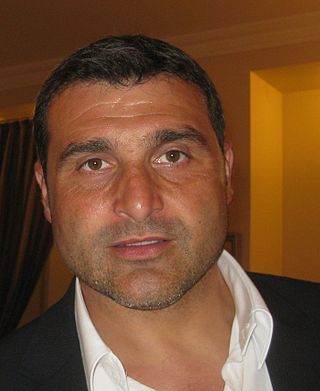
Angelo Peruzzi is an Italian football coach and former goalkeeper, and a three-time winner of the Serie A Goalkeeper of the Year award.
Warren Ellis, English author and screenwriter births
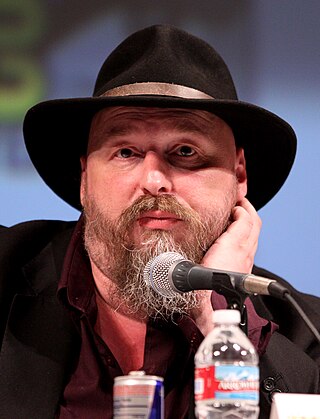
Warren Girard Ellis is a British comic book writer, novelist, and screenwriter. He is best known as the co-creator of several original comics series, including Transmetropolitan (1997–2002), Global Frequency (2002–2004) and Red (2003–2004), which was adapted into the feature films Red (2010) and Red 2 (2013). Ellis is the author of the novels Crooked Little Vein (2007) and Gun Machine (2013) and the novella Normal (2016).
Keith Gretzky, Canadian ice hockey player and coach births
Keith Edward Gretzky is a Canadian ice hockey executive and former player who served as interim general manager of the Edmonton Oilers, from January 23 to May 7, 2019. He is a brother of ice hockey legend Wayne Gretzky.
Smiley Burnette, American singer-songwriter and actor (b. 1911) deaths
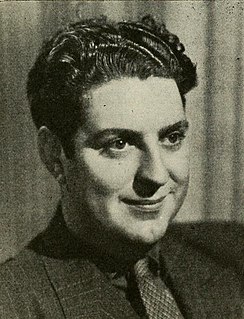
Lester Alvin Burnett, better known as Smiley Burnette, was an American country music performer and a comedic actor in Western films and on radio and TV, playing sidekick to Gene Autry, Roy Rogers, and other B-movie cowboys. He was also a prolific singer-songwriter who is reported to have played proficiently over 100 musical instruments, sometimes more than one simultaneously. His career, beginning in 1934, spanned four decades, including a regular role on CBS-TV's Petticoat Junction in the 1960s.
Dave Lombardo, Cuban-American drummer births

David Lombardo is a Cuban-American drummer, best known as a co-founding member of American thrash metal band Slayer. He is currently playing drums with Testament, Fantômas, Suicidal Tendencies, Dead Cross, Mr. Bungle, and the Misfits.
Bebeto, Brazilian footballer and manager births

José Roberto Gama de Oliveira, known as Bebeto, is a Brazilian former professional football player who played as a forward. He entered politics in the 2010 Brazilian General Elections and was elected to the Legislative Assembly of Rio de Janeiro representing the Democratic Labour Party.
Christopher Eccleston, English actor births

Christopher Eccleston is an English actor. A two-time BAFTA Award nominee, he is best known for his television and film work, which includes his role as the ninth incarnation of the Doctor in the BBC sci-fi series Doctor Who (2005), playing Matt Jamison in The Leftovers (2014–2017), and his collaborations with filmmakers Danny Boyle and Michael Winterbottom.
John Balance, English singer-songwriter (d. 2004) births

Geoffrey Nigel Laurence Rushton, better known under the pseudonyms John Balance or the later variation Jhonn Balance, was an English musician, occultist, artist and poet.
Des Hasler, Australian rugby league player and coach births

Desmond John Hasler is an Australian professional rugby league coach, and a former professional rugby league footballer who played as halfback, lock and hooker.
Liu Kang, Chinese footballer and manager (d. 2013) births
Liu Kang was a Chinese football player and coach.
Niko Nirvi, Finnish journalist births
Niko Nirvi, pen name Nnirvi, is a long-term major icon in the Finnish gaming world. He is well known for writing computer game reviews since the 1980s in MikroBitti, C=Lehti and the computer game yearbooks that were predecessors of the Pelit magazine. He has worked for the latter since its founding in 1992, and holds a column in addition to making reviews and other reports.
Andy Taylor, English singer-songwriter, guitarist, and producer births

Andrew Arthur Taylor is an English guitarist, best known as a former member of both Duran Duran and the Power Station. He has also recorded and performed as a solo artist, and served as a guitarist, songwriter and record producer for the likes of Robert Palmer, Rod Stewart, the Almighty, Thunder, Love and Money, Mark Shaw, Then Jerico, C. C. Catch, Paul Rodgers, Belinda Carlisle, Gun and many more.
Dazzy Vance, American baseball player (b. 1891) deaths

Charles Arthur "Dazzy" Vance was an American professional baseball player. He played as a pitcher for five different franchises in Major League Baseball (MLB) in a career that spanned twenty years. Known for his impressive fastball, Vance was the only pitcher to lead the National League in strikeouts seven consecutive seasons. Vance was inducted into the Baseball Hall of Fame in 1955.
Pete Willis, English guitarist and songwriter births
Peter Andrew Willis is an English musician, songwriter and guitarist, best known as a founding member of the band Def Leppard. He co-wrote many tracks and played guitar on the band's first three albums: On Through the Night, High 'n' Dry, and Pyromania, which was being recorded at the time of his departure. He was fired from Def Leppard in 1982 and replaced by Phil Collen. In 2019, Willis was inducted into the Rock and Roll Hall of Fame as a member of Def Leppard.
John McEnroe, American tennis player and sportscaster births

John Patrick McEnroe Jr. is an American former professional tennis player. He was known for his shot-making and volleying skills, his rivalries with Björn Borg and Jimmy Connors, and his confrontational on-court behavior, which frequently landed him in trouble with umpires and tennis authorities.
Kelly Tripucka, American basketball player and sportscaster births
Peter Kelly Tripucka is an American former professional basketball player who played in the National Basketball Association (NBA) from 1981 to 1991. He was a two-time NBA All Star and averaged over twenty points a game in five of the ten seasons that he played in. Tripucka played for the Detroit Pistons, Utah Jazz and was a member of the Charlotte Hornets during their inaugural season in the NBA. The son of NFL Pro-Bowl quarterback Frank Tripucka, Kelly was a color analyst for the New York Knicks for four years, ending with the 2011–12 season.
Natalie Angier, American author births
Natalie Angier /ænˈdʒɪər/ is an American nonfiction writer and a science journalist for The New York Times. Her awards include the Pulitzer Prize for Beat Reporting in 1991 and the AAAS Westinghouse Science Journalism Award in 1992. She is also noted for her public identification as an atheist and received the Freedom from Religion Foundation’s Emperor Has No Clothes Award in 2003.
Ice-T, American rapper and actor births

Tracy Lauren Marrow, better known by his stage name Ice-T, is an American rapper, songwriter, actor, and producer. He began his career as an underground rapper in the 1980s and was signed to Sire Records in 1987, when he released his debut album Rhyme Pays. The following year, he founded the record label Rhyme $yndicate Records and released another album, Power, which would go platinum. He also released several other albums that went gold.
Oscar Schmidt, Brazilian basketball player births

Oscar Daniel Bezerra Schmidt is a retired Brazilian professional basketball player. He is also commonly known as Oscar Schmidt in Spain, where he played for Fórum Valladolid for the 1993–94 and 1994–95 seasons, and simply Oscar, or Mão Santa, in his homeland. Schmidt primarily played the shooting guard and small forward position, was 2.05 m tall and weighed 110 kg (243 lbs). He was born in Natal, Rio Grande do Norte, Brazil.
Herb Williams, American basketball player and coach births

Herbert L. Williams is an American former basketball player in the National Basketball Association (NBA) for eighteen seasons from 1981 to 1999. Williams served as the interim head coach and the assistant coach of the NBA's New York Knicks. He was last an assistant coach for the New York Liberty of the WNBA.
LeVar Burton, American actor, director, and producer births

Levar Burton Jr. is an American actor, director, and television host, best known for playing Geordi La Forge in Star Trek: The Next Generation (1987–1994). He also played Kunta Kinte in the ABC miniseries Roots (1977), and was host of the PBS Kids educational television series Reading Rainbow for more than 23 years (1983–2006). He received 12 Daytime Emmy Awards and a Peabody Award as host and executive producer of Reading Rainbow.
Josef Hofmann, Polish-American pianist and composer (b. 1876) deaths

Josef Casimir Hofmann was a Polish-American pianist, composer, music teacher, and inventor.
Vincent Ward, New Zealand director and screenwriter births

Vincent Ward is a New Zealand film director, screenwriter and artist. His films have received international recognition at both the Academy Awards and the Cannes Film Festival.
Iain Banks, Scottish author and playwright (d. 2013) births

Iain Banks was a Scottish author, writing mainstream fiction as Iain Banks and science fiction as Iain M. Banks, adding the initial of his adopted middle name Menzies. After the success of The Wasp Factory (1984), he began to write full time. His first science fiction book, Consider Phlebas, appeared in 1987, marking the start of the Culture series. His books have been adapted for theatre, radio and television. In 2008, The Times named Banks in their list of "The 50 greatest British writers since 1945".
Margaux Hemingway, American model and actress (d. 1996) births

Margaux Louise Hemingway was an American fashion model and actress. She gained success as a supermodel in the mid-1970s, appearing on the covers of magazines including Cosmopolitan, Elle, Harper's Bazaar, Vogue, and Time.
Michael Holding, Jamaican cricketer and sportscaster births

Michael Anthony Holding is a Jamaican former cricketer and commentator who played for the West Indies cricket team. Widely regarded as one of the greatest pace bowlers in cricket history, he was nicknamed "Whispering Death" due to his silent, light-footed run up to the bowling crease. His bowling action was famously smooth and extremely fast, and he used his height to generate large amounts of bounce and zip off the pitch. He was part of the fearsome West Indian pace bowling battery, together with Andy Roberts, Joel Garner, Colin Croft, Wayne Daniel, Malcolm Marshall and Sylvester Clarke, that devastated opposing batting line-ups throughout the world in the late seventies and early eighties. Early in his Test career, in 1976, Holding broke the record for best bowling figures in a Test match by a West Indies bowler, 14 wickets for 149 runs (14/149). The record still stands. During his first-class cricket career, Holding played for Jamaica, Canterbury, Derbyshire, Lancashire and Tasmania. In September 2021, Holding announced his retirement from being a commentator.
John Bradbury, English drummer, songwriter, and producer (d. 2015) births

John "Brad" Bradbury was an English drummer and record producer. He is best known for having been the drummer in the English ska group The Specials.
Lanny McDonald, Canadian ice hockey player and manager births

Lanny King McDonald is a Canadian former professional ice hockey player for the Toronto Maple Leafs, Colorado Rockies and Calgary Flames of the National Hockey League (NHL). He played over 1,100 games during a 16-year career in which he scored 500 goals and over 1,000 points. His total of 66 goals in 1982–83 remains the Flames' franchise record for a single season.
Roberta Williams, American video game designer, co-founded Sierra Entertainment births
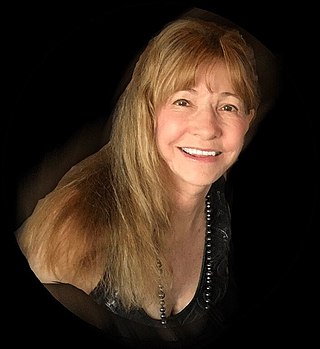
Roberta Lynn Williams is an American video game designer and writer, who co-founded Sierra On-Line with her husband, game developer Ken Williams. In 1980, her first game, Mystery House, became a modest commercial success; it is credited as the first graphic adventure game. She is also known for creating and maintaining the King's Quest series, as well as designing the full motion video game Phantasmagoria in 1995.
Sierra Entertainment, Inc. was an American video game developer and publisher founded in 1979 by Ken and Roberta Williams. The company is known for pioneering the graphic adventure game genre, including the first such game, Mystery House. It is also known for its graphical adventure game series King's Quest, Space Quest, Police Quest, Gabriel Knight, Leisure Suit Larry, and Quest for Glory, as well as being the original publishers of Valve's Half-Life series.
Peter Kitchen, English footballer births
Michael Peter Kitchen is an English former professional footballer who played in the Football League in the 1970s and 80s as a forward.
James Ingram, American singer-songwriter and producer (d. 2019) births

James Edward Ingram was an American singer, songwriter and record producer. He was a two-time Grammy Award-winner and a two-time Academy Award nominee for Best Original Song. After beginning his career in 1973, Ingram charted eight Top 40 hits on the U.S. Billboard Hot 100 chart from the early 1980s until the early 1990s, as well as thirteen top 40 hits on the Hot R&B/Hip-Hop Songs chart. In addition, he charted 20 hits on the Adult Contemporary chart. He had two number-one singles on the Hot 100: the first, a duet with fellow R&B artist Patti Austin, 1982's "Baby, Come to Me" topped the U.S. pop chart in 1983; "I Don't Have the Heart", which became his second number-one in 1990 was his only number-one as a solo artist.
Barry Foote, American baseball player and coach births
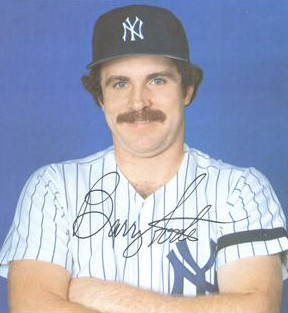
Barry Clifton Foote, is an American former professional baseball player, scout, coach, and minor league manager. He played as a catcher in Major League Baseball (MLB) for the Montreal Expos (1973–1977), Philadelphia Phillies (1977–1978), Chicago Cubs (1979–1981), and New York Yankees (1981–1982). Although he was highly regarded as a younger player, he suffered numerous injuries and played most of his baseball career as a reserve player.
Peter Hain, Welsh politician, Secretary of State for Wales births
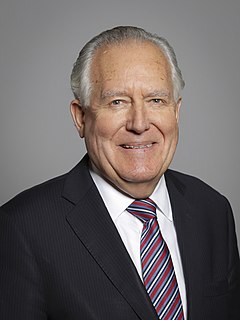
Peter Gerald Hain, Baron Hain is a British politician who served as Secretary of State for Northern Ireland from 2005 to 2007, Secretary of State for Work and Pensions from 2007 to 2008 and twice as Secretary of State for Wales from 2002 to 2008 and from 2009 to 2010. A member of the Labour Party, he was Member of Parliament (MP) for Neath between 1991 and 2015.

The secretary of state for Wales, also referred to as the Welsh secretary, is a secretary of state in the Government of the United Kingdom, with responsibility for the Wales Office. The incumbent is a member of the Cabinet of the United Kingdom, 19th in the ministerial ranking.
Bob O'Reilly, Australian rugby league player births
Robert Edward O'Reilly is an Australian former professional rugby league footballer who played in the 1960s, 1970s and 1980s. An Australian international and New South Wales interstate representative prop forward, he played in the New South Wales Rugby League premiership, mainly for the Parramatta Eels, but also for the Eastern Suburbs Roosters and Penrith Panthers.
Kaiketsu Masateru, Japanese sumo wrestler and coach (d. 2014) births

Kaiketsu Masateru was a Japanese sumo wrestler, who reached the second highest rank of ōzeki on two occasions. He also won two top division tournament championships. After his retirement in 1979 he became a coach under the name of Hanaregoma-oyakata and established Hanaregoma stable. He was also chairman of the Japan Sumo Association from 2010 to 2012.
Jaroslav Kubera, Czech politician (d. 2020) births
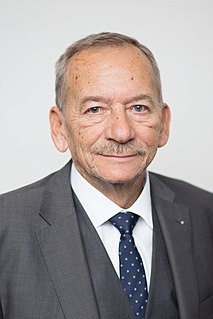
Jaroslav Kubera was a Czech politician for the Civic Democratic Party, who served in the Czech Senate representing Teplice from 2000 and the Senate President from 2018 until his death in 2020. He previously served as mayor of Teplice from 1994 to 2018.
Glyn Davies, Welsh farmer and politician births

Edward Glyn Davies is a former Welsh Conservative politician who was the Member of Parliament (MP) for Montgomeryshire from 2010 to 2019. Davies previously served as a Member of the Welsh Assembly (AM) for the Mid and West Wales region from 1999 to 2007.
Richard Ford, American novelist and short story writer births

Richard Ford is an American novelist and short story writer. His best-known works are the novel The Sportswriter and its sequels, Independence Day, The Lay of the Land and Let Me Be Frank With You, and the short story collection Rock Springs, which contains several widely anthologized stories. Ford received the Pulitzer Prize for Fiction in 1996 for Independence Day. Ford's novel Wildlife was adapted into a 2018 film of the same name. He won the 2018 Park Kyong-ni Prize.
António Mascarenhas Monteiro, Cape Verdean politician, 2nd President of Cape Verde (d. 2016) births
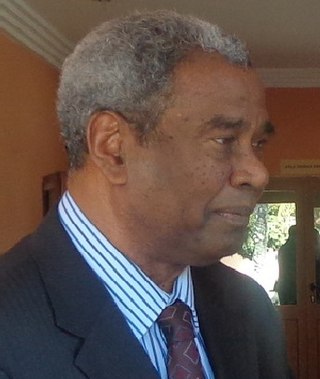
António Manuel Mascarenhas Gomes Monteiro was the first democratically elected President of Cape Verde from 22 March 1991 to 22 March 2001.

This article lists the presidents of Cape Verde, an island country in the Atlantic Ocean off the coast of West Africa, since the establishment of the office of president in 1975. Aristides Pereira was the first person to hold the office, taking effect on 8 July 1975. The incumbent is José Maria Neves, having taken office on 9 November 2021.
Dadasaheb Phalke, Indian director, producer, and screenwriter (b. 1870) deaths
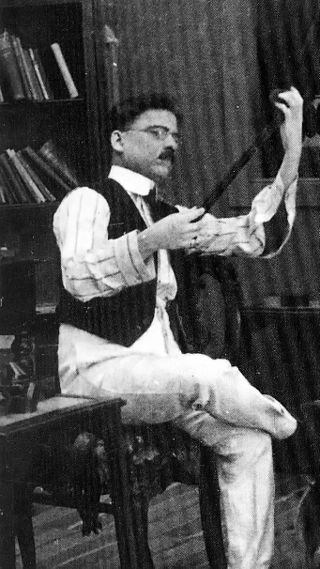
Dhundiraj Govind Phalke, popularly known as Dadasaheb Phalke, was an Indian producer-director-screenwriter, known as "the Father of Indian cinema". His debut film, Raja Harishchandra, was the first Indian movie released in 1913, and is now known as India's first full-length feature film. He made 95 feature-length films and 27 short films in his career, spanning 19 years, until 1937, including his most noted works: Mohini Bhasmasur (1913), Satyavan Savitri (1914), Lanka Dahan (1917), Shri Krishna Janma (1918) and Kaliya Mardan (1919).
Richard Williams, American tennis player and coach births

Richard Dove Williams Jr. is a former American tennis coach and the father of tennis players Venus Williams and Serena Williams.
Kim Jong-il, North Korean commander and politician, 2nd Supreme Leader of North Korea (d. 2011) births

Kim Jong-il was a North Korean politician who was the second supreme leader of North Korea from 1994 to 2011. He led North Korea from the 1994 death of his father Kim Il-sung, the first Supreme Leader, until his own death in 2011, when he was succeeded by his son, Kim Jong-un.
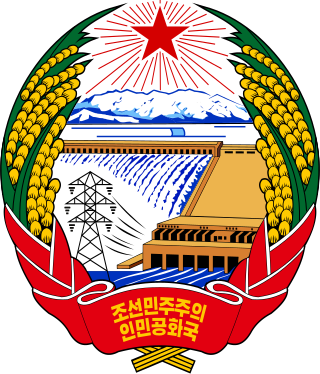
The supreme leader of North Korea is the de facto paramount leader of the Workers' Party of Korea, the state and the Korean People's Army. The title has not been written into the national constitution as a separate office, but it currently states that the president of the State Affairs Commission is the supreme leader of North Korea. Likewise, according to the WPK Charter, the general secretary of the WPK is the supreme leader of the Workers' Party. Formerly, under Kim Jong-il, this title was bestowed on the office of Chairman of the National Defence Commission, who was also the WPK general secretary. The first leader of the state prior to the existence of North Korea was Terenty Shtykov who served as the head of the Soviet Civil Administration, the governing authority controlled by the Soviet Union that ruled the northern half of Korea from 1945 to 1948.
Hannelore Schmatz, German mountaineer (d. 1979) births
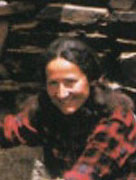
Hannelore Schmatz was a German mountaineer who was the fourth woman to summit Mount Everest. She collapsed and died as she was returning from summiting Everest via the southern route; Schmatz was the first woman and first German citizen to die on the upper slopes of Everest.
Adolfo Azcuna, Filipino lawyer and judge births
Adolfo Sevilla Azcuna is a Filipino jurist who served as an Associate Justice of the Supreme Court of the Philippines from 2002 to 2009. He was appointed to the Court by President Gloria Macapagal Arroyo on October 24, 2002. As of November 2019 he was the Chancellor of the Philippine Judicial Academy (PHILJA), having been appointed to that position by the Supreme Court of the Philippines on June 1, 2009.
John Corigliano, American composer and academic births
John Paul Corigliano Jr. is an American composer of contemporary classical music. His scores, now numbering over one hundred, have won him the Pulitzer Prize, five Grammy Awards, Grawemeyer Award for Music Composition, and an Oscar.
Paul Bailey, British novelist, critic, and biographer births
Paul Bailey FRSL is a British novelist and critic, as well as a biographer of Cynthia Payne and Quentin Crisp.
Yuri Manin, Russian-German mathematician and academic births

Yuri Ivanovich Manin is a Russian mathematician, known for work in algebraic geometry and diophantine geometry, and many expository works ranging from mathematical logic to theoretical physics. Moreover, Manin was one of the first to propose the idea of a quantum computer in 1980 with his book Computable and Uncomputable.
Brian Bedford, English-American actor and director (d. 2016) births

Brian Bedford was an English actor. He appeared in film and on stage, and was an actor-director of Shakespeare productions. Bedford was nominated for seven Tony Awards for his theatrical work.
Sonny Bono, American actor, singer, and politician (d. 1998) births
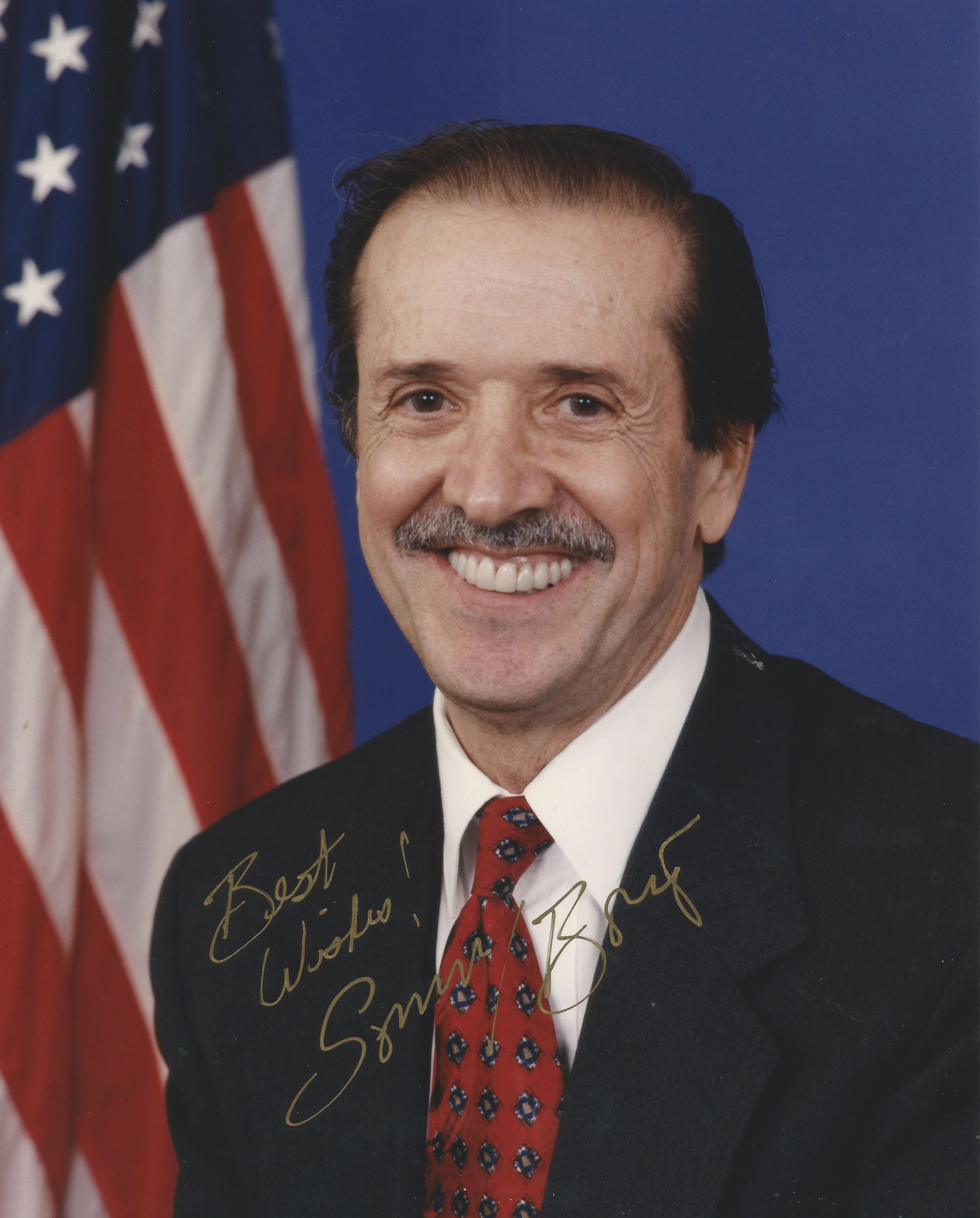
Salvatore Phillip "Sonny" Bono was an American singer, actor, and politician who came to fame in partnership with his second wife Cher as the popular singing duo Sonny & Cher. A member of the Republican Party, Bono served as the 16th mayor of Palm Springs, California, from 1988 to 1992, and served as the U.S. representative for California's 44th district from 1995 until his death in 1998.
Stephen Gaskin, American activist, co-founded The Farm (d. 2014) births

Stephen Gaskin was an American counterculture Hippie icon best known for his presence in the Haight-Ashbury district of San Francisco in the 1960s and for co-founding "The Farm", a spiritual commune in 1970. He was a Green Party presidential primary candidate in 2000 on a platform which included campaign finance reform, universal health care, and decriminalization of marijuana. He was the author of over a dozen books, political activist, a philanthropic organizer and a self-proclaimed professional Hippie.

The Farm is an intentional community in Lewis County, Tennessee, near the town of Summertown, Tennessee, based on principles of nonviolence and respect for the Earth. It was founded in 1971 by Stephen Gaskin and 300 spiritual seekers from Haight-Ashbury and San Francisco. The Farm was the setting for "the rebirth of midwifery in the United States" and the creation of "the modern home-birth movement." Its members have founded a number of nonprofit organizations, including Plenty International, a relief and development organization, and Swan Conservation Trust, who established the 1,358 acres (550 ha) Big Swan Headwaters Preserve. The Farm has approximately 200 members and residents.
Bradford Parkinson, American colonel and engineer births
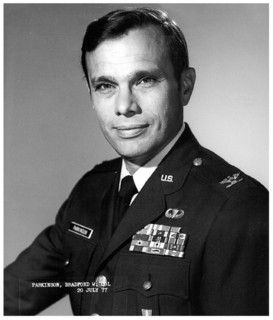
Bradford Parkinson is an American engineer and inventor, retired United States Air Force Colonel and Emeritus Professor at Stanford University. He is best known as the lead architect, advocate and developer, with early contributions from Ivan Getting and Roger Easton, of the Air Force NAVSTAR program, better known as Global Positioning System.
Kenneth Price, American painter and sculptor (d. 2012) births

Kenneth Price was an American artist who predominantly created ceramic sculpture. He studied at the Chouinard Art Institute and Otis Art Institute in Los Angeles, before receiving his BFA degree from the University of Southern California in 1956. He continued his studies at Chouinard Art Institute in 1957 and received an MFA degree from New York State College of Ceramics at Alfred University in 1959. Kenneth Price studied ceramics with Peter Voulkos at Otis and was awarded a Tamarind Fellowship.
August Coppola, American author and academic (d. 2009) births

August Floyd Coppola was an American academic, author, film executive, and advocate for the arts. He was the brother of director Francis Ford Coppola and actress Talia Shire, and the father of actor Nicolas Cage, radio DJ Marc Coppola and director Christopher Coppola.
Marlene Hagge, American golfer births

Marlene Hagge is an American former professional golfer. She was one of the thirteen founders of the LPGA in 1950. She won one major championship and 26 LPGA Tour career events. She is a member of the World Golf Hall of Fame.
Ahmad Tejan Kabbah, Sierra Leonean economist, lawyer, and politician, 3rd President of Sierra Leone (d. 2014) births

Alhaji Ahmad Tejan Kabbah was a Sierra Leonean politician who served twice as the 3rd President of Sierra Leone, from 1996 to 1997 and again from 1998 to 2007. An economist and attorney by profession, Kabbah spent many years working for the United Nations Development Programme. He retired from the United Nations and returned to Sierra Leone in 1992.

The president of the Republic of Sierra Leone is the head of state and the head of government of Sierra Leone, as well as the commander-in-chief of the Armed Forces.
Gretchen Wyler, American actress, singer, and dancer (d. 2007) births

Gretchen Wyler was an American actress and dancer. She was also an animal rights advocate and founder of the Genesis Awards for animal protection.
Ferdinand Buisson, French academic and politician, Nobel Prize laureate (b. 1841) deaths

Ferdinand Édouard Buisson was a French academic, educational bureaucrat, pacifist and Radical-Socialist politician. He presided over the League of Education from 1902 to 1906 and the Human Rights League (LDH) from 1914 to 1926. In 1927, the Nobel Peace Prize was awarded to him jointly with Ludwig Quidde. Philosopher and educator, he was Director of Primary Education. He was the author of a thesis on Sebastian Castellio, in whom he saw a "liberal Protestant" in his image. Ferdinand Buisson was the president of the National Association of Freethinkers. In 1905, he chaired the parliamentary committee to implement the separation of church and state. Famous for his fight for secular education through the League of Education, he coined the term laïcité ("secularism").

The Nobel Peace Prize is one of the five Nobel Prizes established by the will of Swedish industrialist, inventor and armaments manufacturer Alfred Nobel, along with the prizes in Chemistry, Physics, Physiology or Medicine and Literature. Since March 1901, it has been awarded annually to those who have "done the most or the best work for fraternity between nations, for the abolition or reduction of standing armies and for the holding and promotion of peace congresses".
Edgar Speyer, American-English financier and philanthropist (b. 1862) deaths
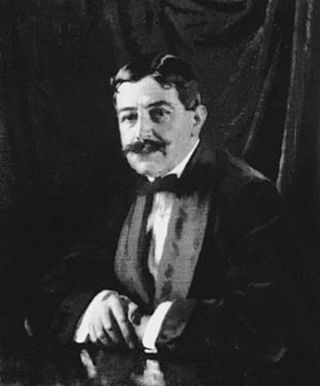
Sir Edgar Speyer, 1st Baronet was an American-born financier and philanthropist. He became a British subject in 1892 and was chairman of Speyer Brothers, the British branch of the Speyer family's international finance house, and a partner in the German and American branches. He was chairman of the Underground Electric Railways Company of London from 1906 to 1915, a period during which the company opened three underground railway lines, electrified a fourth and took over two more.
Otis Blackwell, American singer-songwriter and pianist (d. 2002) births
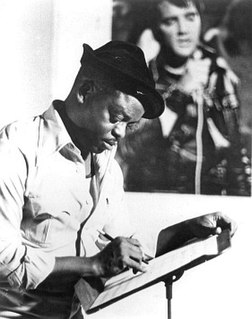
Otis Blackwell was an American songwriter whose work influenced rock and roll. His compositions include "Fever", "Great Balls of Fire" and "Breathless", "Don't Be Cruel", "All Shook Up" and "Return to Sender", and "Handy Man".
Ken Takakura, Japanese actor and singer (d. 2014) births
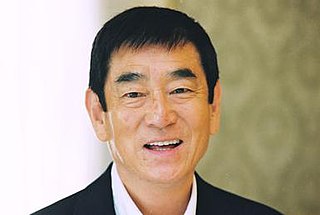
Ken Takakura , born Goichi Oda , was a Japanese actor and singer who appeared in over 200 films. Affectionately referred to as "Ken-san" by audiences, he was best known for his brooding style and the stoic presence he brought to his roles. He won the Japan Academy Prize for Outstanding Performance by an Actor in a Leading Role four times, more than any other actor. Takakura additionally received the Japanese Medal of Honor with purple ribbon in 1998, the Person of Cultural Merit award in 2006, and the Order of Culture in 2013.
Gerhard Hanappi, Austrian footballer and architect (d. 1980) births

Gerhard Hanappi was an Austrian football midfielder who is often regarded as one of the greatest Austrian footballers. He is also the father of Hardy Hanappi.
Peter Porter, Australian-English poet and educator (d. 2010) births

Peter Neville Frederick Porter OAM was a British-based Australian poet.
Eddie Foy Sr., American actor and dancer (b. 1856) deaths
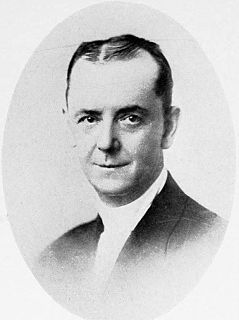
Edwin Fitzgerald, known professionally as Eddie Foy and Eddie Foy Sr., was an American actor, comedian, dancer and vaudevillian.
June Brown, English actress (d. 2022) births

June Muriel Brown was an English actress and author. She was best known for her role as Dot Cotton on the BBC soap opera EastEnders. In 2005, she won Best Actress at the Inside Soap Awards and received the Lifetime Achievement award at the British Soap Awards. Brown was appointed a Member of the Order of the British Empire (MBE) in the 2008 Birthday Honours for services to drama and to charity, and promoted OBE in the 2022 New Year Honours. In 2009, she was nominated for the BAFTA TV Award for Best Actress, making her the second performer to receive a BAFTA nomination for their work in a soap opera, after Jean Alexander. In February 2020 she announced that she had left EastEnders permanently, at the age of 93.
Margot Frank, German-Dutch holocaust victim (d. 1945) births
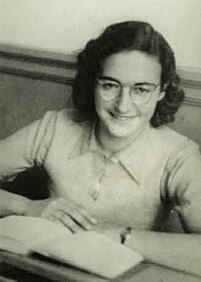
Margot Betti Frank was the elder daughter of Otto Frank and Edith Frank and the elder sister of Anne Frank. Margot's deportation order from the Gestapo hastened the Frank family into hiding. According to the diary of her younger sister, Anne, Margot kept a diary of her own, but no trace of it has ever been found. She died in Bergen-Belsen concentration camp.

The Holocaust, also known as the Shoah, was the genocide of European Jews during World War II. Between 1941 and 1945, Nazi Germany and its collaborators systematically murdered some six million Jews across German-occupied Europe; around two-thirds of Europe's Jewish population. The murders were carried out in pogroms and mass shootings; by a policy of extermination through labor in concentration camps; and in gas chambers and gas vans in German extermination camps, chiefly Auschwitz-Birkenau, Bełżec, Chełmno, Majdanek, Sobibór, and Treblinka in occupied Poland.
John Schlesinger, English actor and director (d. 2003) births

John Richard Schlesinger was an English film and stage director, and actor. He won the Academy Award for Best Director for Midnight Cowboy, and was nominated for the same award for two other films.
Samuel Willenberg, Polish-Israeli sculptor and painter (d. 2016) births

Samuel Willenberg, nom de guerre Igo, was a Polish Holocaust survivor, artist, and writer. He was a Sonderkommando at the Treblinka extermination camp and participated in the unit's planned revolt in August 1943. While 300 escaped, about 79 were known to survive the war. Willenberg reached Warsaw where, before war's end, he took part in the Warsaw Uprising. At his death, Willenberg was the last survivor of the August 1943 Treblinka prisoners' revolt.
Heinz-Wolfgang Schnaufer, German soldier and pilot (d. 1950) births

Heinz-Wolfgang Schnaufer was a German Luftwaffe night-fighter pilot and the highest-scoring night fighter ace in the history of aerial warfare. A flying ace is a military aviator credited with shooting down five or more enemy aircraft during combat. All Schnaufer's 121 victories were claimed during World War II, mostly against British four-engine bombers, for which he was awarded the Knight's Cross of the Iron Cross with Oak Leaves, Swords and Diamonds, Germany's highest military decoration at the time, on 16 October 1944. He was nicknamed "The Spook of St. Trond", from the location of his unit's base in occupied Belgium.
Vera-Ellen, German-American actress, singer, and dancer (d. 1981) births
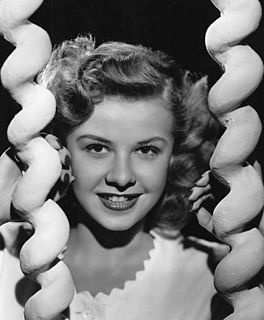
Vera-Ellen was an American dancer and actress. She is remembered for her solo performances as well as her work with partners Fred Astaire, Gene Kelly, Danny Kaye, and Donald O'Connor. She is best known for her starring roles in On the Town (1949) with Gene Kelly and White Christmas (1954) with Danny Kaye.
Jean Behra, French race car driver (d. 1959) births

Jean Marie Behra was a Formula One driver who raced for the Gordini, Maserati, BRM, Ferrari and Porsche teams.
John Galbraith Graham, English priest and academic (d. 2013) births

The Reverend John Galbraith Graham MBE was a British crossword compiler, best known as Araucaria of The Guardian. He was also, like his father Eric Graham, a Church of England priest.
Anna Mae Hays, American general (d. 2018) births

Anna Mae Violet Hays was an American military officer who served as the 13th chief of the United States Army Nurse Corps. She was the first woman in the United States Armed Forces to be promoted to a general officer rank; in 1970, she was promoted to brigadier general. Hays paved the way for equal treatment of women, countered occupational sexism, and made a number of recommendations which were accepted into military policy.
Georges Ulmer, Danish-French actor and composer (d. 1989) births

Georges Ulmer (1919–1989) was a Danish-born composer, librettist, and actor who became a naturalized French citizen. He was born Jørgen Frederik Ulmer on 16 February 1919 in Copenhagen, Denmark, and died on 29 September 1989 at Marseille, Bouches-du-Rhône, France. He was the father of singer Laura Ulmer.
Vera Kholodnaya, Ukrainian actress (b. 1893) deaths

Vera Vasilyevna Kholodnaya was an actress of Russian Empire cinema. She was the first star of Imperial Russian silent cinema. Only five of her films still exist and the total number she acted in is unknown, with speculation ranging between fifty and one hundred.
Octave Mirbeau, French journalist, novelist, and playwright (b. 1848) deaths

Octave Mirbeau was a French novelist, art critic, travel writer, pamphleteer, journalist and playwright, who achieved celebrity in Europe and great success among the public, whilst still appealing to the literary and artistic avant-garde with highly transgressive novels that explored violence, abuse and psychological detachment. His work has been translated into 30 languages.
Bill Doggett, African-American pianist and composer (d. 1996) births

William Ballard Doggett was an American pianist and organist. He began his career playing swing music before transitioning into rhythm and blues. Best known for his instrumental compositions "Honky Tonk" and "Hippy Dippy", Doggett was a pioneer of rock and roll. He worked with the Ink Spots, Johnny Otis, Wynonie Harris, Ella Fitzgerald, and Louis Jordan.
Jimmy Wakely, American country music singer-songwriter and actor (d. 1982) births

Jimmy Wakely was an American actor, songwriter, country music vocalist, and one of the last singing cowboys. During the 1930s, 1940s and 1950s, he released records, appeared in several B-Western movies with most of the major studios, appeared on radio and television and even had his own series of comic books. His duet singles with Margaret Whiting from 1949 until 1951, produced a string of top seven hits, including 1949's number one hit on the US country chart and pop music chart, "Slippin' Around". Wakely owned two music publishing companies in later years, and performed at the Grand Ole Opry until shortly before his death.
Nicholas of Japan, Russian-Japanese monk and saint (b. 1836) deaths

Saint Nicholas (Kasatkin), Equal-to-the-Apostles, Archbishop of Japan, born Ivan Dmitrovich Kasatkin was a Russian Orthodox priest, monk, and bishop. He introduced the Eastern Orthodox Church to Japan. The Orthodox cathedral of Tokyo, Tokyo Resurrection Cathedral, was informally named after him as Nikorai-do, first by the local community, and today nationwide, in remembrance of his work.
Hugh Beaumont, American actor and director (d. 1982) births

Eugene Hugh Beaumont was an American actor. He was best known for his portrayal of Ward Cleaver on the television series Leave It to Beaver, originally broadcast from 1957 to 1963; and as private detective Michael Shayne in a series of low-budget crime films in 1946 and 1947.
Richard McDonald, American businessman, co-founded McDonald's (d. 1998) births
Richard McDonald and Maurice McDonald, together known as the McDonald Brothers, were American entrepreneurs who founded the fast food company McDonald's. They opened the original McDonald's restaurant in 1940 in San Bernardino, California, where they created the Speedee Service System to produce their meals, a method that would become the standard for fast food. After hiring Ray Kroc as their franchise agent in 1954, they continued to run the company until they were bought out by Kroc in 1961.

McDonald's Corporation is an American multinational fast food chain, founded in 1940 as a restaurant operated by Richard and Maurice McDonald, in San Bernardino, California, United States. They rechristened their business as a hamburger stand, and later turned the company into a franchise, with the Golden Arches logo being introduced in 1953 at a location in Phoenix, Arizona. In 1955, Ray Kroc, a businessman, joined the company as a franchise agent and proceeded to purchase the chain from the McDonald brothers. McDonald's had its previous headquarters in Oak Brook, Illinois, but moved its global headquarters to Chicago in June 2018.
Giosuè Carducci, Italian poet and educator, Nobel Prize laureate (b. 1835) deaths
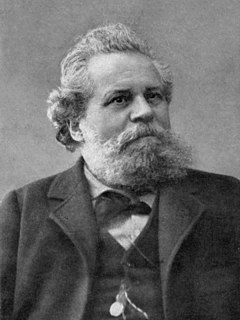
Giosuè Alessandro Giuseppe Carducci was an Italian poet, writer, literary critic and teacher. He was very noticeably influential, and was regarded as the official national poet of modern Italy. In 1906, he became the first Italian to receive the Nobel Prize in Literature. Excerpt from the Swedish Academy's motivation: "[...] not only in consideration of his deep learning and critical research, but above all as a tribute to the creative energy, freshness of style, and lyrical force which characterize his poetic masterpieces".

The Nobel Prize in Literature is a Swedish literature prize that is awarded annually, since 1901, to an author from any country who has, in the words of the will of Swedish industrialist Alfred Nobel, "in the field of literature, produced the most outstanding work in an idealistic direction". Though individual works are sometimes cited as being particularly noteworthy, the award is based on an author's body of work as a whole. The Swedish Academy decides who, if anyone, will receive the prize. The academy announces the name of the laureate in early October. It is one of the five Nobel Prizes established by the will of Alfred Nobel in 1895. Literature is traditionally the final award presented at the Nobel Prize ceremony. On some occasions the award has been postponed to the following year, most recently in 2018 as of May 2022.
Vera Menchik, British-Czechoslovak-Russian chess player (d. 1944) births

Vera Francevna Mencikova, was a Russian-born Czechoslovak chess player who primarily resided in England. She was the first Women's World Chess Champion from 1927 to 1944 and the longest-reigning women's champion in history. Her eight world championship wins are the most of all time, and only Emanuel Lasker had a longer reign as world champion.
Henrietta Barnett, British Women's Royal Air Force officer (d. 1985) births
Air Commandant Dame Mary Henrietta Barnett, known as Henrietta Barnett, was a senior officer of the Women's Royal Air Force (WRAF). From 1956 to 1960, she served as its director.
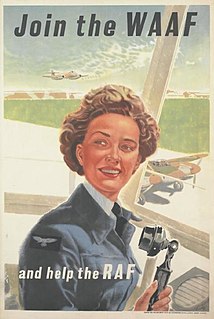
The Women's Auxiliary Air Force (WAAF), whose members were referred to as WAAFs, was the female auxiliary of the Royal Air Force during World War II. Established in 1939, WAAF numbers exceeded 180,000 at its peak strength in 1943, with over 2,000 women enlisting per week.
James Baskett, African-American actor and singer (d. 1948) births
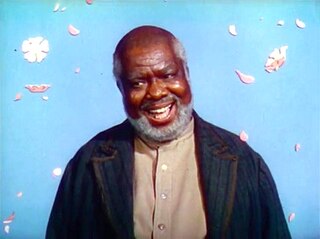
James Franklin Baskett was an American actor who portrayed Uncle Remus, singing the song "Zip-a-Dee-Doo-Dah" in the 1946 Disney feature film Song of the South.
George F. Kennan, American historian and diplomat, United States Ambassador to the Soviet Union (d. 2005) births

George Frost Kennan was an American diplomat and historian. He was best known as an advocate of a policy of containment of Soviet expansion during the Cold War. He lectured widely and wrote scholarly histories of the relations between the USSR and the United States. He was also one of the group of foreign policy elders known as "The Wise Men".

The ambassador of the United States of America to the Russian Federation is the ambassador extraordinary and plenipotentiary from the United States of America to the Russian Federation. Since September 4, 2022, Elizabeth Rood is serving as the chargée d'affaires ad interim after the previous incumbent, John J. Sullivan, stepped down from the role. Sullivan had been confirmed by the United States Senate confirmed on December 12, 2019.
Edgar Bergen, American ventriloquist and actor (d. 1978) births
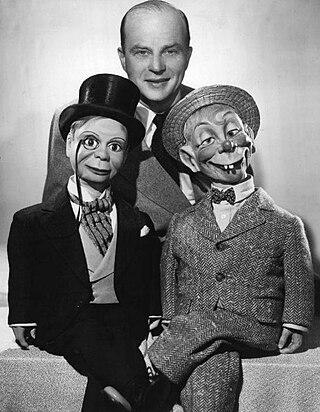
Edgar John Bergen was an American ventriloquist, actor, comedian, vaudevillian and radio performer, best known for his proficiency in ventriloquism and his characters Charlie McCarthy and Mortimer Snerd. He was the father of actress Candice Bergen.
Cyril Vincent, South African cricketer (d. 1968) births

Cyril Leverton Vincent was a South African cricketer who played in 25 Test matches from 1927 to 1935. He was later chairman of the South African selectors.
Wayne King, American singer-songwriter and conductor (d. 1985) births
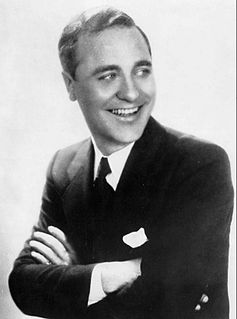
Harold Wayne King was an American musician, songwriter, and bandleader with a long association with both NBC and CBS. He was referred to as "the Waltz King" because much of his most popular music involved waltzes; "The Waltz You Saved for Me" was his standard set-closing song in live performance and on numerous radio broadcasts at the height of his career. King's innovations included converting Carrie Jacobs-Bond's "I Love You Truly" from its original 24 time over to 34.
Chester Morris, American actor (d. 1970) births
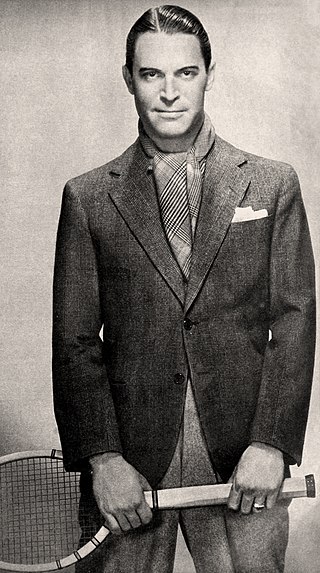
John Chester Brooks Morris was an American stage, film, television, and radio actor. He had some prestigious film roles early in his career, and received an Academy Award nomination for Alibi (1929). Chester Morris is remembered for portraying Boston Blackie, a criminal-turned-detective, in the Boston Blackie film series of the 1940s.
Félix Faure, French merchant and politician, 7th President of France (b. 1841) deaths

Félix François Faure was a French politician who served as President of France from 1895 until his death in 1899. A native of Paris, he worked as a tanner in his younger years. Faure became a member of the Chamber of Deputies for Seine-Inférieure in 1881. He rose to prominence in national politics up until unexpectedly assuming the presidency, during which time France's relations with Russia improved. Writer Émile Zola's famous J'Accuse…! open letter was written to Faure in L'Aurore in 1898 in the course of the Dreyfus affair. Faure's state funeral at Notre-Dame Cathedral on 23 February 1899 was the scene of an attempted coup d'état led by French nationalist poet Paul Déroulède, who was later exiled to Spain.

The president of France, officially the president of the French Republic, is the executive head of state of France, and the commander-in-chief of the French Armed Forces. As the presidency is the supreme magistracy of the country, the position is the highest office in France. The powers, functions and duties of prior presidential offices, in addition to their relation with the prime minister and Government of France, have over time differed with the various constitutional documents since the Second Republic.
Thomas Bracken, Irish-New Zealand journalist, poet, and politician (b. 1843) deaths

Thomas Bracken was an Irish-born New Zealand poet, journalist and politician. He wrote "God Defend New Zealand", one of the two national anthems of New Zealand, and was the first person to publish the phrase "God's Own Country" as applied to New Zealand. He also won the Otago Caledonian Society's prize for poetry.
Eugénie Blanchard, French super-centenarian (d. 2010) births
French supercentenarians are citizens, residents or emigrants from France who have attained or surpassed 110 years of age. As of January 2015, the Gerontology Research Group (GRG) had validated the longevity claims of 161 French supercentenarians. France was home to the oldest human being ever whose longevity is well documented, Jeanne Calment, who lived in Arles for her entire life of 122 years and 164 days.
Katharine Cornell, American actress and producer (d. 1974) births

Katharine Cornell was an American stage actress, writer, theater owner and producer. She was born in Berlin to American parents and raised in Buffalo, New York.
Hans F. K. Günther, German eugenicist and academic (d. 1968) births

Hans Friedrich Karl Günther was a German writer, an advocate of scientific racism and a eugenicist in the Weimar Republic and the Third Reich. He was also known as "Rassengünther" or "Rassenpapst". He is considered to have been a major influence on Nazi racialist thought.
Kathleen Clifford, American actress (d. 1962) births

Kathleen Clifford was an American vaudeville and Broadway stage and film actress of the early twentieth century. She was known for her skills as a male impersonator.
Andy Ducat, English international footballer, manager and cricketer (d. 1942) births

Andrew Ducat was an England and Surrey cricketer and an England footballer, being one of an elite group to have represented their country in both sports. He died while batting at Lord's.
Robert J. Flaherty, American director and producer (d. 1951) births

Robert Joseph Flaherty, was an American filmmaker who directed and produced the first commercially successful feature-length documentary film, Nanook of the North (1922). The film made his reputation and nothing in his later life fully equaled its success, although he continued the development of this new genre of narrative documentary with Moana (1926), set in the South Seas, and Man of Aran (1934), filmed in Ireland's Aran Islands. Flaherty is considered the "father" of both the documentary and the ethnographic film.
Pamela Colman Smith, English occultist and illustrator (d. 1951) births

Pamela Colman Smith, nicknamed "Pixie", was a British artist, illustrator, writer, publisher, and occultist. She is best-known for illustrating the Rider–Waite tarot deck for Arthur Edward Waite. This tarot deck became the standard among tarot card readers, and remains the most widely used today. Smith also illustrated over 20 books, wrote two collections of Jamaican folklore, edited two magazines, and ran the Green Sheaf Press, a small press focused on women writers.
James Colosimo, Italian-American mob boss (d. 1920) births

Vincenzo Colosimo, known as James "Big Jim" Colosimo or as "Diamond Jim", was an Italian-American Mafia crime boss who emigrated from Calabria, Italy, in 1895 and built a criminal empire in Chicago based on prostitution, gambling and racketeering. He gained power through petty crime and by heading a chain of brothels. From about 1902 until his death in 1920, he led a gang that became known after his death as the Chicago Outfit. Colosimo was assassinated on May 11, 1920, and no one was ever charged with his murder. Johnny Torrio, an enforcer whom Colosimo imported in 1909 from New York, seized control of Colosimo's businesses after his death. Al Capone, a close associate of Torrio, has been accused of involvement in Colosimo's murder, but was not yet in Chicago at the time.
Tom Crean, Irish seaman and Antarctic explorer (d. 1938) births

Thomas Crean was an Irish seaman and Antarctic explorer who was awarded the Albert Medal for Lifesaving (AM).
G. M. Trevelyan, English historian and academic (d. 1962) births

George Macaulay Trevelyan was a British historian and academic. He was a Fellow of Trinity College, Cambridge, from 1898 to 1903. He then spent more than twenty years as a full-time author. He returned to the University of Cambridge and was Regius Professor of History from 1927 to 1943. He served as Master of Trinity College from 1940 to 1951. In retirement, he was Chancellor of Durham University.
Radoje Domanović, Serbian journalist and author (d. 1908) births

Radoje Domanović was a Serbian writer and teacher, most famous for his satirical short stories. His adult years were a constant fight against tuberculosis. This circumstance of his life, and the affection which he inspired in all who knew him, created an aura of romanticism and sentimentality which stand in contrast to his literary accomplishments as a satirist and a powerful critic of the contemporary Serbian society.
Edward S. Curtis, American ethnologist and photographer (d. 1952) births
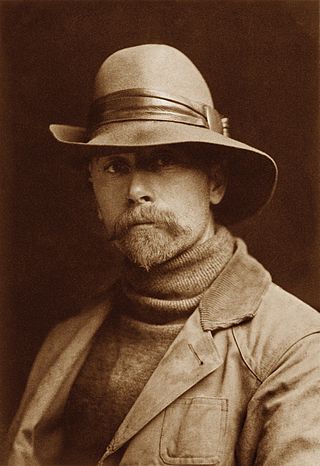
Edward Sherriff Curtis was an American photographer and ethnologist whose work focused on the American West and on Native American people. Sometimes referred to as the "Shadow Catcher", Curtis traveled the United States to document and record the dwindling ways of life of various native tribes through photographs and audio recordings.
Billy Hamilton, American baseball player and manager (d. 1940) births

William Robert Hamilton, nicknamed Sliding Billy, was an American professional baseball player in Major League Baseball (MLB) during the 19th-century. He played for the Kansas City Cowboys, Philadelphia Phillies and Boston Beaneaters between 1888 and 1901.
William Pennington American lawyer and politician, 13th Governor of New Jersey, 23rd Speaker of the United States House of Representatives (b. 1796) deaths

William Pennington was an American politician and lawyer. He was the 13th governor of New Jersey from 1837 to 1843. He served one term in the United States House of Representatives, during which he served as Speaker of the House from 1860 to 1861.

The governor of New Jersey is the head of government of New Jersey. The office of governor is an elected position with a four-year term. There is a two consecutive term term limit, with no limitation on non-consecutive terms. The official residence of the governor is Drumthwacket, a mansion located in Princeton, New Jersey. The governor’s office is located inside of the New Jersey State House in Trenton, making New Jersey notable as the executive’s office is located in the same building as the legislature. New Jersey is also notable for being one of the few states in which the governor’s official residence is not located in the state capital.

The speaker of the United States House of Representatives, commonly known as the speaker of the House, is the presiding officer of the United States House of Representatives. The office was established in 1789 by Article I, Section 2 of the U.S. Constitution. The speaker is the political and parliamentary leader of the House and is simultaneously its presiding officer, de facto leader of the body's majority party, and the institution's administrative head. Speakers also perform various other administrative and procedural functions. Given these several roles and responsibilities, the speaker usually does not personally preside over debates. That duty is instead delegated to members of the House from the majority party. Nor does the speaker regularly participate in floor debates.
Ossian Everett Mills, American academic, founded Phi Mu Alpha Sinfonia (d. 1920) births

Ossian Everett Mills was the founder of Phi Mu Alpha Sinfonia Fraternity of America, at the New England Conservatory of Music in Boston, Massachusetts, on October 6, 1898.
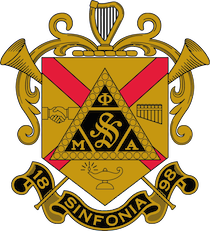
Phi Mu Alpha Sinfonia Fraternity of America (ΦΜΑ) is an American collegiate social fraternity for men with a special interest in music. The fraternity is open to men "who, through a love for music, can assist in the fulfillment of [its] Object and ideals either by adopting music as a profession, or by working to advance the cause of music in America." Phi Mu Alpha has initiated more than 260,000 members, known as Sinfonians, and the fraternity currently has over 7,000 active collegiate members in 249 collegiate chapters throughout the United States.
Hugo de Vries, Dutch botanist, geneticist, and academic (d. 1935) births

Hugo Marie de Vries was a Dutch botanist and one of the first geneticists. He is known chiefly for suggesting the concept of genes, rediscovering the laws of heredity in the 1890s while apparently unaware of Gregor Mendel's work, for introducing the term "mutation", and for developing a mutation theory of evolution.
Octave Mirbeau, French journalist, novelist, and playwright (d. 1917) births

Octave Mirbeau was a French novelist, art critic, travel writer, pamphleteer, journalist and playwright, who achieved celebrity in Europe and great success among the public, whilst still appealing to the literary and artistic avant-garde with highly transgressive novels that explored violence, abuse and psychological detachment. His work has been translated into 30 languages.
George Kennan, American journalist and explorer (d. 1924) births
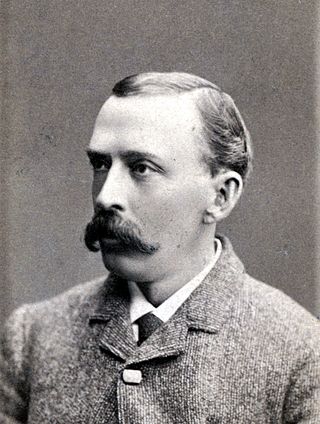
George Kennan was an American explorer noted for his travels in the Kamchatka and Caucasus regions of the Russian Empire. He was a cousin twice removed of the American diplomat and historian George F. Kennan, whose birthday he shared.
Henry M. Leland, American engineer and businessman, founded Cadillac and Lincoln (d. 1932) births
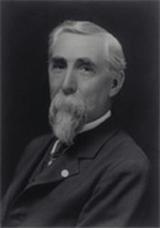
Henry Martyn Leland was an American machinist, inventor, engineer and automotive entrepreneur. He founded the two premier American luxury automotive marques, Cadillac and Lincoln.

The Cadillac Motor Car Division is a division of the American automobile manufacturer General Motors (GM) that designs and builds luxury vehicles. Its major markets are the United States, Canada, and China. Cadillac models are distributed in 34 additional markets worldwide. Cadillac automobiles are at the top of the luxury field within the United States. In 2019, Cadillac sold 390,458 vehicles worldwide, a record for the brand.

Lincoln Motor Company, or simply Lincoln, is the luxury vehicle division of American automobile manufacturer Ford. Marketed among the top luxury vehicle brands in the United States, Lincoln was positioned closely against its General Motors counterpart Cadillac. The division helped to establish the personal luxury car segment with the 1940 Lincoln Continental.
Armand Guillaumin, French painter (d. 1927) births

Armand Guillaumin was a French impressionist painter and lithographer.
Henry Adams, American journalist, historian, and author (d. 1918) births
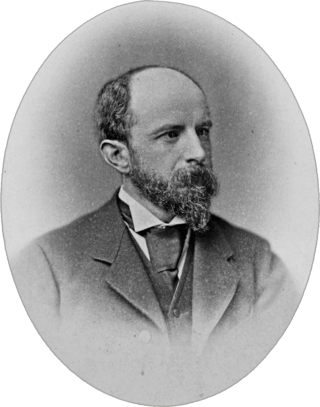
Henry Brooks Adams was an American historian and a member of the Adams political family, descended from two U.S. Presidents.
Ernst Haeckel, German biologist, physician, and philosopher (d. 1919) births
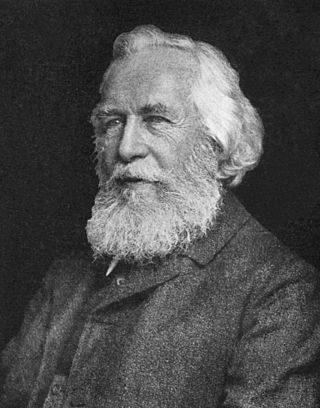
Ernst Heinrich Philipp August Haeckel was a German zoologist, naturalist, eugenicist, philosopher, physician, professor, marine biologist and artist. He discovered, described and named thousands of new species, mapped a genealogical tree relating all life forms and coined many terms in biology, including ecology, phylum, phylogeny, and Protista. Haeckel promoted and popularised Charles Darwin's work in Germany and developed the influential but no longer widely held recapitulation theory claiming that an individual organism's biological development, or ontogeny, parallels and summarises its species' evolutionary development, or phylogeny.
Nikolai Leskov, Russian author, playwright, and journalist (d. 1895) births
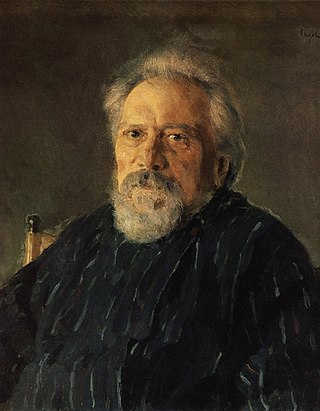
Nikolai Semyonovich Leskov was a Russian novelist, short-story writer, playwright, and journalist, who also wrote under the pseudonym M. Stebnitsky. Praised for his unique writing style and innovative experiments in form, and held in high esteem by Leo Tolstoy, Anton Chekhov and Maxim Gorky among others, Leskov is credited with creating a comprehensive picture of contemporary Russian society using mostly short literary forms. His major works include Lady Macbeth of Mtsensk (1865), The Cathedral Folk (1872), The Enchanted Wanderer (1873), and "The Tale of Cross-eyed Lefty from Tula and the Steel Flea" (1881).
Lars Hertervig, Norwegian painter (d. 1902) births

Lars Hertervig was a Norwegian painter. His semi-fantastical work with motives from the coastal landscape in the traditional district of Ryfylke is regarded as one of the peaks of Norwegian painting.
Joseph Victor von Scheffel, German poet and author (d. 1886) births
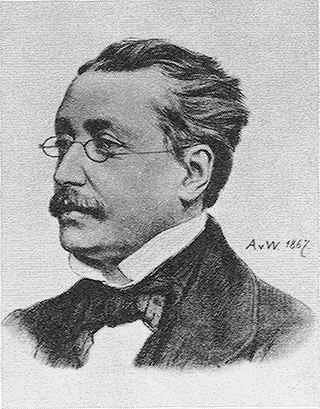
Joseph Victor von Scheffel was a German poet and novelist.
Peter Kosler, Slovenian lawyer, geographer, and cartographer (d. 1879) births

Peter Kosler or Kozler was a Carniolan lawyer, geographer, cartographer, activist, and businessman. He was of ethnic German origin, but also identified with Slovene culture and advocated the peaceful coexistence of the Slovene and German cultures in Carniola.
Francis Galton, English biologist and statistician (d. 1911) births

Sir Francis Galton, FRS FRAI, was an English Victorian era polymath: a statistician, sociologist, psychologist, anthropologist, tropical explorer, geographer, inventor, meteorologist, proto-geneticist, psychometrician and a proponent of social Darwinism, eugenics, and scientific racism. He was knighted in 1909.
Heinrich Barth, German explorer and scholar (d. 1865) births
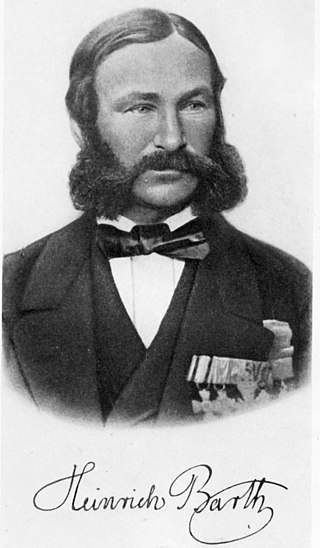
Johann Heinrich Barth was a German explorer of Africa and scholar.
Georg Carl von Döbeln, Swedish general (b. 1758) deaths

Georg Carl von Döbeln was a Swedish friherre (baron), Lieutenant general and above all known for his efforts on the Swedish side during the Finnish War.
Henry Wilson, American colonel and politician, 18th Vice President of the United States (d. 1875) births

Henry Wilson was an American politician who was the 18th vice president of the United States from 1873 until his death in 1875 and a senator from Massachusetts from 1855 to 1873. Before and during the American Civil War, he was a leading Republican, and a strong opponent of slavery. Wilson devoted his energies to the destruction of "Slave Power", the faction of slave owners and their political allies which anti-slavery Americans saw as dominating the country.

The vice president of the United States (VPOTUS) is the second-highest officer in the executive branch of the U.S. federal government, after the president of the United States, and ranks first in the presidential line of succession. The vice president is also an officer in the legislative branch, as the president of the Senate. In this capacity, the vice president is empowered to preside over Senate deliberations at any time, but may not vote except to cast a tie-breaking vote. The vice president is indirectly elected together with the president to a four-year term of office by the people of the United States through the Electoral College.
Karl Theodor Ernst von Siebold, German physiologist and zoologist (d. 1885) births

Prof Karl (Carl) Theodor Ernst von Siebold FRS(For) HFRSE was a German physiologist and zoologist. He was responsible for the introduction of the taxa Arthropoda and Rhizopoda, and for defining the taxon Protozoa specifically for single-celled organisms.
Phineas Quimby, American mystic and philosopher (d. 1866) births

Phineas Parkhurst Quimby was an American clockmaker, mentalist and mesmerist. His work is widely recognized as foundational to the New Thought spiritual movement.
Maria Pavlovna, Russian Grand Duchess (d. 1859) births

Maria Pavlovna was born a grand duchess of Russia as the daughter of Paul I, Emperor of all the Russias and later became the Grand Duchess of Saxe-Weimar-Eisenach by her marriage to Charles Frederick of Saxe-Weimar-Eisenach (1783–1853).
Pierre Rode, French violinist and composer (d. 1830) births

Jacques Pierre Joseph Rode was a French violinist and composer.
Jean-Charles Pichegru, French general (d. 1804) births

Jean-Charles Pichegru was a French general of the Revolutionary Wars. Under his command, French troops overran Belgium and the Netherlands before fighting on the Rhine front. His royalist positions led to his loss of power and imprisonment in Cayenne, French Guiana during the Coup of 18 Fructidor in 1797. After escaping into exile in London and joining the staff of Alexander Korsakov, he returned to France and planned the Pichegru Conspiracy to remove Napoleon from power, which led to his arrest and death. Despite his defection, his surname is one of the names inscribed under the Arc de Triomphe, on Column 3.
Richard Mead, English physician (b. 1673) deaths

Richard Mead, FRS, FRCP, was an English physician. His work, A Short Discourse concerning Pestilential Contagion, and the Method to be used to prevent it (1720), was of historic importance in the understanding of transmissible diseases.
Giambattista Bodoni, Italian publisher and engraver (d. 1813) births

Giambattista Bodoni was an Italian typographer, type-designer, compositor, printer, and publisher in Parma.
Nikolaus Joseph von Jacquin, Austrian botanist, chemist, and mycologist (d. 1817) births
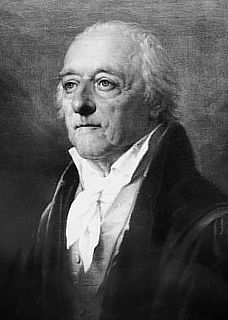
Nikolaus Joseph Freiherr von Jacquin was a scientist who studied medicine, chemistry and botany.
James Craggs the Younger, English politician, Secretary of State for the Southern Department (b. 1686) deaths

James Craggs the Younger, was an English politician.

The Secretary of State for the Southern Department was a position in the cabinet of the government of the Kingdom of Great Britain up to 1782, when the Southern Department became the Home Office.
Esprit Fléchier, French bishop and author (b. 1632) deaths

Esprit Fléchier was a French preacher and author, Bishop of Nîmes from 1687 to 1710.
Pierre Bouguer, French mathematician, geophysicist, and astronomer (d. 1758) births

Pierre Bouguer was a French mathematician, geophysicist, geodesist, and astronomer. He is also known as "the father of naval architecture".
Gonzalo Fernández de Córdoba, Spanish general and politician, 24th Governor of the Duchy of Milan (b. 1585) deaths

Gonzalo Andrés Domingo Fernández de Córdoba was one of the main Spanish military leaders during the Eighty Years' War,[?] Thirty Years' War, and the War of the Mantuan Succession.
The governor of Milan ruled the Duchy of Milan as a representative of the Holy Roman Emperor (1535–1556), the King of Spain (1556–1706) and the Archduke of Austria (1706–1796) and (1799–1800). The first governor was appointed after the death of the last duke of the House of Sforza, Francesco II.
John Sharp, English archbishop (d. 1714) births

John Sharp, English divine who served as Archbishop of York.
Frederick William, Elector of Brandenburg (d. 1688) births

Frederick William was Elector of Brandenburg and Duke of Prussia, thus ruler of Brandenburg-Prussia, from 1640 until his death in 1688. A member of the House of Hohenzollern, he is popularly known as "the Great Elector" because of his military and political achievements. Frederick William was a staunch pillar of the Calvinist faith, associated with the rising commercial class. He saw the importance of trade and promoted it vigorously. His shrewd domestic reforms gave Prussia a strong position in the post-Westphalian political order of north-central Europe, setting Prussia up for elevation from duchy to kingdom, achieved under his son and successor.
Gonzalo Jiménez de Quesada, Spanish explorer (b. 1509) deaths

Gonzalo Jiménez de Quesada y Rivera, also spelled as Ximénez and De Quezada, was a Spanish explorer and conquistador in northern South America, territories currently known as Colombia. He explored the territory named by him New Kingdom of Granada, and founded its capital, Santafé de Bogotá. As a well-educated lawyer he was one of the intellectuals of the Spanish conquest. He was an effective organizer and leader, designed the first legislation for the government of the area, and was its historian. He was governor of Cartagena between 1556 and 1557, and after 1569 he undertook explorations toward the east, searching for the elusive El Dorado. The campaign didn't succeed and Jiménez then returned to New Granada in 1573. He has been suggested as a possible model for Cervantes' Don Quixote.
Jean du Bellay, French cardinal and diplomat (b. 1493) deaths
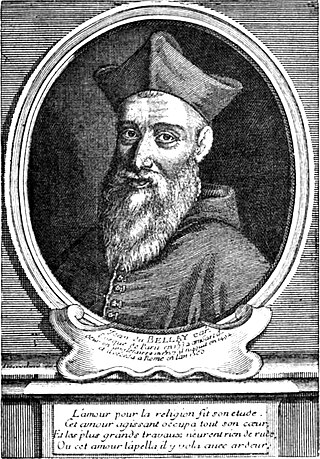
Jean du Bellay was a French diplomat and cardinal, a younger brother of Guillaume du Bellay, and cousin and patron of the poet Joachim du Bellay. He was bishop of Bayonne by 1526, member of the Conseil privé of King Francis I from 1530, and bishop of Paris from 1532. He became Bishop of Ostia and Dean of the College of Cardinals in 1555.
Kanō Eitoku, Japanese painter and educator (d. 1590) births

Kanō Eitoku was a Japanese painter who lived during the Azuchi–Momoyama period of Japanese history and one of the most prominent patriarchs of the Kanō school of Japanese painting.
Johannes Stöffler, German mathematician and astronomer (b. 1452) deaths
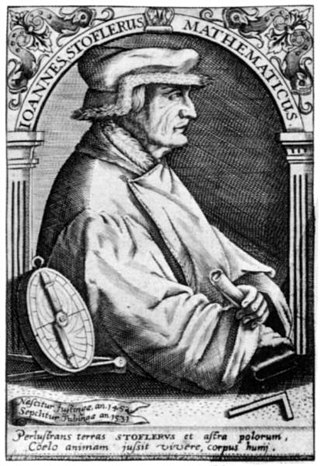
Johannes Stöffler was a German mathematician, astronomer, astrologer, priest, maker of astronomical instruments and professor at the University of Tübingen.
Gaspard II de Coligny, French admiral (d. 1572) births

Gaspard de Coligny, Seigneur de Châtillon, was a French nobleman, Admiral of France, and Huguenot leader during the French Wars of Religion. He served under kings Francis I and Henry II during the Italian Wars, attaining great prominence both due to his military skill and his relationship with his uncle, the king's favourite Anne de Montmorency. During the reign of Francis II he converted to Protestantism, becoming a leading noble advocate for the Reformation during the early reign of Charles IX.
Georg Joachim Rheticus, Austrian cartographer and instrument maker (d. 1574) births
Georg Joachim de Porris, also known as Rheticus, was a mathematician, astronomer, cartographer, navigational-instrument maker, medical practitioner, and teacher. He is perhaps best known for his trigonometric tables and as Nicolaus Copernicus's sole pupil. He facilitated the publication of his master's De revolutionibus orbium coelestium.
Philip Melanchthon, German astronomer, theologian, and academic (d. 1560) births
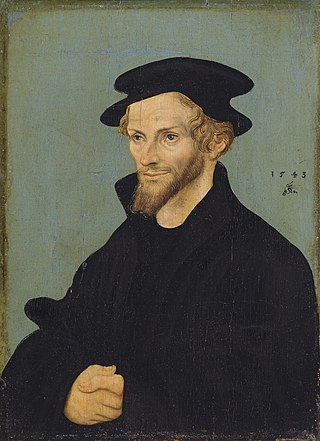
Philip Melanchthon was a German Lutheran reformer, collaborator with Martin Luther, the first systematic theologian of the Protestant Reformation, intellectual leader of the Lutheran Reformation, and an influential designer of educational systems. He stands next to Luther and John Calvin as a reformer, theologian, and moulder of Protestantism.
Krishnadevaraya, emperor of the Vijayanagara Empire (d. 1529) births

Krishnadevaraya was an emperor of the Vijayanagara Empire, also known as the Karnata Empire, reigning from 1509 to 1529. He was the third monarch of the Tuluva dynasty, and is considered to be one of the greatest rulers in Indian history. He ruled the largest empire in India after the decline of the Delhi Sultanate. Presiding over the empire at its zenith, he is regarded as an icon by many Indians. Krishnadevaraya earned the titles Karnatakaratna Simhasanadeeshwara, Yavana Rajya Pratistapanacharya, Kannada Rajya Rama Ramana, Andhra Bhoja, Gaubrahmana Pratipalaka and Mooru Rayara Ganda. He became the dominant ruler of the peninsula by defeating the sultans of Bijapur, Golconda, the Bahmani Sultanate and the Gajapatis of Odisha, and was one of the most powerful Hindu rulers in India.
Eric I, Duke of Brunswick-Lüneburg (d. 1540) births

Eric I, the Elder was Duke of Duke of Brunswick-Lüneburg from 1495 and the first reigning prince of Calenberg-Göttingen.
John I, Duke of Cleves (d. 1481) births

John I, Duke of Cleves, Count of Mark. Jean de Belliqueux (warlike), was Duke of Cleves and Count of Mark.
John V Palaiologos, Byzantine emperor (b. 1332) deaths

John V Palaiologos or Palaeologus was Byzantine emperor from 1341 to 1391.
Rupert I, Elector Palatine (b. 1309) deaths

Rupert I "the Red", Elector Palatine was Count Palatine of the Rhine from 1353 to 1356, and Elector Palatine from 10 January 1356 to 16 February 1390.
Coluccio Salutati, Italian political leader (d. 1406) births
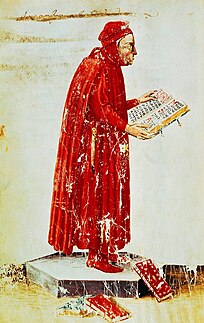
Coluccio Salutati was an Italian humanist and notary, and one of the most important political and cultural leaders of Renaissance Florence; as chancellor of the Republic and its most prominent voice, he was effectively the permanent secretary of state in the generation before the rise of the Medici.
Jayaatu Khan Tugh Temür, Chinese emperor (d. 1332) births
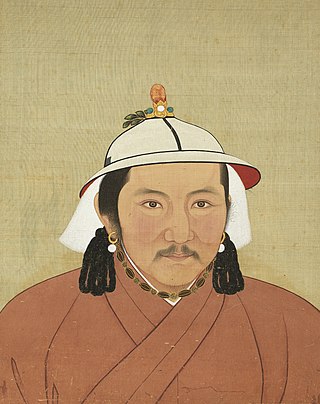
Jayaatu Khan, born Tugh Temür, also known by the temple name Wenzong, was an emperor of the Yuan dynasty of China. Apart from Emperor of China, he is regarded as the 12th Great Khan of the Mongol Empire, although it was only nominal due to the division of the empire.
Gertrude of Hohenberg, queen consort of Germany (b. c.1225) deaths

Gertrude Anne of Hohenberg was German queen from 1273 until her death, by her marriage with King Rudolf I of Germany. As queen consort, she became progenitor of the Austrian House of Habsburg.
Afonso III of Portugal (b. 1210) deaths

Afonso III, or Affonso, Alfonso or Alphonso (Portuguese-Galician) or Alphonsus (Latin), the Boulonnais, King of Portugal was the first to use the title King of Portugal and the Algarve, from 1249. He was the second son of King Afonso II of Portugal and his wife, Urraca of Castile; he succeeded his brother, King Sancho II of Portugal, who died on 4 January 1248.
Henry Raspe, Landgrave of Thuringia (b. 1204) deaths

Henry Raspe was the Landgrave of Thuringia from 1231 until 1239 and again from 1241 until his death. In 1246, with the support of the Papacy, he was elected King of Germany in opposition to Conrad IV, but his contested reign lasted a mere nine months.
Nichiren, founder of Nichiren Buddhism (d. 1282) births
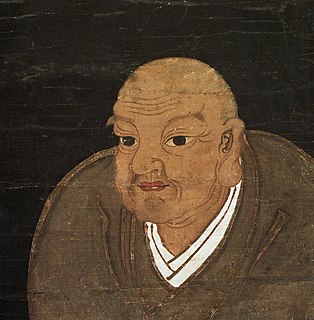
Nichiren was a Japanese Buddhist priest and philosopher of the Kamakura period.
Richard of Dover, Archbishop of Canterbury deaths
Richard was a medieval Benedictine monk and Archbishop of Canterbury. Employed by Thomas Becket immediately before Becket's death, Richard arranged for Becket to be buried in Canterbury Cathedral and eventually succeeded Becket at Canterbury in a contentious election. Much of Richard's time as archbishop was spent in a dispute with Roger de Pont L'Evêque, the Archbishop of York over the primacy of England, and with St Augustine's Abbey in Canterbury over the archbishop's jurisdiction over the abbey. Richard had better relations with King Henry II of England than Becket had, and was employed by the king on diplomatic affairs. Richard also had the trust of the papacy, and served as a judge for the papacy. Several of his questions to Pope Alexander III were collected into the Decretals, a collection of ecclesiastical laws, and his patronage of canon lawyers did much to advance the study of canon law in England.
Mary the Younger, Byzantine saint (b. 875) deaths
Saint Mary the Younger was a Byzantine saint of Armenian origin, the daughter of an Armenian noble. Some details of her life, including her following after the mid-10th century, are not known for certain; the text documenting some of her most noteworthy accomplishments was most likely written after 1025. It has been suggested that the Life of Mary is a parody of Gregory of Nyssa's Life of Macrina.
Zhu Yi, Chinese general (b. 483) deaths
Zhu Yi, courtesy name Yanhe (彥和), was an official of the Chinese dynasty Liang Dynasty in the Southern and Northern Dynasties period. He was greatly trusted by Emperor Wu in Emperor Wu's old age. He is often depicted by historians as corrupt and duplicitous, as well as a reason for Liang's downfall.
Christian feast day: Abda of Edessa
Abda was bishop of Edessa. He is commemorated as a saint by the Syriac Orthodox Church in the Martyrology of Rabban Sliba, and his feast day is 16 February. The French scholar Jean Maurice Fiey notes there are two bishops of Edessa of the same name listed by Michael the Syrian's Chronicle, of whom neither have any notable actions or precise dates with which to identify them by.
Christian feast day: Elias and companions
Elias and four companions, Daniel, Isaiah, Jeremiah, and Samuel were Egyptian martyrs. Their feast day is February 16.
Christian feast day: Juliana of Nicomedia (Catholic Church)

Saint Juliana of Nicomedia is said to have suffered Christian martyrdom during the Diocletianic persecution in 304. She was popular in the Middle Ages, especially in the Netherlands, as the patron saint of sickness.

The Catholic Church, also known as the Roman Catholic Church, is the largest Christian church, with 1.3 billion baptized Catholics worldwide as of 2019. As the world's oldest and largest continuously functioning international institution, it has played a prominent role in the history and development of Western civilization. The church consists of 24 sui iuris churches, including the Latin Church and 23 Eastern Catholic Churches, which comprise almost 3,500 dioceses and eparchies located around the world. The pope, who is the bishop of Rome, is the chief pastor of the church. The bishopric of Rome, known as the Holy See, is the central governing authority of the church. The administrative body of the Holy See, the Roman Curia, has its principal offices in Vatican City, a small enclave of the Italian city of Rome, of which the pope is head of state.
Christian feast day: Onesimus

Onesimus, also called Onesimus of Byzantium and The Holy Apostle Onesimus in the Eastern Orthodox Church, was probably a slave to Philemon of Colossae, a man of Christian faith. He may also be the same Onesimus named by Ignatius of Antioch as bishop in Ephesus which would put Onesimus's death closer to 95. If so, Onesimus went from slave to brother to bishop.
Christian feast day: Charles Todd Quintard (Episcopal Church (USA))
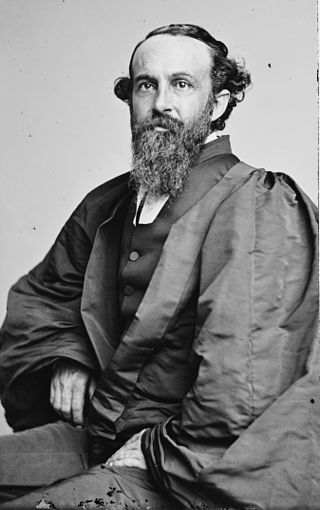
Charles Todd Quintard was an American physician and clergyman who became the second bishop of the Episcopal Diocese of Tennessee and the first Vice-Chancellor of the University of the South.

The Episcopal Church, based in the United States with additional dioceses elsewhere, is a member church of the worldwide Anglican Communion. It is a mainline Protestant denomination and is divided into nine provinces. The presiding bishop of the Episcopal Church is Michael Bruce Curry, the first African-American bishop to serve in that position.
Christian feast day: February 16 (Eastern Orthodox liturgics)

·
Day of the Shining Star (Kim Jong-il's Birthday) (North Korea)

The Day of the Shining Star is a public holiday in North Korea falling on 16 February, the anniversary of the birth of the country's second leader, Kim Jong-il. Along with the Day of the Sun, the birthday of his father Kim Il-sung, it is the most important public holiday in the country.

North Korea, officially the Democratic People's Republic of Korea (DPRK), is a country in East Asia. It constitutes the northern half of the Korean Peninsula and shares borders with China and Russia to the north, at the Yalu (Amnok) and Tumen rivers, and South Korea to the south at the Korean Demilitarized Zone. North Korea's border with South Korea is a disputed border as both countries claim the entirety of the Korean Peninsula. The country's western border is formed by the Yellow Sea, while its eastern border is defined by the Sea of Japan. North Korea, like its southern counterpart, claims to be the legitimate government of the entire peninsula and adjacent islands. Pyongyang is the capital and largest city.
Restoration of Lithuania's Statehood Day, celebrate the independence of Lithuania from Russia and Germany in 1918 (Lithuania)

The Act of Independence of Lithuania or the Act of February 16, also the Lithuanian Resolution on Independence, was signed by the Council of Lithuania on February 16, 1918, proclaiming the restoration of an independent State of Lithuania, governed by democratic principles, with Vilnius as its capital. The Act was signed by all twenty representatives of the Council, which was chaired by Jonas Basanavičius. The Act of February 16 was the result of a series of resolutions on the issue, including one issued by the Vilnius Conference and the Act of January 8. The path to the Act was long and complex because the German Empire exerted pressure on the Council to form an alliance. The Council had to carefully maneuver between the Germans, whose troops were present in Lithuania, and the demands of the Lithuanian people.

Lithuania, officially the Republic of Lithuania, is a country in the Baltic region of Europe. It is one of three Baltic states and lies on the eastern shore of the Baltic Sea. Lithuania shares land borders with Latvia to the north, Belarus to the east and south, Poland to the south, and Russia to the southwest. It has a maritime border with Sweden to the west on the Baltic Sea. Lithuania covers an area of 65,300 km2 (25,200 sq mi), with a population of 2.8 million. Its capital and largest city is Vilnius; other major cities are Kaunas and Klaipėda. Lithuanians belong to the ethno-linguistic group of the Balts and speak Lithuanian, one of only a few living Baltic languages.
Elizabeth Peratrovich Day (Alaska)

Elizabeth Peratrovich was an American civil rights activist, Grand President of the Alaska Native Sisterhood, and member of the Tlingit nation who worked for equality on behalf of Alaska Natives. In the 1940s, her advocacy was credited as being instrumental in the passing of Alaska's Anti-Discrimination Act of 1945, the first state or territorial anti-discrimination law enacted in the United States.

Alaska is a state located in the Western United States on the northwest extremity of North America. A semi-exclave of the U.S., it borders the Canadian province of British Columbia and the Yukon territory to the east; it also shares a maritime border with the Russian Federation's Chukotka Autonomous Okrug to the west, just across the Bering Strait. To the north are the Chukchi and Beaufort Seas of the Arctic Ocean, while the Pacific Ocean lies to the south and southwest.